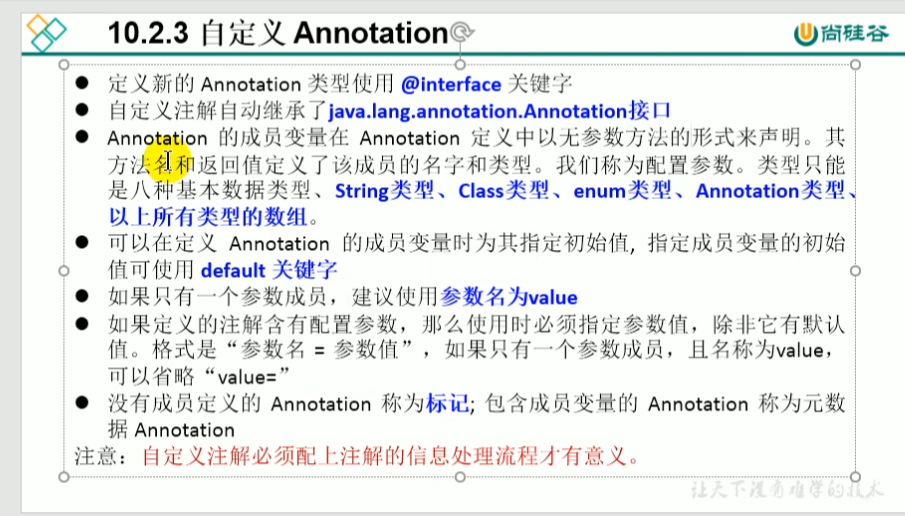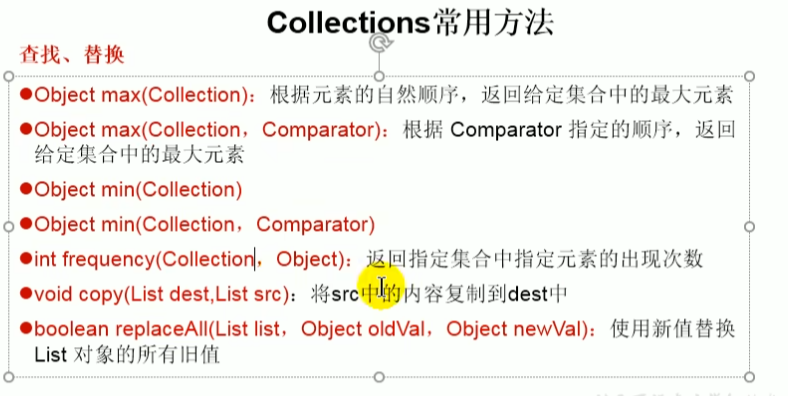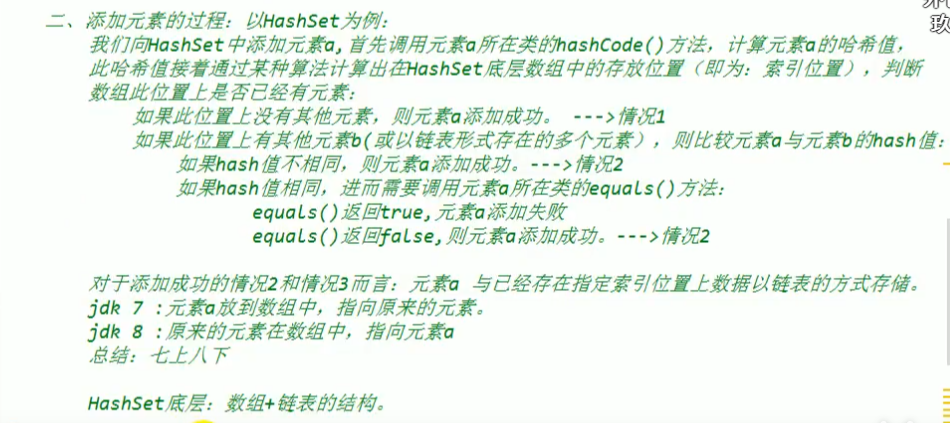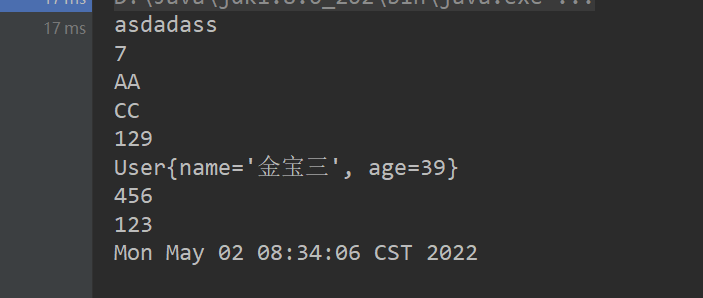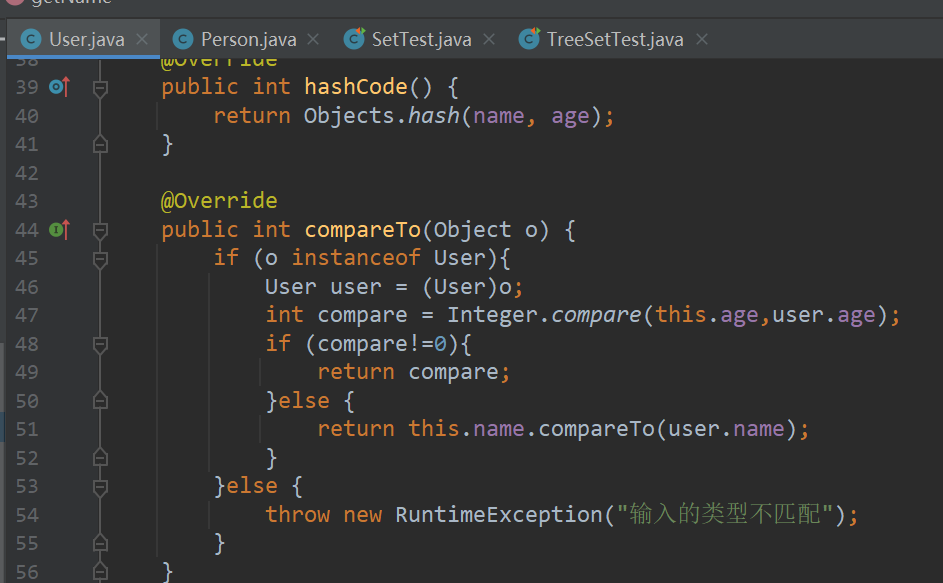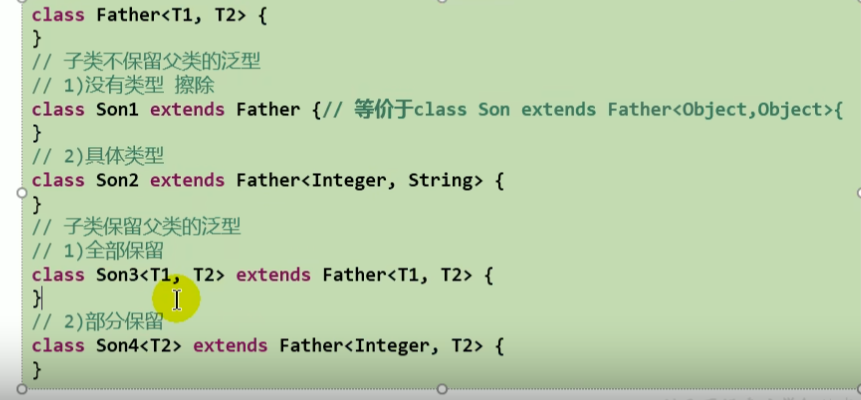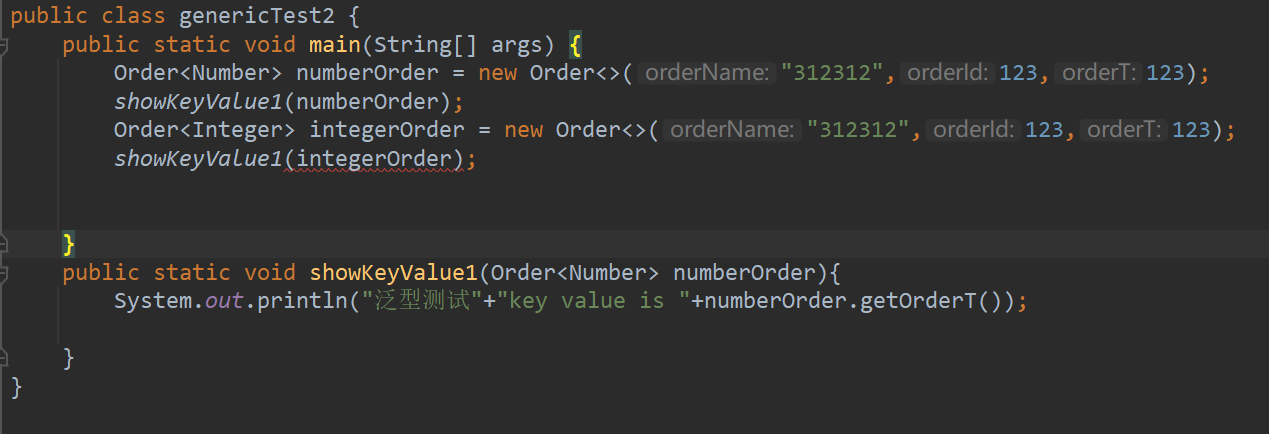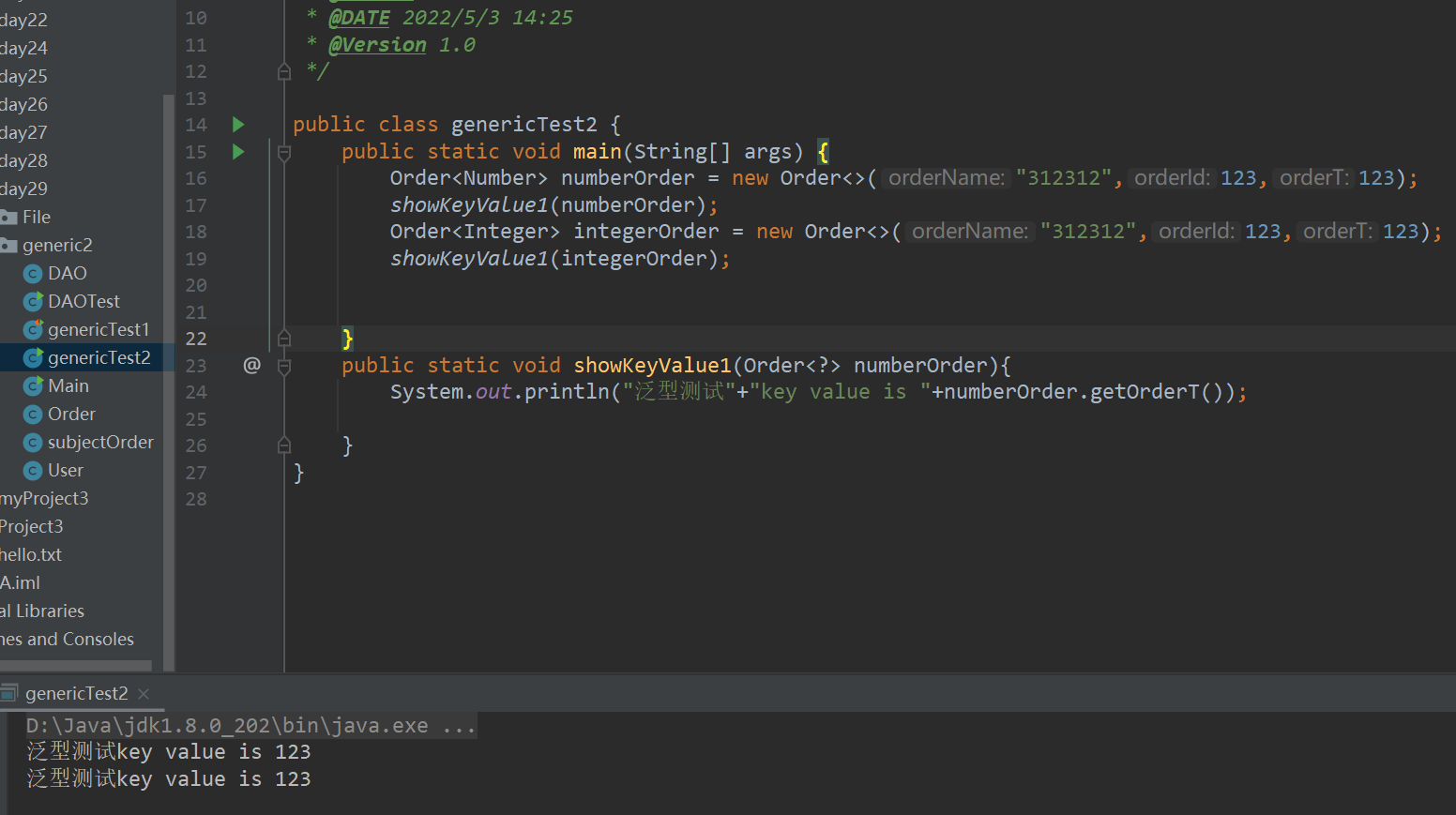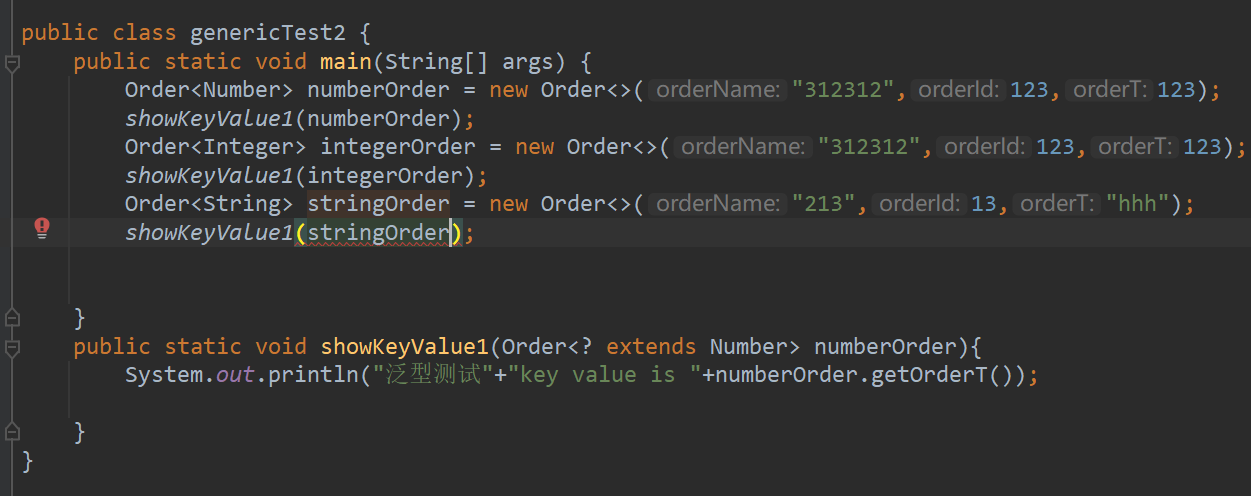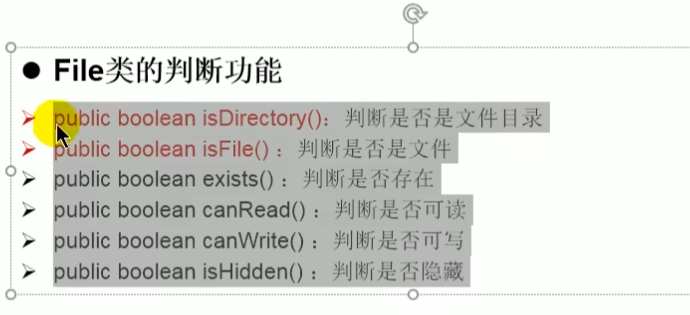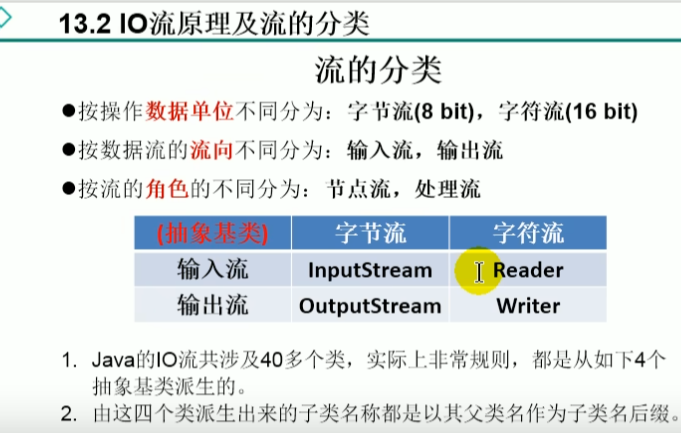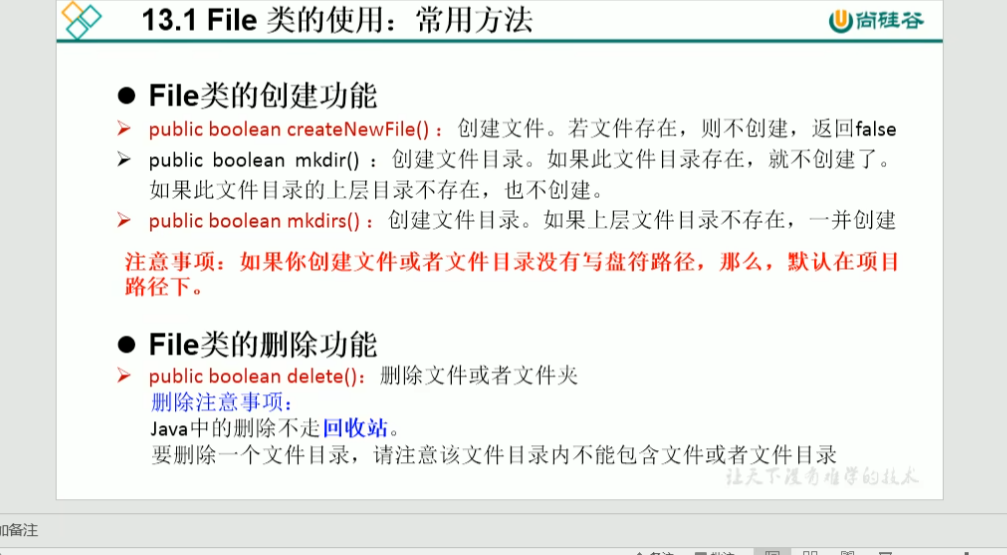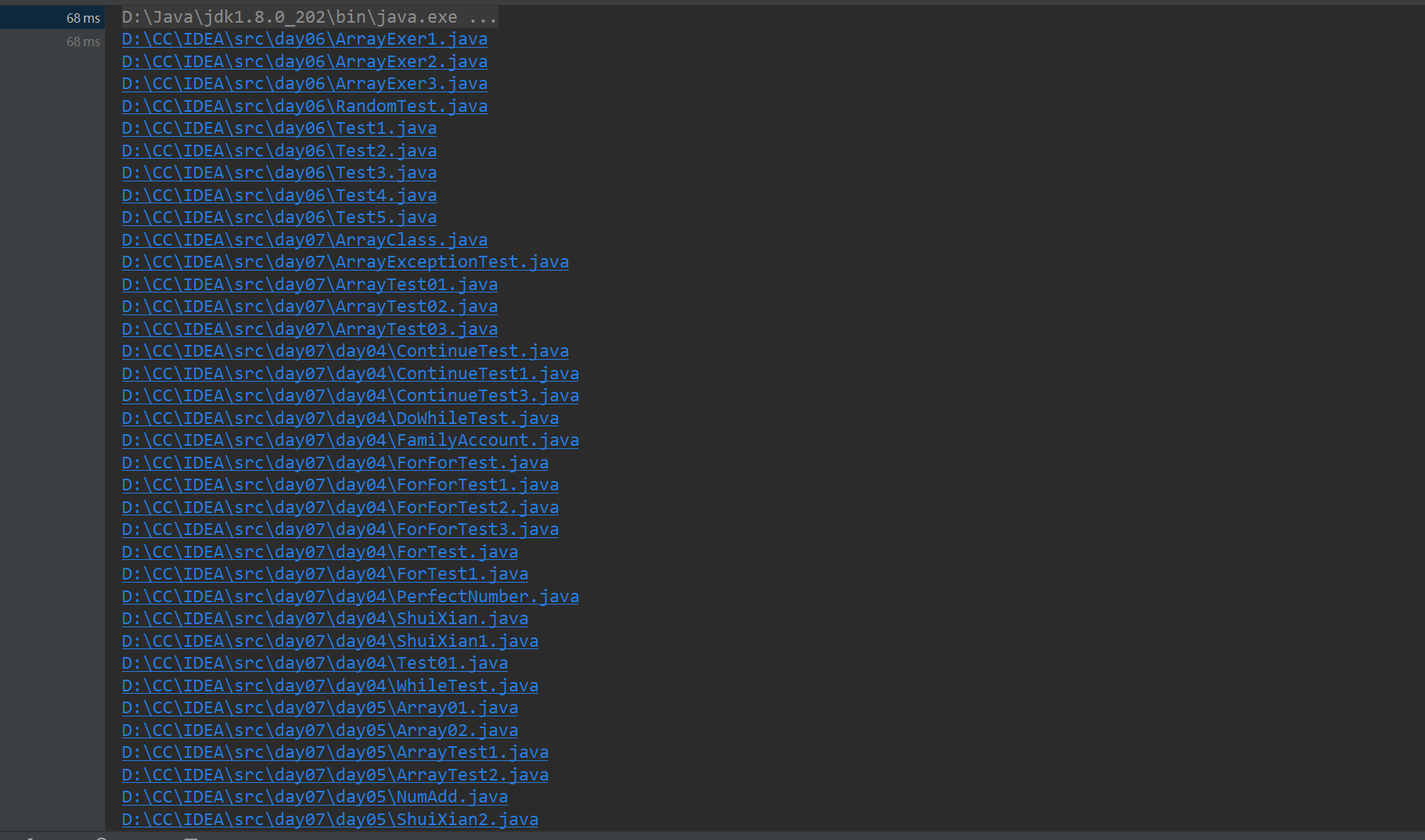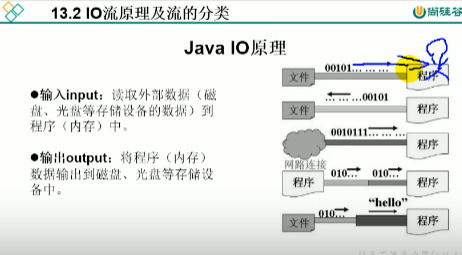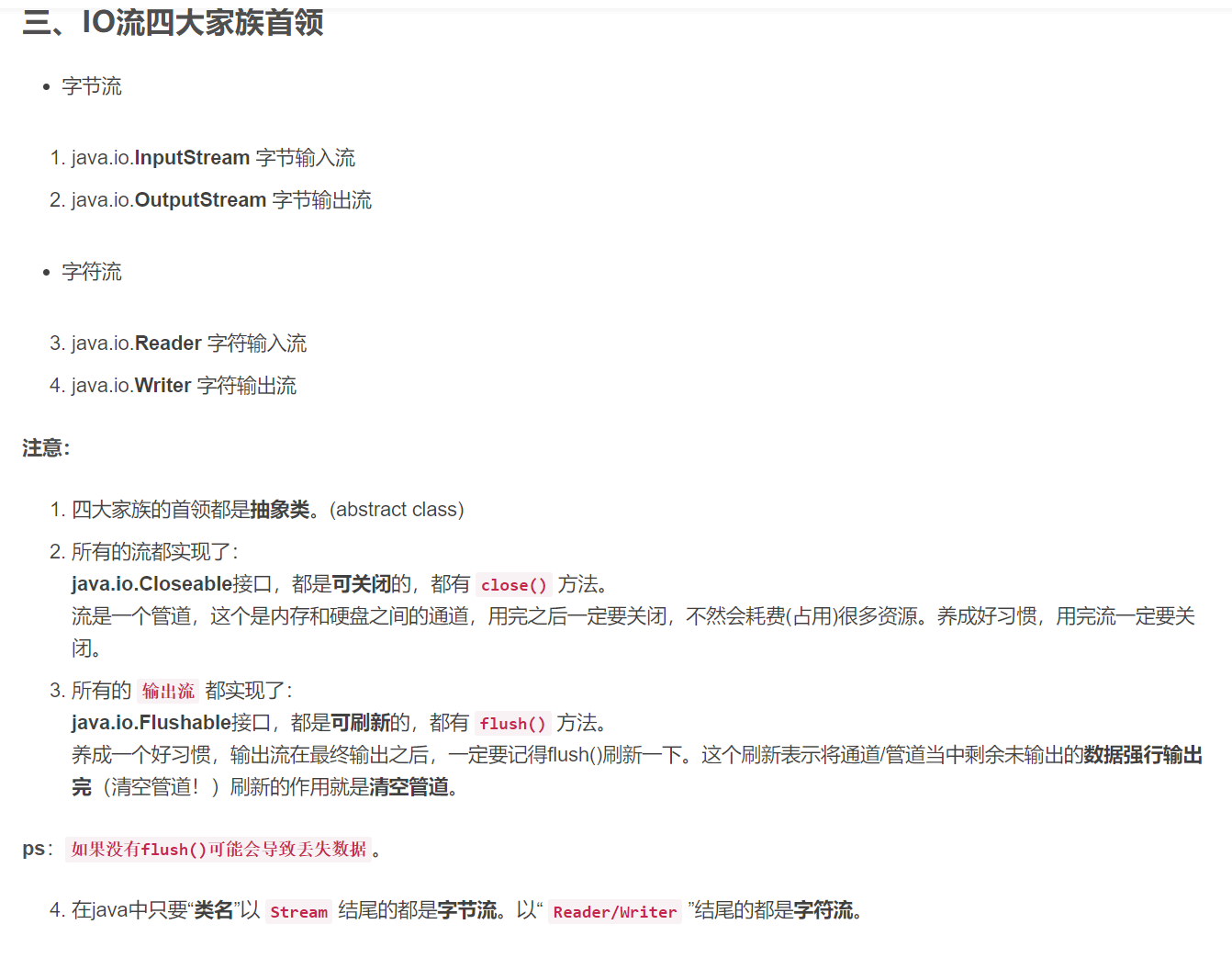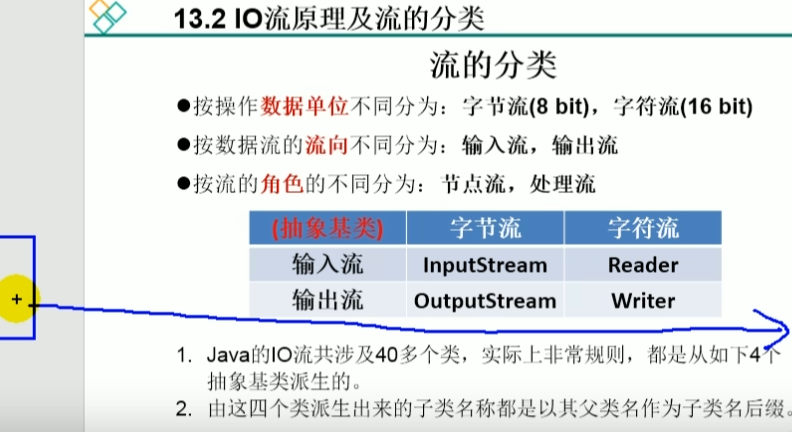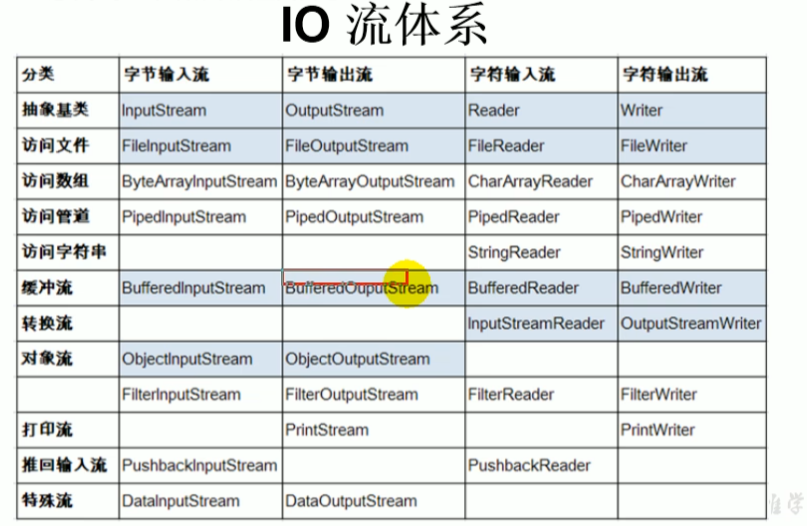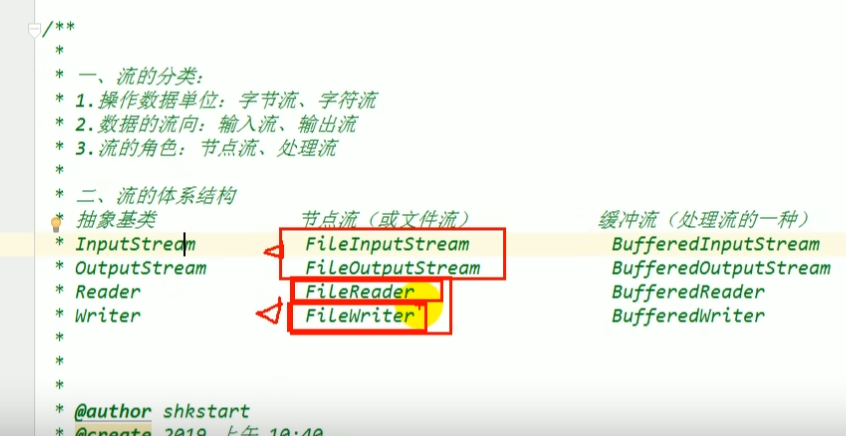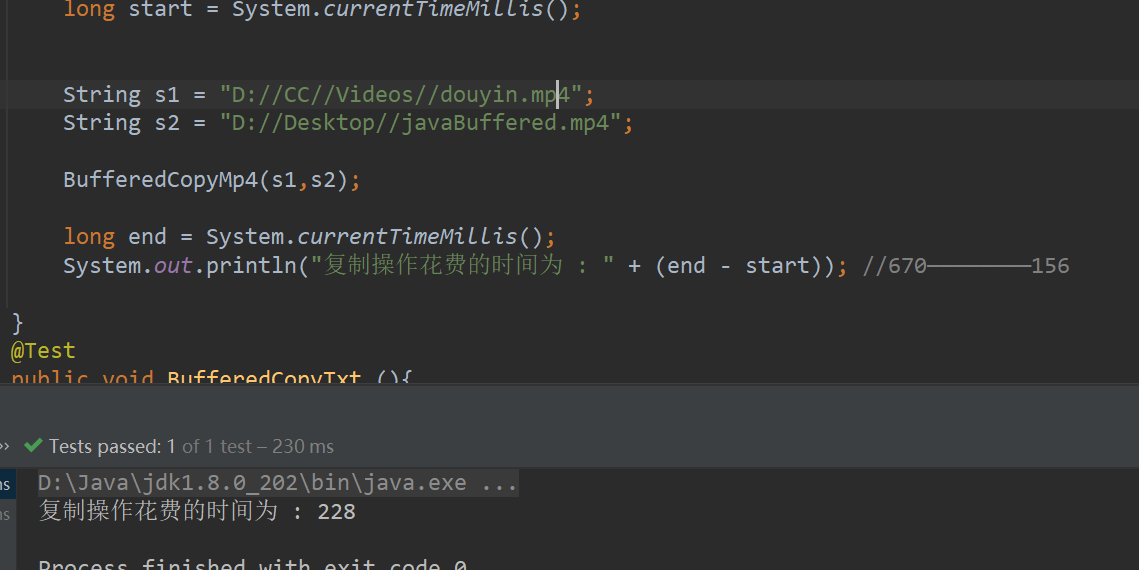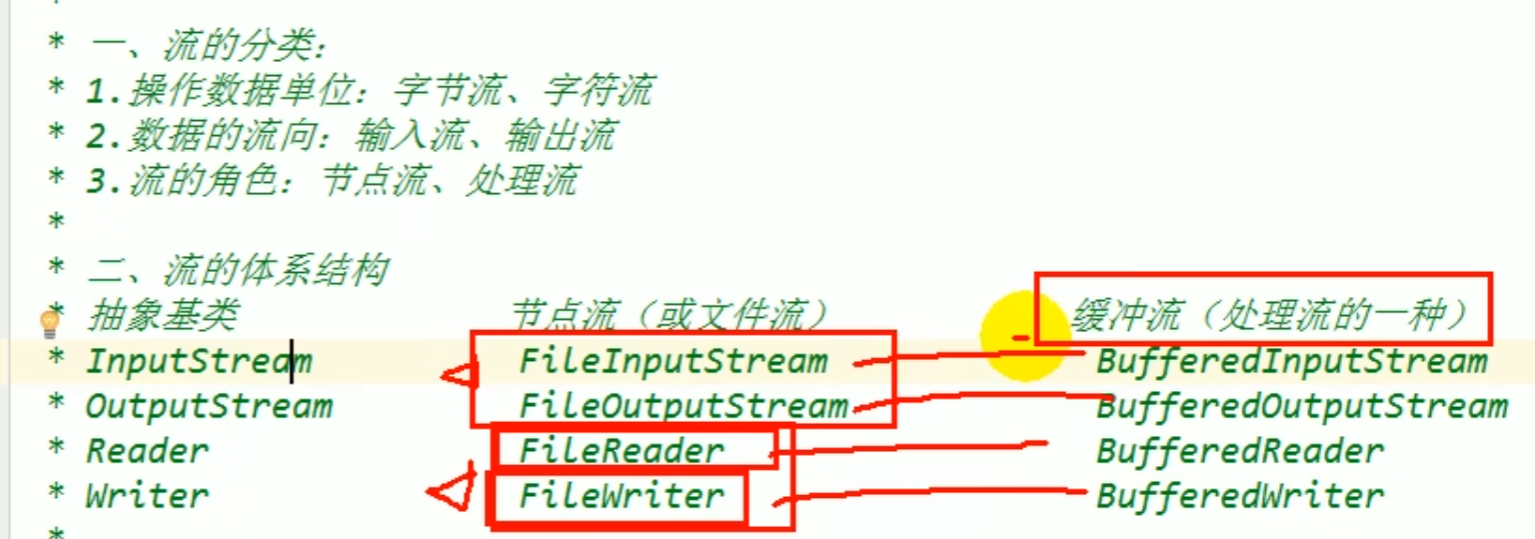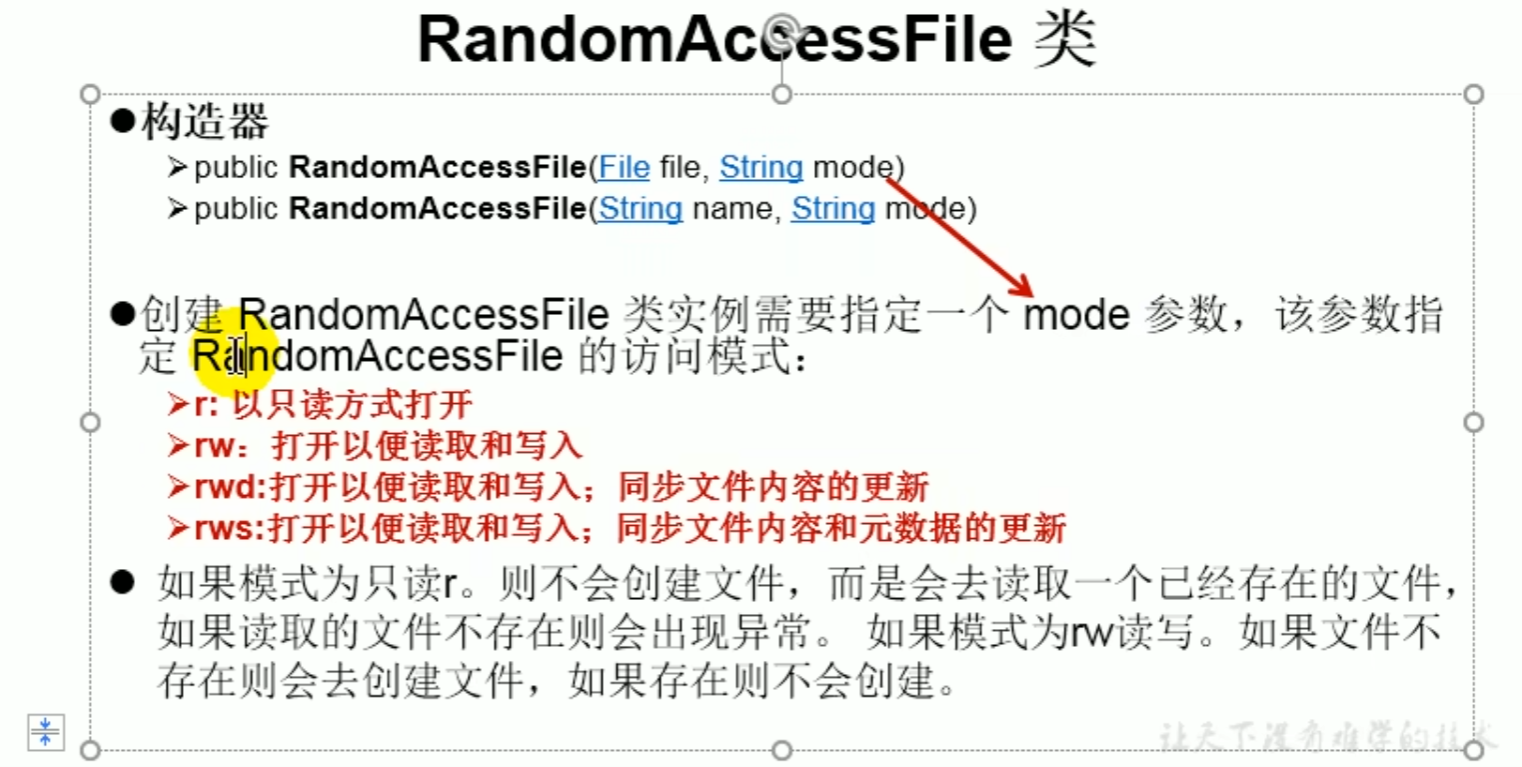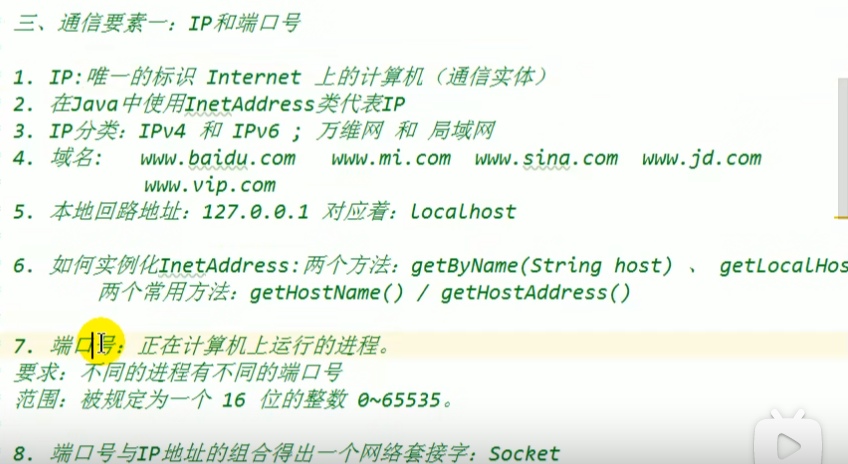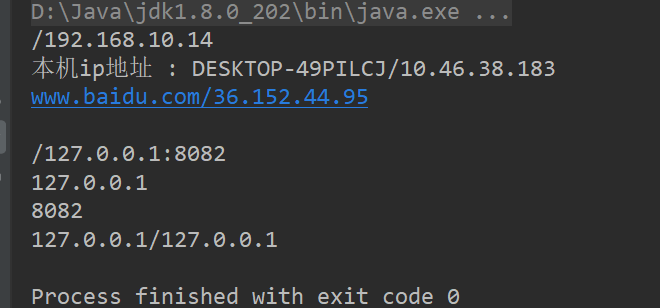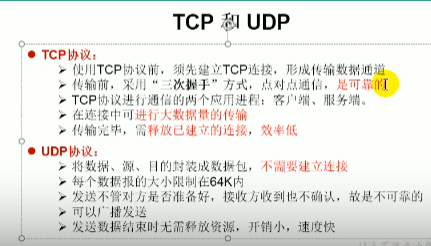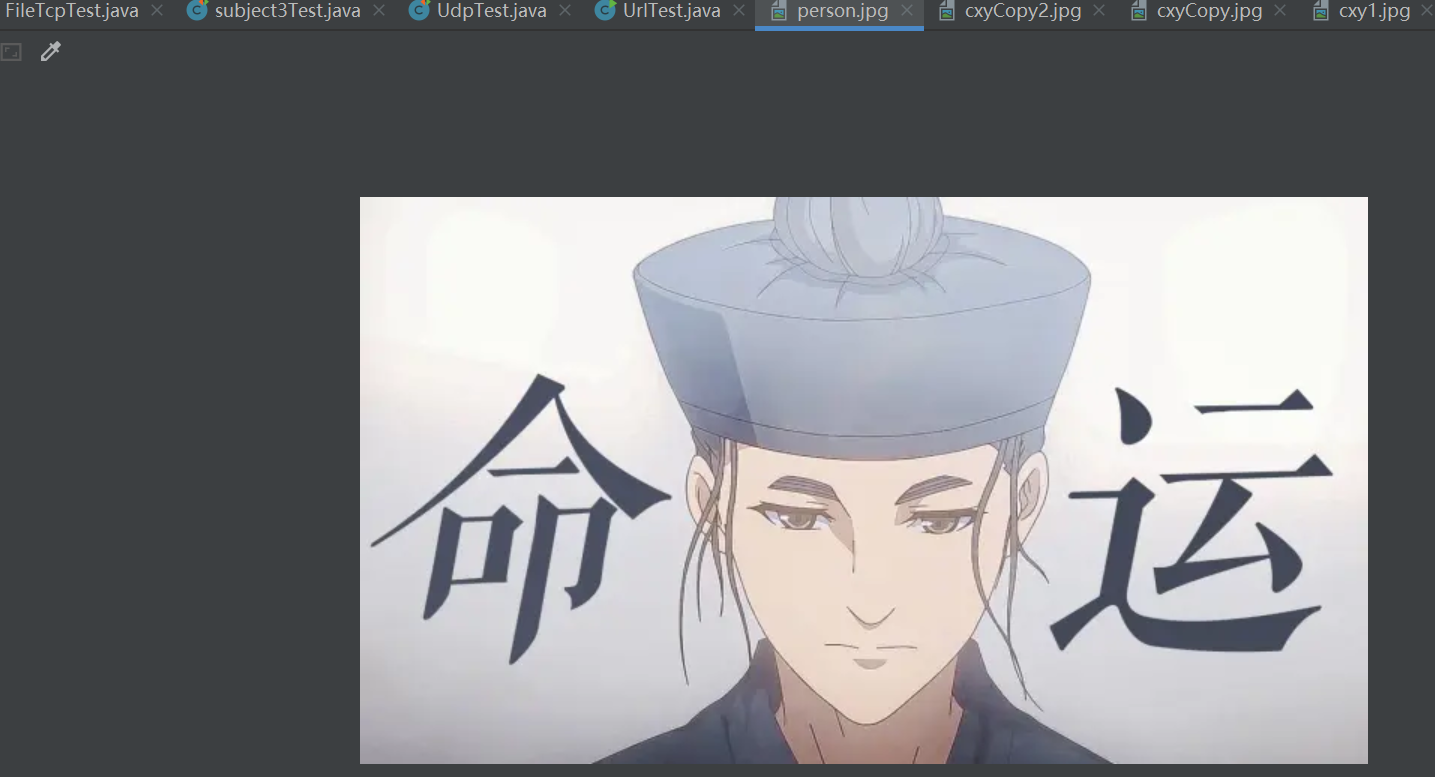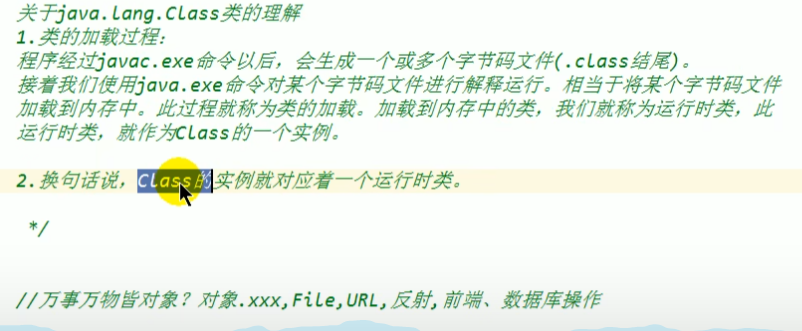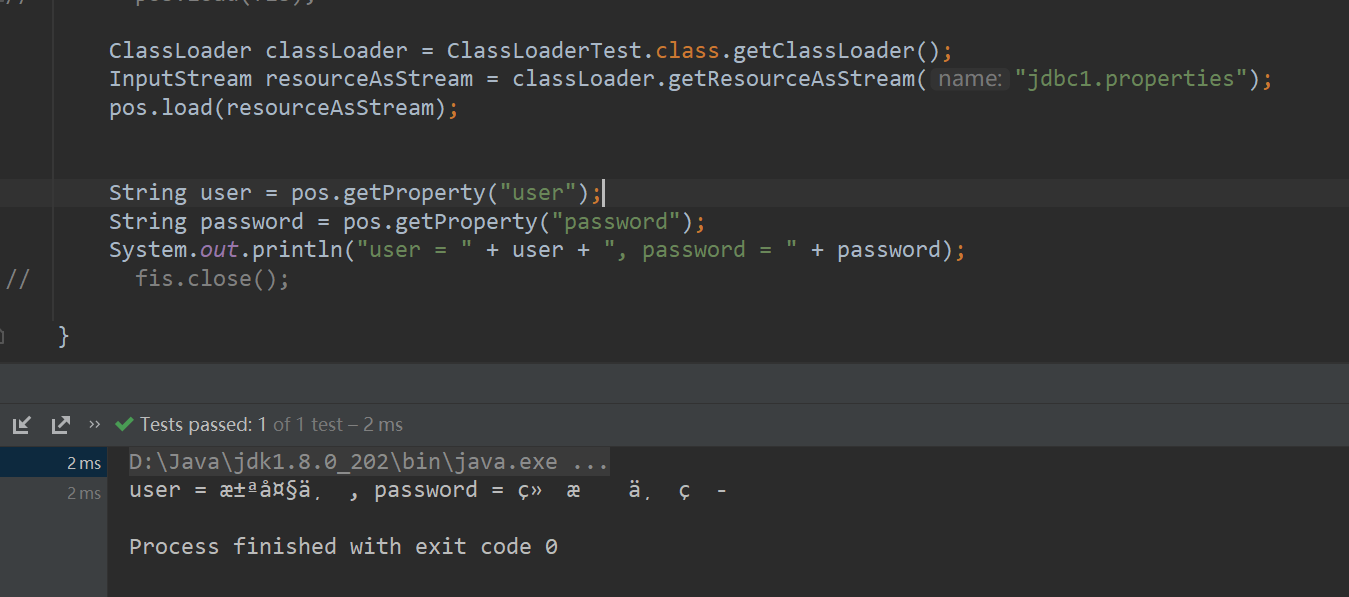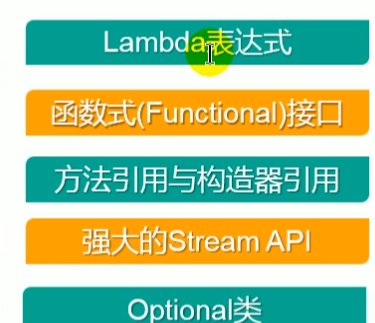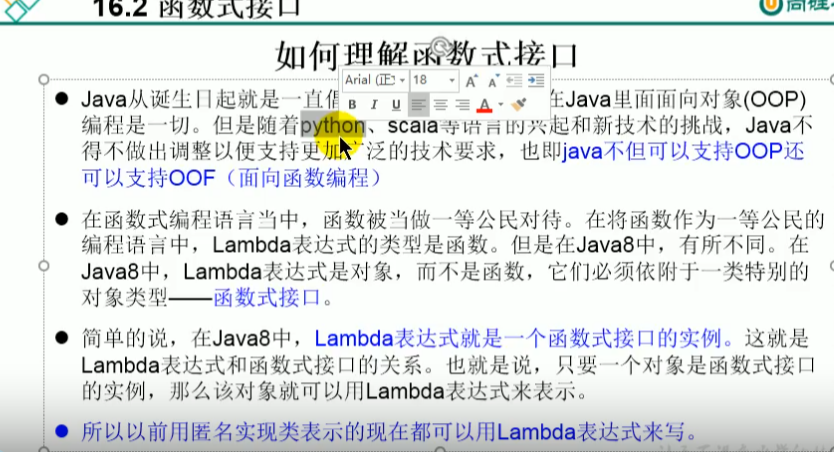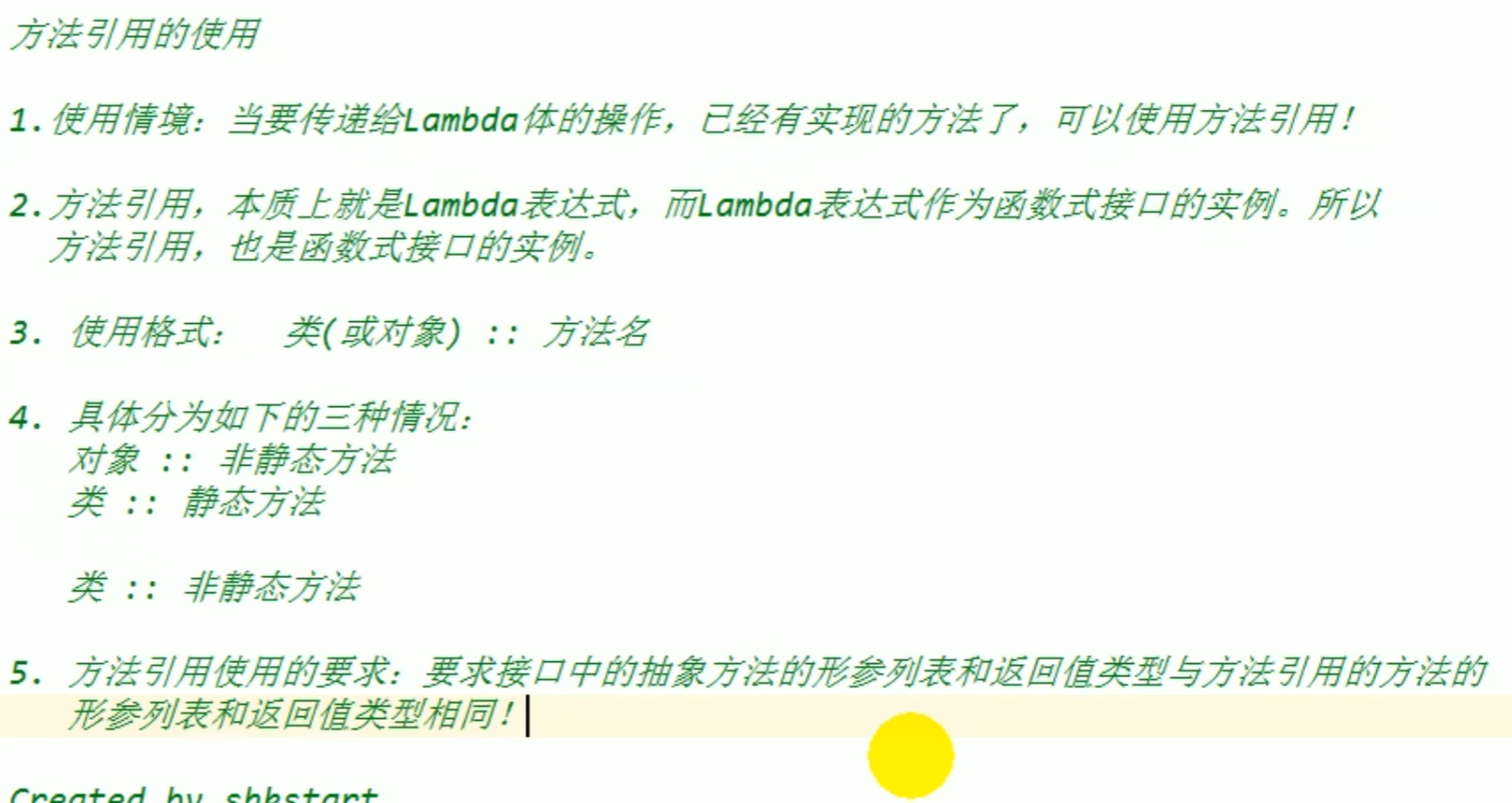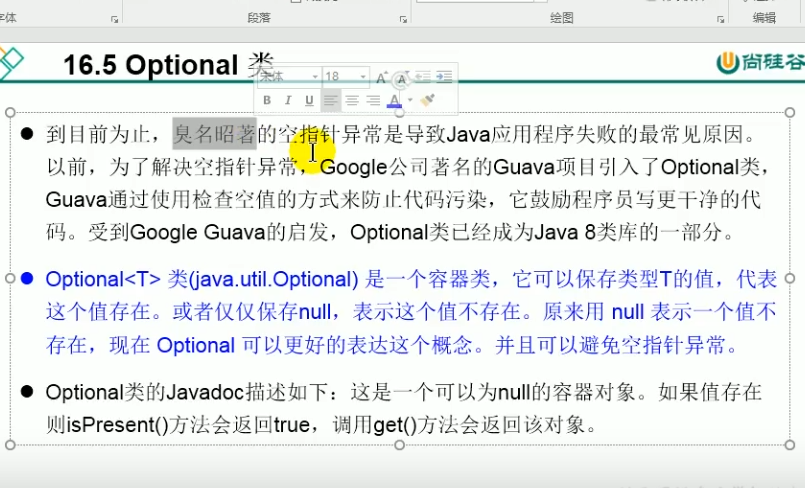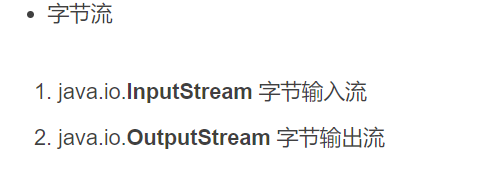4.1继承
1.头:日期、所学内容出处
黑马程序员Python教程_600集Python从入门到精通教程(懂中文就能学会)_哔哩哔哩_bilibili
2.今天所学内容摘要**
继承
理解继承代码
Creature ------- person---------Student
1 2 3 4 5 6 7 package day13.java2;public class Creature { public void breath () { System.out.println("gggggggg" ); } }
1 2 3 4 5 6 7 8 9 10 11 12 13 14 15 16 17 18 19 20 21 22 23 24 25 26 27 package day13.java2;public class Person extends Creature { String name; private int age; public Person () { } public Person (String name, int age) { this .name = name; this .age = age; } public void eat () { System.out.println("要吃饭" ); } public void sleep () { System.out.println("要睡觉" ); } public void setAge (int age) { this .age = age; } public int getAge () { return age; } }
1 2 3 4 5 6 7 8 9 10 11 12 13 14 15 16 17 18 19 20 21 22 23 24 package day13.java2;public class Student extends Person { String major; public Student () { } public Student (String name, int age, String major) { this .name = name; this .setAge(age); this .major = major; } public void study () { System.out.println("要学习" ); } }
测试
1 2 3 4 5 6 7 8 9 10 11 12 13 14 15 16 17 18 19 20 21 22 package day13.java2;public class ExtendsTest { public static void main (String[] args) { Person p1 = new Person (); p1.setAge(28 ); p1.name = "汪大东" ; p1.eat(); Student student = new Student (); student.setAge(18 ); System.out.println(student.getAge()); student.name = "金宝三" ; student.major = "电工" ; student.eat(); student.study(); student.breath(); Creature creature = new Creature (); } }
继承圆和圆柱
1 2 3 4 5 6 7 8 9 10 11 12 13 14 15 16 17 18 19 package day13.java4;public class Circle { private double radius; public Circle () { this .radius = 1.0 ; } public double getRadius () { return radius; } public void setRadius (double radius) { this .radius = radius; } public double findArea () { return Math.PI * radius*radius; } }
1 2 3 4 5 6 7 8 9 10 11 12 13 14 15 16 17 18 19 20 21 22 package day13.java4;public class Cylinder extends Circle { private double length; public Cylinder () { this .length =1.0 ; } public double getLength () { return length; } public void setLength (double length) { this .length = length; } public double findVolume () { return findArea()*length; } }
1 2 3 4 5 6 7 8 9 10 11 12 13 14 package day13.java4;public class CylinderTest { public static void main (String[] args) { Cylinder cylinder = new Cylinder (); cylinder.setRadius(2.1 ); cylinder.setLength(3.4 ); double volume = cylinder.findVolume(); System.out.println("半径是:" + cylinder.getRadius()); System.out.println("圆柱的体积是:" + String.format("%.2f" ,volume)); double area = cylinder.findArea(); System.out.println("圆柱的底面积是:" + String.format("%.2f" ,area)); } }
重写 返回值是父类的子类 子类的权限要大于父类
重写就是将父类的方法,同名同参数的修改
重写练习题
1 2 3 4 5 6 7 8 9 10 11 12 13 14 15 16 17 18 19 20 21 22 23 24 25 26 27 28 package day13.java5;public class Person { String name; private int age; public Person () { } public Person (String name, int age) { this .name = name; this .age = age; } public void eat () { System.out.println("要吃饭" ); } public void walk (int distance) { System.out.println("走路走了" + distance +"公里" ); } public void setAge (int age) { this .age = age; } public int getAge () { return age; } }
1 2 3 4 5 6 7 8 9 10 11 12 13 14 15 16 17 18 package day13.java5;public class Student extends Person { String major; public Student () { } public Student (String major) { this .major = major; } public void majors () { System.out.println("专业是" + major); } public void eat () { System.out.println("学生吃饭10分钟" ); } }
测试
1 2 3 4 5 6 7 8 9 10 11 12 13 14 package day13.java6;public class KidsTest { public static void main (String[] args) { Kids someKid = new Kids (13 ); someKid.printAge(); someKid.setSalary(0 ); someKid.setSex(1 ); someKid.employed(); someKid.manOrWoman(); } }
四种访问权限
private和public 常用
3、遇到的问题描述(可以附上截图)+解决⽅案**
Person是我student的父类,调用方法时候,说没找到,看了一会,发现extends后面的Person的java2里面的不是一个包,名字一样。 Student在java5里面 父类Person 在java里,写继承的时候,import是java2中的perso。
**4.扩展学习部分
无
总结
今天学习了方法的重写,了解了方法的重写和重构的区别,还有继承,基本和python中一模一样,学起来也相对简单,今天只有下午的学习时间,没有去做项目,做了下练习,把昨天的项目二巩固了一下,学习状态不错,晚自习自己试着敲了一下项目二。今天的学习状态满意了。
4.2super 多态
1.头:日期、所学内容出处
黑马程序员Python教程_600集Python从入门到精通教程(懂中文就能学会)_哔哩哔哩_bilibili
2.今天所学内容摘要**
super的使用
重写父类的方法
重写父类的变量
在子类的构造方法中
super和this差不多,this指该类 super是父类
super练习
1 2 3 4 5 6 7 8 9 10 11 12 13 14 15 16 17 18 19 20 21 22 23 24 25 package day14.superTest;public class Person { String name; int age; int id = 411024 ; public Person () { System.out.println("Person我还是在的" ); } public Person (String name) { this .name = name; } public Person (String name, int age) { this .name = name; this .age = age; } public void eat () { System.out.println("人要吃饭" ); } public void walk () { System.out.println("人走路" ); } }
子类
1 2 3 4 5 6 7 8 9 10 11 12 13 14 15 16 17 18 19 20 21 22 23 24 25 26 27 28 29 30 31 32 33 34 35 36 37 package day14.superTest;public class Student extends Person { String major; int id = 1002 ; public Student () { } public Student (String major) { this .major = major; } public Student (String name, int age, String major, int id) { super (name, age); this .major = major; this .id = id; } @Override public void eat () { System.out.println("学生要吃营养餐" ); } public void study () { super .eat(); System.out.println("学生学习知识" ); } public void show () { System.out.println("name = " + this .name + " age = " + age + " id = " + super .id); System.out.println("name = " + this .name + " age = " + age + " id = " + id); System.out.println("name = " + this .name + " age = " + age + " id = " + this .id); } }
测试
1 2 3 4 5 6 7 8 9 10 11 12 13 14 15 16 17 package day14.superTest;public class superTest { public static void main (String[] args) { Student student = new Student ("物联网" ); student.name = "汪大东" ; student.show(); System.out.println("****************************************" ); student.study(); student.eat(); System.out.println("****************************************" ); Student student1 = new Student ("汪大东" ,28 ,"终极一班" ,3 ); student1.show(); } }
多态
编译看左边,运行看右边
1 2 3 4 5 6 7 8 9 10 11 12 13 14 package day14.java2;public class Man extends Person { boolean isSmoking; public void earnMoney () { System.out.println("男人负责养家" ); } public void eat () { System.out.println("男人吃得多" ); } public void walk () { System.out.println("人走路 霸气侧漏" ); } }
1 2 3 4 5 6 7 8 9 10 11 12 13 package day14.java2;public class Person { String name; int age; public void eat () { System.out.println("人吃饭" ); } public void walk () { System.out.println("人走路" ); } }
1 2 3 4 5 6 7 8 9 10 11 12 13 14 package day14.java2;public class Women extends Person { boolean isBeauty; public void goShopping () { System.out.println("女人喜欢购物" ); public void eat () { System.out.println("女人吃得少减肥" ); } public void walk () { System.out.println("女人走路拽" ); } }
1 2 3 4 5 6 7 8 9 10 11 12 13 14 15 16 17 18 19 20 package day14.java2;public class PersonTest { public static void main (String[] args) { Person p1 = new Person (); p1.eat(); Man man = new Man (); man.eat(); man.age = 25 ; man.earnMoney(); System.out.println("****************" ); Person p2 = new Man (); p2.eat(); p2.walk(); } }
3、遇到的问题描述(可以附上截图)+解决⽅案**
无
**4.扩展学习部分
1 2 3 4 5 6 7 8 9 10 11 12 13 14 15 16 17 18 19 20 21 22 23 24 25 26 27 28 29 30 package day14;import java.util.Scanner;public class subject { public static void main (String[] args) { Scanner input = new Scanner (System.in); int cc = input.nextInt(); int sum = 0 ; for (int i = 1 ; i <= cc;i++){ long Sum = factorialSum(i); sum += Sum; } System.out.println(sum); } public static long factorialSum (int num) { if (num == 1 ){ return 1 ; } return factorialSum(num-1 )*num; } }
总结
今天学习了多态和super的方法的使用等,理解了java面向对象继承的基本方法,今天学了一下午,主要是需要理解方法的使用和调用和概念才是重要的,代码比较简单,敲的出来,也理解。今天学习状态不错。
4.6 向下转型 和多态性
1.头:日期、所学内容出处
黑马程序员Python教程_600集Python从入门到精通教程(懂中文就能学会)_哔哩哔哩_bilibili
2.今天所学内容摘要**
向下转型和instanceof的使用
向下转型的理解
CSDN:
https://blog.csdn.net/weixin_28680865/article/details/114051478?ops_request_misc=%257B%2522request%255Fid%2522%253A%2522164984614616782184649911%2522%252C%2522scm%2522%253A%252220140713.130102334.pc%255Fall.%2522%257D&request_id=164984614616782184649911&biz_id=0&utm_medium=distribute.pc_search_result.none-task-blog-2~all~first_rank_ecpm_v1~rank_v31_ecpm-4-114051478.142
1 2 3 4 5 6 7 8 9 10 11 12 13 14 15 16 17 18 19 20 21 22 23 24 25 26 27 28 29 30 31 32 33 34 35 36 37 38 39 40 41 42 43 44 45 46 47 48 package day14.java2;public class PersonTest { public static void main (String[] args) { Person p1 = new Person (); p1.eat(); Man man = new Man (); man.eat(); man.age = 25 ; man.earnMoney(); System.out.println("****************" ); Person p2 = new Man (); p2.eat(); p2.walk(); p2.name = "Tom" ; Man m1 = (Man)p2; m1.earnMoney(); m1.age = 18 ; m1.isSmoking = true ; m1.show(); if (p2 instanceof Women){ Women w1 = (Women) p2; w1.goShopping(); System.out.println("Women" ); } if (p2 instanceof Man){ Man w2 = (Man) p2; w2.earnMoney(); System.out.println("Man" ); } } }
向下转型的问题
调用方法和属性练习
object
回顾==的使用
equals的使用
使用需要重写
1 2 3 4 5 6 7 8 9 10 11 12 13 14 15 16 17 18 19 20 21 22 23 24 25 26 27 28 29 30 31 32 33 34 35 36 37 38 39 40 41 42 43 44 package day15.equal;public class MyDateTest { public static void main (String[] args) { MyDate myDate1 = new MyDate (14 ,3 ,1976 ); MyDate myDate2 = new MyDate (14 ,3 ,1976 ); if (myDate1.equals(myDate2)){ System.out.println("myDate1 is equal to myDate2" ); }else { System.out.println("myDate1 is not equal to myDate2" ); } if (myDate1 == myDate2){ System.out.println("myDate1 == myDate2" ); }else { System.out.println("myDate1 != myDate2" ); } } } class MyDate { private int day; private int month; private int year; public MyDate () { } public MyDate (int day, int month, int year) { this .day = day; this .month = month; this .year = year; } public boolean equals (Object o) { if (this == o) { return true ; } if (o instanceof MyDate){ MyDate myDate = (MyDate) o; return this .day == myDate.day && this .month == myDate.month && this .year == myDate.year; } return false ; } }
练习
1 2 3 4 5 6 7 8 9 10 11 12 13 14 15 16 17 18 19 20 21 22 23 24 25 26 27 28 29 30 31 32 33 34 35 36 37 package day15.equal;import day15.equal.Customer;public class EqualsTest { public static void main (String[] args) { int i = 10 ; int j = 10 ; double d = 10.0 ; System.out.println(i == j); System.out.println(j == d); char c = 10 ; System.out.println(i == c); char c1 = 'A' ; char c2 = 65 ; System.out.println(c1 == c2); String c3 = new String ("ada" ); System.out.println(c3); Customer customer1 = new Customer ("Tom" ,21 ); Customer customer2 = new Customer ("Tom" ,21 ); System.out.println(customer1 == customer2); String cust1 = new String ("ada" ); String cust2 = new String ("ada" ); System.out.println(cust1== cust2); System.out.println("************************" ); System.out.println(customer1.equals(customer2)); System.out.println(cust1.equals(cust2)); } }
1 2 3 4 5 6 7 8 9 10 11 12 13 14 15 16 17 18 19 20 21 22 23 24 25 26 27 28 29 30 31 32 33 34 35 36 37 38 39 40 41 42 43 44 45 package day15.equal;import java.util.Objects;public class Customer { private String name; private int age; public Customer () { } public Customer (String name, int age) { this .name = name; this .age = age; } public String getName () { return name; } public void setName (String name) { this .name = name; } public int getAge () { return age; } public void setAge (int age) { this .age = age; } @Override public boolean equals (Object o) { if (this == o) return true ; if (o == null || getClass() != o.getClass()) return false ; Customer customer = (Customer) o; return age == customer.age && Objects.equals(name, customer.name); } @Override public int hashCode () { return Objects.hash(name, age); } }
tostring
使用时候也会重写
IDEA会自动帮你重写,父类Object 的toString 出来的是所有的属性
1 2 3 4 5 6 7 8 9 10 11 12 13 14 15 16 17 18 19 20 21 22 23 24 25 26 27 28 29 30 package day15.Test;public class GeometricObject { protected String color; protected double weight; protected GeometricObject () { this .color = "white" ; this .weight = 1.0 ; } public GeometricObject (String color, double weight) { this .color = color; this .weight = weight; } public String getColor () { return color; } public void setColor (String color) { this .color = color; } public double getWeight () { return weight; } public void setWeight (double weight) { this .weight = weight; } }
1 2 3 4 5 6 7 8 9 10 11 12 13 14 15 16 17 18 19 20 21 22 23 24 25 26 27 28 29 30 31 32 33 34 35 36 37 38 39 40 41 42 43 44 45 46 47 48 49 package day15.Test;import day14.java2.Man;import java.util.Objects;public class Circle extends GeometricObject { private double radius; public Circle () { super (); this .radius = 1.0 ; } public Circle (double radius) { this .radius = radius; } public Circle (double radius,String color,double weight ) { super (color, weight); this .radius = radius; } public double getRadius () { return radius; } public void setRadius (double radius) { this .radius = radius; } public double findArea () { return Math.PI * radius *radius; } public boolean equals (Object obj) { if (obj == this ){ return true ; } if (obj instanceof Circle){ Circle circle = (Circle) obj; return circle.findArea() == this .findArea(); } return false ; } @Override public String toString () { return "圆的面积:" + findArea(); } }
Test
1 2 3 4 5 6 7 8 9 10 11 12 13 package day15.Test;public class CircleTest { public static void main (String[] args) { Circle circle1 = new Circle (2.3 ); Circle circle2 = new Circle (2.3 , "white" ,2.0 ); System.out.println("颜色是否相等 :" + circle1.getColor().equals(circle2.getColor())); System.out.println("面积是否相等: " + circle1.equals(circle2)); System.out.println(circle1); System.out.println(circle2.toString()); } }
3、遇到的问题描述(可以附上截图)+解决⽅案**
暂无
**4.扩展学习部分
final finally finalize 的区别
final用于声明属性,方法和类,分别表示属性不可交变,方法不可覆盖,类不可继承。
finally是异常处理语句结构的一部分,表示总是执行。
finalize是Object类的一个方法,在垃圾收集器执行的时候会调用被回收对象的此方法,供垃圾收集时的其他资源回收,例如关闭文件等。
final:java中的关键字,修饰符。
finally是对Java异常处理模型的最佳补充。finally结构使代码总会执行,而不管无异常发生。使用finally可以维护对象的内部状态,并可以清理非内存资源。特别是在关闭数据库连接这方面,如果程序员把数据库连接的close()方法放到finally中,就会大大降低程序出错的几率。
finalize:Java中的一个方法名。
总结
今天学习学习难度一般,学习难点在多态的练习和向下转型,重写equals和toString方法比较容易。今天只掌握了80%,学习步骤:先看视频,向下转型是有点难度的,又去看了博客,敲了几遍代码,再去理解。今天只学了晚自习,所以今天敲了7个代码左右吧。学习状态良好,晚自习安静,静的下心来打代码。
4.7单元测试 包装类
1.头:日期、所学内容出处
黑马程序员Python教程_600集Python从入门到精通教程(懂中文就能学会)_哔哩哔哩_bilibili
2.今天所学内容摘要**
单元测试
@Test方便自己的测试,不需要再创建一个main测试方法
1 2 3 4 5 6 7 8 9 10 11 package day16;import org.junit.Test;public class JUnitTest { int num = 10 ; @Test public void textEquals () { System.out.println("AAAA" ); System.out.println(num); } }
基本数据类型转换为包装类
1 2 3 4 5 6 7 8 9 10 11 12 13 14 15 16 17 18 19 20 21 22 23 24 25 26 27 28 29 30 31 32 33 34 35 package day16;import org.junit.Test;public class WrapperTest { @Test public void test1 () { int num = 10 ; Integer integer = new Integer (num); System.out.println(integer.toString()); Integer integer2 = new Integer ("123" ); System.out.println(integer2.toString()); Float f1 = new Float (12.3f ); Float f2 = new Float ("12.3f" ); System.out.println(f1); System.out.println(f2); } }
自动装箱自动拆箱
1 2 3 4 5 6 7 8 9 10 11 12 13 14 15 16 17 18 19 20 21 22 23 24 25 26 27 28 29 30 31 32 33 34 35 36 37 38 39 40 41 42 43 44 45 46 47 48 49 50 51 52 53 54 55 56 57 58 59 60 61 62 63 64 65 66 67 68 69 70 71 72 73 74 75 76 77 package day16;import org.junit.Test;public class WrapperTest { @Test public void test1 () { int num = 10 ; Integer integer = new Integer (num); System.out.println(integer.toString()); Integer integer2 = new Integer ("123" ); System.out.println(integer2.toString()); Float f1 = new Float (12.3f ); Float f2 = new Float ("12.3f" ); System.out.println(f1); System.out.println(f2); Boolean b1 = new Boolean (true ); Boolean b2 = new Boolean ("true" ); Boolean b3 = new Boolean ("true123" ); System.out.println(b1); System.out.println(b2); System.out.println(b3); System.out.println("***************" ); Order order = new Order (); System.out.println(order.isFemale); System.out.println(order.isMale); } @Test public void text2 () { Integer in1 = new Integer (123 ); int i1 = in1.intValue(); System.out.println(i1 + 85 ); } @Test public void text3 () { int num2 = 10 ; Integer in2 = num2; boolean b1 = true ; Boolean b2 = b1; System.out.println(in2.toString()); int num3 = in2; } public void method (Object obj) { System.out.println(obj); } } class Order { boolean isMale; Boolean isFemale; }
基本类和包装类对String转换
1 2 3 4 5 6 7 8 9 10 11 12 13 14 15 16 17 @Test public void text4 () { int num1 = 10 ; String str1 = num1 + "" ; System.out.println(str1); float f1 = 12.3f ; String str2 = String.valueOf(f1); System.out.println(str2); Double d1 = 12.4 ; String str3 = String.valueOf(d1); System.out.println(str3); }
3、遇到的问题描述(可以附上截图)+解决⽅案**
转什么类型里面要是什么结构的,Integer 里面要是数字才可以转换。我""里面是一个字符型.
**4.扩展学习部分
总结
今天只学了一个晚自习的时间学习难点在包装类之前的转换写法,后面发现有自动的方法 就简单理解很多,会使用了单元测试 就不用每次写一个main的主程序去测试代码了,很方便。今天掌握了90%,学习步骤:先看视频,,敲了几遍代码,再去理解。今天敲了5个代码左右吧,基本类型 包装类 String转换都会了。今天的学习任务比较轻松。
4.8面向对象下
1.头:日期、所学内容出处
黑马程序员Python教程_600集Python从入门到精通教程(懂中文就能学会)_哔哩哔哩_bilibili
2.今天所学内容摘要**
静态static
静态 类.方法调用方法
静态属性和静态方法的基本使用
1 2 3 4 5 6 7 8 9 10 11 12 13 14 15 16 17 18 19 20 21 22 23 24 25 26 27 28 29 30 31 32 33 34 35 36 37 38 39 40 41 42 43 44 public class staticTest { public static void main (String[] args) { Chinese.nation = "中国人" ; Chinese chinese1 = new Chinese (); chinese1.name = "汪大东" ; chinese1.age = 28 ; Chinese chinese2 = new Chinese (); chinese2.name = "金宝三" ; chinese2.age = 34 ; Chinese chinese3 = new Chinese (); chinese3.name = "林丹" ; chinese3.age = 32 ; Chinese.show(); } } class Chinese { String name; int age; static String nation; public void eat () { System.out.println("我要吃饭" ); } public static void show () { System.out.println("我是一个中国人!" ); System.out.println(Chinese.nation); walk(); System.out.println("nation : " + nation); } public static void walk () { System.out.println("走路" ); } public void info () { System.out.println("name = " + name + " age = " + age); } }
静态的使用场景
练习
1 2 3 4 5 6 7 8 9 10 11 12 13 14 15 16 17 18 19 20 21 22 23 24 25 26 27 28 29 30 31 32 33 34 35 36 37 38 39 40 41 42 43 44 45 46 47 48 49 50 package day17;public class circleTest { public static void main (String[] args) { Circle c1 = new Circle (); Circle c2 = new Circle (); Circle c3 = new Circle (2.0 ); System.out.println("c1 的 id 是 " + c1.getId()); System.out.println("c2 的 id 是 " + c2.getId()); System.out.println("c3 的 id 是 " + c3.getId()); System.out.println("c3 的面积是 : " +c3.findArea()); System.out.println("创建圆的个数" + Circle.getTotal()); } } class Circle { private double radius; private int id; public Circle () { id = ++init; total++; } public Circle (double radius) { this (); this .radius = radius; } private static int total; private static int init = 1000 ; public String findArea () { return String.format("%.2f" ,Math.PI * radius * radius); } public int getId () { return id; } public static int getTotal () { return total; } }
静态练习
1 2 3 4 5 6 7 8 9 10 11 12 13 14 15 16 17 18 19 20 21 22 23 24 25 26 27 28 29 30 31 32 33 34 35 36 37 38 39 40 41 42 43 44 45 46 47 48 49 50 51 52 53 54 55 56 57 58 59 60 61 62 63 64 65 66 67 68 69 70 71 72 73 74 75 76 77 78 79 80 81 public class AccountTest { public static void main (String[] args) { Account account1 = new Account (); Account account2 = new Account ("qwerty" ,2000 ); account2.setBalance(500 ); account2.setBalance(0.1 ); Account.setInterestRate(0.035 ); account2.setId(1119 ); account2.setPassword("sjh0802" ); System.out.println(account1); System.out.println(account2); System.out.println(account2.show()); } } class Account { private int id; private String password = "000000" ; private double balance; private static double interestRate; public static double minMoney = 1.0 ; public static int init = 1001 ; public String show () { return "账户 : " + getId() + " 账户余额 : " + getBalance() + " 利率 : " + getInterestRate(); } public Account () { this .id = init++; } public Account (String password,int balance) { this (); this .password = password; this .balance = balance; } public int getId () { return id; } public double getBalance () { return balance; } public static double getInterestRate () { return interestRate; } public void setId (int id) { this .id = id; System.out.println("修改账户为" + id); } public void setPassword (String password) { this .password = password; System.out.println("修改密码" ); } public static void setInterestRate (double interestRate) { Account.interestRate = interestRate; } public void setBalance (double balance) { if (balance >= minMoney) { this .balance += balance; System.out.println("存钱成功" ); } else { System.out.println("最小余额是: " + minMoney + "---------请重新输入!" ); } } @Override public String toString () { return "Account{" + "id=" + id + ", password='" + password + '\'' + ", balance=" + balance + '}' ; } }
类变量 静态变量内存解析
静态属性共用,对象修改会变
3、遇到的问题描述(可以附上截图)+解决⽅案**
暂无
**4.扩展学习部分
成绩计算
Vector变化数组使用 包装类
1 2 3 4 5 6 7 8 9 10 11 12 13 14 15 16 17 18 19 20 21 22 23 24 25 26 27 28 29 30 31 32 33 34 35 36 37 38 39 40 41 42 43 44 45 46 47 48 public class ScoreTest { public static void main (String[] args) { int maxNum = 0 ; Scanner scanner = new Scanner (System.in); Vector<Integer> v = new Vector <>(); while (true ) { System.out.println("请输入学生的成绩 (负数结束)" ); int score = scanner.nextInt(); if (score < 0 ) { System.out.println("结束输入............." ); break ; } else if (score > 100 ) { System.out.println("输入数据非法重新输入" ); } else { v.addElement(score); if (score >= maxNum) { maxNum = score; } } } for (int i = 0 ;i < v.size();i++){ Object object = v.elementAt(i); int score1 = (int ) object; String level; if (maxNum-10 <= score1){ level = "A" ; }else if (maxNum-20 <= score1){ level = "B" ; }else if (maxNum-30 <= score1){ level = "C" ; }else { level = "D" ; } System.out.println("Student " + (i+1 ) + " score is " + score1 + ", level : " + level); } } }
总结
今天主要是开始了面向对象下的内容,学习了静态。今天是学的一下午的时间,将所有静态的知识看完了,还是蛮容易理解的,静态变量内存搞懂,静态这方面就没什么问题了,学习状态还不错。
4.10单例设计模式
1.头:日期、所学内容出处
黑马程序员Python教程_600集Python从入门到精通教程(懂中文就能学会)_哔哩哔哩_bilibili
2.今天所学内容摘要**
单例设计模式
优点
懒汉式VS饿汉式
1 2 3 4 5 6 7 8 9 10 11 12 13 14 15 16 17 18 19 20 21 22 public class SingletonTest { public static void main (String[] args) { Bank bank1 = Bank.getInstance(); Bank bank2 = Bank.getInstance(); System.out.println(bank1 == bank2); } } class Bank { private Bank () { } private static Bank instance = new Bank (); public static Bank getInstance () { return instance; } }
懒汉式
1 2 3 4 5 6 7 8 9 10 11 12 13 14 15 16 17 18 19 20 21 22 23 public class SingletonTest2 { public static void main (String[] args) { Order order1 = Order.getInstance(); Order order2 = Order.getInstance(); System.out.println(order1 == order2); } } class Order { private Order () { } private static Order instance = null ; public static Order getInstance () { if (instance == null ){ instance = new Order (); } return instance; } }
代码块
“不太常用”
代码块优先级高
先于构造器
由父及子,静态先行
属性赋值
final方法
比较简单
被final修饰的类不可以被继承;
abstract抽象类的使用
自己理解的抽象类 修饰类和方法和结构
但是不能实例化,所以需要子类继承它,然后子类必须要重写父类抽象类的方法,否则就会报错。
1 2 3 4 5 6 7 8 9 10 11 12 13 14 15 16 17 18 19 20 21 22 23 24 25 26 27 28 29 30 31 32 33 34 35 36 37 38 39 40 41 42 43 44 45 46 47 48 49 50 51 52 53 54 public class AbstractTest { public static void main (String[] args) { Student student1 = new Student (); Student student2 = new Student ("王小明" ,28 ); } } abstract class Creature { public abstract void breath () ; } abstract class Person extends Creature { String name; int age; public Person () { } public Person (String name, int age) { this .name = name; this .age = age; } public void eat () { System.out.println("吃饭" ); } public void walk () { System.out.println("走路" ); } public abstract void hello () ; } class Student extends Person { public Student () { } public Student (String name, int age) { super (name, age); } public void eat () { System.out.println("学生要吃有营养的" ); } @Override public void hello () { System.out.println("你好啊" ); } @Override public void breath () { System.out.println("学生应该呼吸新鲜空气" ); } }
多态的应用:抽象类
3、遇到的问题描述(可以附上截图)+解决⽅案**
暂无
**4.扩展学习部分
抽象类练习
测试代码如下
1 2 3 4 5 6 7 8 9 10 11 12 13 14 15 16 17 18 19 20 21 22 23 24 25 26 27 public class PayrollSystem { public static void main (String[] args) { Calendar calendar = Calendar.getInstance(); int month = calendar.get(Calendar.MONTH); System.out.println("这个月是" +(month+1 ) +"月" ); Employee[] employees = new Employee [3 ]; employees[0 ] = new SalariedEmployee ("汪大东" ,1001 ,new MyDate (1991 ,8 ,2 ),10000 ); employees[1 ] = new HourlyEmployee ("金宝三" ,1002 ,new MyDate (1988 ,11 ,19 ),24 ,240 ); employees[2 ] = new HourlyEmployee ("辜战" ,1003 ,new MyDate (2002 ,4 ,22 ),30 ,240 ); for (Employee employee : employees) { System.out.println(employee); double money = employee.earning(); if ((month + 1 ) == employee.getBirthday().getMonth()) { System.out.println(employee.getName()+"生日快乐! 奖励100元" ); money += 100 ; } System.out.println("工资是" + money); } } }
运行结果
总结
周天早上在图书馆学习的,晚自习在工作室,今天学习的内容比较多,单例 代码块 final abstract这些java的使用,学习状态不错,边看视频,边敲代码,对于代码块和final不太常用的东西,敲两边理解了就过了,重要的都敲了6 7 遍的代码,实践出真章,在abstract中在最后一个比较大的练习,才理解真正的用法,和适用场景,真的就是编程学习是在敲代码中成长的。
4.11结构 成员内部
1.头:日期、所学内容出处
黑马程序员Python教程_600集Python从入门到精通教程(懂中文就能学会)_哔哩哔哩_bilibili
2.今天所学内容摘要**
接口
1 2 3 4 5 6 7 8 9 10 11 12 13 14 15 16 17 18 19 20 21 22 23 24 25 26 27 28 29 30 31 32 33 34 35 36 37 38 39 40 41 42 43 44 45 46 47 48 49 50 51 52 53 54 55 56 57 58 59 60 61 62 63 64 65 66 67 68 69 70 71 72 73 74 75 76 77 78 79 80 81 82 83 84 85 86 87 88 89 public class InterfaceTest { public static void main (String[] args) { System.out.println(Flyable.MAX_SPEED); System.out.println(Flyable.min_speed); } } interface Flyable { public static final int MAX_SPEED = 7900 ; int min_speed = 1 ; public abstract void fly () ; void stop () ; } interface attackAble { void attack () ; } class plane implements Flyable { public plane () { } @Override public void fly () { System.out.println("飞机起飞" ); System.out.println(MAX_SPEED); } @Override public void stop () { System.out.println("驾驶员减速停机" ); System.out.println(min_speed); } } abstract class boeing implements Flyable { @Override public void fly () { System.out.println("波音747飞的快" ); } } class Bullet extends plane implements CC ,Flyable,attackAble{ @Override public void fly () { } @Override public void stop () { } @Override public void attack () { } @Override public void method1 () { } @Override public void method2 () { } } interface AA { void method1 () ; } interface BB { void method2 () ; } interface CC extends AA ,BB{}
接口的4种实现类
1 2 3 4 5 6 7 8 9 10 11 12 13 14 15 16 17 18 19 20 21 22 23 24 25 26 27 28 29 30 31 32 33 34 35 36 37 38 39 40 41 42 43 44 45 46 47 48 49 50 51 52 53 54 55 56 57 58 59 60 61 62 63 64 65 66 67 68 69 70 71 72 73 74 75 public class USBTest { public static void main (String[] args) { computer computer = new computer (); Flash flash = new Flash (); computer.transferData(flash); System.out.println(); System.out.println("******************" ); computer.transferData(new Flash ()); System.out.println(); System.out.println("******************" ); USB phone = new USB () { @Override public void start () { System.out.println("手机工作" ); } @Override public void stop () { System.out.println("手机结束工作" ); } }; computer.transferData(phone); System.out.println(); System.out.println("******************" ); computer.transferData(new USB (){ @Override public void start () { System.out.println("mp3工作" ); } @Override public void stop () { System.out.println("mp3结束工作" ); } }); } } class computer { public void transferData (USB usb) { usb.start(); System.out.println("传输中--------------" ); usb.stop(); } } interface USB { void start () ; void stop () ; } class Flash implements USB { @Override public void start () { System.out.println("U盘开始工作" ); } @Override public void stop () { System.out.println("U盘结束工作" ); } } class Printer implements USB { @Override public void start () { System.out.println("打印机开始工作" ); } @Override public void stop () { System.out.println("打印机停止工作" ); } }
运行结果
接口练习
比较对象大小
1 2 3 4 5 package day18.java4;public interface CompareObject { int compareTo (Object o) ; }
1 2 3 4 5 6 7 8 9 10 11 12 13 14 15 16 17 18 19 20 21 22 public class comparableCircleTest { public static void main (String[] args) { comparableCircle comparableCircle1 = new comparableCircle (1.9 ); comparableCircle comparableCircle2 = new comparableCircle (8.2 ); comparableCircle comparableCircle3 = new comparableCircle (8.2 ); int num = comparableCircle1.compareTo(comparableCircle2); if (num == 0 ){ System.out.println("一样大" ); }else if (num > 0 ){ System.out.println("前面大" ); }else System.out.println("后面大" ); int num1 = comparableCircle3.compareTo(comparableCircle2); if (num1 == 0 ){ System.out.println("一样大" ); }else if (num1 > 0 ){ System.out.println("前面大" ); }else System.out.println("后面大" ); } }
1 2 3 4 5 6 7 8 9 10 11 12 13 14 15 16 17 18 19 20 21 public class comparableCircle extends Circle implements CompareObject { public comparableCircle () { } public comparableCircle (double radius) { super (radius); } @Override public int compareTo (Object o) { if (this == o){ return 0 ; } if (o instanceof comparableCircle){ comparableCircle obj = (comparableCircle) o; return Double.compare(this .getRadius(), obj.getRadius()); }else { return 12138 ; } } }
1 2 3 4 5 6 7 8 9 10 11 12 13 14 15 16 public class Circle { private double radius; public Circle () {} public Circle (double radius) { this .radius = radius; } public double getRadius () { return radius; } public void setRadius (double radius) { this .radius = radius; } }
java8.0接口新特性
1 2 3 4 5 6 7 8 9 10 11 12 13 14 15 16 17 18 19 20 21 22 23 24 25 26 27 28 29 30 31 32 33 34 35 36 37 38 39 40 41 42 43 44 package day18.java4;public class SubClassTest { public static void main (String[] args) { SubClass s = new SubClass (); CompareA.method1(); s.method2(); s.method3(); } } class SubClass extends SuperClass implements CompareA ,CompareB{ public void method2 () { System.out.println("subclass 上海" ); } public void method3 () { System.out.println("subclass 深圳" ); } public void myMethod () { method3(); super .method3(); CompareA.super .method3(); CompareB.super .method3(); } }
内部类
3、遇到的问题描述(可以附上截图)+解决⽅案**
暂无
**4.扩展学习部分
static final abstract总结
static 通过对象调用静态方法
一句话概述:final修饰的东西不能被修改,不能被继承。
一句话概述:抽象类的目的就是为了让其子类实现它本身的方法!
抽象的使用前提 : 继承性
https://blog.csdn.net/xieyunc/article/details/102643543?ops_request_misc=%257B%2522request%255Fid%2522%253A%2522164972197816780271911803%2522%252C%2522scm%2522%253A%252220140713.130102334.pc%255Fall.%2522%257D&request_id=164972197816780271911803&biz_id=0&utm_medium=distribute.pc_search_result.none-task-blog-2~all~first_rank_ecpm_v1~rank_v31_ecpm-1-102643543.142
总结
今天学习了一个上午的时间,将java面对象的最后一些内容-----接口 通关了,知道了接口的使用,并做了几个小练习,还是比较容易理解的,java中的接口主要是弥补java只有单继承的局限性的,还是很适用的,今天的学习状态不错,学的内容也很充实。
4.12 异常处理
1.头:日期、所学内容出处
黑马程序员Python教程_600集Python从入门到精通教程(懂中文就能学会)_哔哩哔哩_bilibili
2.今天所学内容摘要**
异常
Exception比较重要
常见的异常
常见的异常
1 2 3 4 5 6 7 8 9 10 11 12 13 14 15 16 17 18 19 20 21 22 23 24 25 26 27 28 29 30 31 32 33 34 35 36 37 38 39 40 41 42 43 44 45 46 47 48 49 50 51 52 53 54 55 56 57 58 59 60 61 public class ExceptionTest { @Test public void test7 () { } @Test public void test6 () { int a = 10 ; int b = 0 ; System.out.println(a/b); } @Test public void test5 () { Scanner scanner = new Scanner (System.in); int num = scanner.nextInt(); System.out.println(num); } @Test public void test4 () { String str = "123s" ; Integer.parseInt(str); } @Test public void test3 () { Object obj = new Date (); String str = (String) obj; } @Test public void test2 () { int [] arr = new int [3 ]; System.out.println(arr[3 ]); } @Test public void test1 () { int [] arr = null ; System.out.println(arr[3 ]); } }
异常的处理
分为抓和抛
try - catch - finally的使用
注意:编译时候异常 try就是改成运行时异常
1 2 3 4 5 6 7 8 9 10 11 12 13 14 15 16 17 18 19 20 21 22 23 24 25 26 27 28 29 30 31 32 33 34 35 36 37 38 39 40 41 42 43 public class ExceptionTest1 { @Test public void test2 () { try { File file = new File ("hello.txt" ); FileInputStream fileInputStream = new FileInputStream (file); int data = fileInputStream.read(); while (data != -1 ) { System.out.println((char ) data); data = fileInputStream.read(); } fileInputStream.close(); } catch (IOException e){ e.printStackTrace(); } } @Test public void test1 () { String str = "123s" ; int num = 0 ; try { num = Integer.parseInt(str); }catch (NumberFormatException e){ System.out.println("出现数值转换异常了 不要着急....." ); System.out.println(e.getMessage()); }catch (NullPointerException e){ System.out.println("出现空指针异常了 不要着急......." ); }catch (Exception e){ System.out.println("出现异常了" ); } finally { System.out.println("finally哪里都U我" ); } System.out.println(num); System.out.println("hello------1" ); } }
说明
1 2 3 4 5 6 7 8 9 10 11 12 13 14 15 16 17 18 19 20 21 22 23 24 public class FinallyTest3 { public static void main (String[] args) { FileInputStream fileInputStream = null ; try { File file = new File ("D:\\CC\\IDEA\\src\\day19\\java2\\hello.txt" ); fileInputStream = new FileInputStream (file); int data = fileInputStream.read(); while (data != -1 ) { System.out.print((char ) data); data = fileInputStream.read(); } } catch (IOException e){ e.printStackTrace(); }finally { try { if (fileInputStream != null ){ fileInputStream.close(); } }catch (IOException e){ e.printStackTrace(); } } } }
体会
throws
1 2 3 4 5 6 7 8 9 10 11 12 13 14 15 16 17 18 19 20 21 22 23 24 25 26 27 28 29 30 31 32 33 34 35 36 37 38 39 40 41 package day19.java3;import java.io.File;import java.io.FileInputStream;import java.io.FileNotFoundException;import java.io.IOException;public class ExceptionTest2 { public static void main (String[] args) { try { method2(); }catch (FileNotFoundException e){ e.getCause(); }catch (IOException e){ e.printStackTrace(); } } public static void method3 () { try { method2(); } catch (IOException e) { e.printStackTrace(); } } public static void method2 () throws IOException { method1(); } public static void method1 () throws FileNotFoundException,IOException { File file = new File ("hello1.txt" ); FileInputStream fileInputStream = new FileInputStream (file); int data = fileInputStream.read(); while (data != -1 ) { System.out.print((char ) data); data = fileInputStream.read(); } fileInputStream.close(); } }
手动抛出异常对象
1 2 3 4 5 6 7 8 9 10 11 12 13 14 15 16 17 18 19 20 21 22 23 24 25 26 27 28 29 30 31 32 33 34 35 package day19.java3;public class StudentTest { public static void main (String[] args) { Student student = new Student (); try { student.regist(-1001 ); } catch (Exception e) { System.out.println(e.getMessage()); } System.out.println(student); } } class Student { private int id; public Student () { } public void regist (int id) throws Exception { if (id > 1000 ){ this .id = id; }else { throw new Exception ("您输入的数据非法啦(要大于1000)" ); } } @Override public String toString () { return "Student{" + "id=" + id + '}' ; } }
运行结果
3、遇到的问题描述(可以附上截图)+解决⽅案**
创建了文件,但是还是一直报错,改了很多次还是报错,在main里面也试过也报错
综合练习
1 2 3 4 5 6 7 8 9 10 11 12 13 14 15 16 17 18 19 20 21 22 23 24 25 26 27 28 29 30 31 32 33 34 35 36 37 38 39 40 41 package day19.java4;import java.util.InputMismatchException;import java.util.Scanner;public class EcmDef { public static void main (String[] args) { try { int i = Integer.parseInt(args[0 ]); int j = Integer.parseInt(args[1 ]); int num = ecm(i,j); System.out.println(num); }catch (NumberFormatException e){ System.out.println("类型不一致" ); }catch (ArrayIndexOutOfBoundsException e){ System.out.println("缺少命令行参数" ); }catch (ArithmeticException e){ System.out.println("不能输入非0数" ); }catch (EcDef e) { System.out.println(e.getMessage()); } } public static int ecm (int i , int j) throws EcDef { if (i < 0 || j < 0 ){ throw new EcDef ("您输入的值有负数" ); } return i / j; } public static class EcDef extends Exception { public EcDef () { } public EcDef (String message) { super (message); } } }
**4.扩展学习部分
IDEA给main中args赋值
https://blog.csdn.net/Ye_mulin/article/details/104561301?ops_request_misc=%257B%2522request%255Fid%2522%253A%2522164974865416782094898594%2522%252C%2522scm%2522%253A%252220140713.130102334.pc%255Fall.%2522%257D&request_id=164974865416782094898594&biz_id=0&utm_medium=distribute.pc_search_result.none-task-blog-2~all~first_rank_ecpm_v1~rank_v31_ecpm-3-104561301.142
自动处理异常
ALT + enter
文件打印
应该是通过ascii码打印的
1 2 3 4 5 6 7 8 9 10 11 12 13 14 15 16 17 18 19 20 21 22 23 24 25 26 27 import java.io.File;import java.io.FileInputStream;import java.io.IOException;public class FinallyTest3 { public static void main (String[] args) { FileInputStream fileInputStream = null ; try { File file = new File ("D:\\CC\\IDEA\\src\\day19\\java2\\hello.txt" ); fileInputStream = new FileInputStream (file); int data = fileInputStream.read(); while (data != -1 ) { System.out.print((char ) data); data = fileInputStream.read(); } } catch (IOException e){ e.printStackTrace(); }finally { try { if (fileInputStream != null ){ fileInputStream.close(); } }catch (IOException e){ e.printStackTrace(); } } } }
方法重写的规则
子类重写的方法抛出的异常类型不大于父类被重写的方法抛出的异常类型
1 2 3 4 5 6 7 8 9 10 11 12 13 14 15 16 17 18 19 20 21 22 23 24 25 26 27 28 29 30 31 32 33 34 35 36 37 38 39 package day19.java3;import java.io.File;import java.io.FileNotFoundException;import java.io.IOException;public class OverrideTest { public static void main (String[] args) { OverrideTest overrideTest = new OverrideTest (); overrideTest.display(new SubClass ()); } public void display (SuperClass s) { try { s.method(); } catch (IOException e) { e.printStackTrace(); } } } class SuperClass { public void method () throws IOException{ } } class SubClass extends SuperClass { public void method () throws FileNotFoundException{ } }
总结
根据视频的进度马上到java高级了,所以今天有干劲,把异常学习完了,基础部分也结束了,先复习了这段时间的学习内容,结束了java的面向对象,看博客理解关键字的区别和适用场景等,然后再进入异常的学习,多敲代码,异常好理解,代码熟练就好了,python中也有异常处理的方法,学java的时候也是顺水推舟,比较容易理解,今天也彻底明白了为什么java是面向对象的语言,所有的都逃不开面向对象,看源代码都是面向对象,继承什么的,今天学习状态不错,代码敲的比较多。
4.13 对接口和抽象类的理解
1.头:日期、所学内容出处
黑马程序员Python教程_600集Python从入门到精通教程(懂中文就能学会)_哔哩哔哩_bilibili
2.今天所学内容摘要**
抽象类(abstract ) 子类继承必须要重写该方法
1、定义抽象类和抽象方法使用的关键字是“abstract"
2、抽象类被叫做一个不完整的类因为它有自己的构造方法,但是却不能直接实例化对象,他的抽象方法没有方法体。
3、如果子类不是一个抽象类那么必须覆写父类的所有抽象方法
接口(interface )
从这个两个网站加入自己的理解
https://blog.csdn.net/wei_zhi/article/details/52738471
https://blog.csdn.net/sun_shine56/article/details/86621481?ops_request_misc=%257B%2522request%255Fid%2522%253A%2522164984761616782248510008%2522%252C%2522scm%2522%253A%252220140713.130102334.pc%255Fall.%2522%257D&request_id=164984761616782248510008&biz_id=0&utm_medium=distribute.pc_search_result.none-task-blog-2~all~first_rank_ecpm_v1~rank_v31_ecpm-1-86621481.142
有时必须从几个类中派生出一个子类,继承它们所有的属性和方法。但是,Java不支持多重继承。有了接口,就可以得到多重继承的效果。
接口是抽象方法 和常量值的定义的集合。
从本质上讲,接口只包含常量和方法的定义,而没有变量和方法的实现。
由于接口里面存在抽象方法,所以接口对象不能直接使用关键字new进行实例化。接口的使用原则如下:
在Java中,一个抽象类只能继承一个抽象类,但一个接口却可以使用extends关键字同时继承多个接口(但接口不能继承抽象类)。
范例:
1 2 3 4 5 6 7 8 9 10 11 12 13 14 15 16 17 18 19 20 21 22 interface A { public void funA () ; } interface B { public void funB () ; } interface C extends A ,B{ public void funC () ; } class X implements C { @Override public void funA () { } @Override public void funB () { } @Override public void funC () { } }
由此可见,从继承关系来说接口的限制比抽象类少:
接口的特点:
1.用 interface 来定义。
2.接口中的所有成员变量都默认是由public static final修饰的。
3.接口中的所有方法都默认是由public abstract修饰的。
4.接口没有构造方法。构造方法用于创建对象
5.实现接口的类中必须提供接口中所有方法的具体实现内容。
6.多个无关的类可以实现同一个接口
7.一个类可以实现多个无关的接口
8.与继承关系类似,接口与实现类之间存在多态性
9.接口也可以继承另一个接口,使用extends关键字。
10.实现接口的类中必须提供接口中所有方法的具体实现内容。
11.多个无关的类可以实现同一个接口
12.一个类可以实现多个无关的接口
13.与继承关系类似,接口与实现类之间存在多态性
3、遇到的问题描述(可以附上截图)+解决⽅案**
暂无
**4.扩展学习部分
抽象类和接口的异同
面试题:
1、抽象类中可以没有抽象方法吗?
答:可以的
2、如抽象类没有抽象方法,那么可以直接实例化对象吗?
答:不可以,因为没有抽象方法它依然是-一个抽象类
3、抽象类的方法必须被子类覆写吗?
答:不一定,如果子类是一个普通类则必须全部覆写,如果子类是一个抽象类则不强制要求全部覆写父类的抽象方法。
5、抽象类中的抽象方法的abstract关键字可以被省略吗?
答:不可以(但是在后面的接口中可以省略)
总结
今天只学了晚自习,这星期学习的内容量有点大,所以想自己抽个空把内容梳理一下,今天把比较容易搞混的,抽象类和接口这两个比较难理解和以后比较常用的两个重点复习了一下,结合博客和自己的理解,将内容梳理了一下,然后看了一下项目三的软件架构和实例演示,今天主要是当这段时间的缓冲,明天把项目三完成,进入java的第二阶段。
4.15 对接口和抽象类的理解
1.头:日期、所学内容出处
黑马程序员Python教程_600集Python从入门到精通教程(懂中文就能学会)_哔哩哔哩_bilibili
2.今天所学内容摘要**
做了项目三的基本类
3、遇到的问题描述(可以附上截图)+解决⽅案**
暂无
**4.扩展学习部分
动物类
1 2 3 4 5 6 7 8 9 10 11 12 13 14 15 16 17 18 19 20 21 22 23 24 25 26 27 28 29 30 31 32 33 34 35 36 37 38 39 40 41 42 43 44 45 46 47 48 49 50 51 52 53 54 55 56 57 58 package day20;public class Test { public static void main (String[] args) { Cat cat = new Cat ("橘黄色" ,3 ); cat.Myself(); Dog dog = new Dog ("黑色" ,5 ); dog.Myself(); } } abstract class Animal { private final String hair; private final int age; public Animal (String hair, int age) { this .hair = hair; this .age = age; } public String getHair () { return hair; } public int getAge () { return age; } abstract void Myself () ; } class Cat extends Animal { public Cat (String hair, int age) { super (hair, age); } @Override void Myself () { System.out.println("我是猫,我的毛发是" + getHair() + " 我今年" + getAge()+ "岁" ); } } class Dog extends Animal { public Dog (String hair, int age) { super (hair, age); } @Override void Myself () { System.out.println("我是狗,我的毛发是" + getHair() + " 我今年" + getAge() + "岁" ); } }
形状
1 2 3 4 5 6 7 8 9 10 11 12 13 14 15 16 17 18 19 20 21 22 23 24 25 26 27 28 29 30 31 32 33 34 35 36 37 38 39 40 41 42 43 44 45 46 47 48 49 50 51 52 53 54 55 56 57 58 59 60 61 62 63 64 65 66 67 68 69 70 71 72 73 74 75 76 77 78 79 80 81 82 83 84 85 86 87 88 89 90 91 92 93 94 95 96 97 98 99 100 101 102 103 104 105 106 107 108 109 110 111 112 113 114 115 116 117 118 119 120 121 122 123 124 125 126 127 128 129 130 131 132 133 134 135 136 137 138 139 140 141 142 143 144 145 146 147 148 149 150 151 152 153 154 155 156 157 158 159 160 161 162 163 164 165 166 package day20;import java.util.Scanner;public class Test1 { public static void main (String[] args) { System.out.println("1:球型 2:正方形 3.长方形 4.圆柱形" ); Scanner input = new Scanner (System.in); while (true ) { System.out.println("请输入你要计算的图形类型:" ); int count = input.nextInt(); if (count == 1 ) { Sphere sphere = new Sphere (); sphere.input(); System.out.println(sphere.display()); } else if (count == 2 ) { Square square = new Square (); square.input(); System.out.println(square.display()); } else if (count == 3 ) { Cuboid cuboid = new Cuboid (); cuboid.input(); System.out.println(cuboid.display()); } else if (count == 4 ) { Circle circle = new Circle (); circle.input(); System.out.println(circle.display()); } else { System.out.println("输入错误,重新输入" ); } } } } abstract class shape { abstract void input () ; abstract String display () ; abstract double area () ; abstract double volume () ; } class Sphere extends shape { private double radius; @Override void input () { Scanner scanner = new Scanner (System.in); System.out.print("请输入球的半径" ); radius = scanner.nextDouble(); } @Override String display () { return "球形" + "的表面积是:" + area() + ",体积是:" + volume(); } @Override double area () { return 4 *Math.PI*radius*radius; } @Override double volume () { return 4 *Math.PI*radius*radius*radius/3 ; } } class Square extends shape { private double sideLength; @Override void input () { Scanner scanner = new Scanner (System.in); System.out.print("请输入正方形的边长" ); sideLength = scanner.nextDouble(); } @Override String display () { return "正方形" + "的表面积是:" + area() + ",体积是:" + volume(); } @Override double area () { return sideLength*sideLength * 6 ; } @Override double volume () { return area()*sideLength; } } class Cuboid extends shape { private double width; private double length; private double highly; @Override void input () { Scanner scanner = new Scanner (System.in); System.out.print("请输入长方形的长度" ); length = scanner.nextDouble(); System.out.print("请输入长方形的宽度" ); width = scanner.nextDouble(); System.out.print("请输入长方形的高度" ); highly = scanner.nextDouble(); } @Override String display () { return "长方形" + "的表面积是:" + area() + ",体积是:" + volume(); } @Override double area () { return length*width *2 + length * highly*2 + highly * width * 2 ; } @Override double volume () { return length * width * highly; } } class Circle extends shape { private double radius; private double highly; @Override void input () { Scanner scanner = new Scanner (System.in); System.out.print("请输入圆柱的半径" ); radius = scanner.nextDouble(); System.out.print("请输入圆柱的高度" ); highly = scanner.nextDouble(); } @Override String display () { return "圆柱体" + "的表面积是:" + area() + ",体积是:" + volume(); } @Override double area () { return 2 *Math.PI*radius*radius + 2 * Math.PI * radius * highly; } @Override double volume () { return Math.PI *radius *radius *highly; } }
运行结果
车类
1 2 3 4 5 6 7 8 9 10 11 12 13 14 15 16 17 18 19 20 21 22 23 24 25 26 27 28 29 30 31 32 33 34 35 36 37 38 39 40 41 42 43 44 45 46 47 48 49 50 51 52 53 54 55 56 57 58 59 60 61 62 63 64 65 66 67 68 69 70 71 72 73 74 75 76 77 78 79 80 81 82 83 84 85 86 package day20;public class Test3 { public static void main (String[] args) { Car car = new Car ("奔驰" ,"黑色" ,4 ,5000 ,5 ); car.run(); car.showCar(); Truck truck = new Truck ("本田" ,"红色" ,8 ,300000 ,200000 ); truck.run(); truck.showTruck(); } } class Vehicles { private String brand; private String color; private int wheelsNum; private double wheelsWight; public Vehicles (String brand, String color, int wheelsNum, double wheelsWight) { this .brand = brand; this .color = color; this .wheelsNum = wheelsNum; this .wheelsWight = wheelsWight; } public void run () { System.out.println("我已经开动啦" ); } public void showInfo () { System.out.println(this ); } @Override public String toString () { return "brand='" + brand + '\'' + ", color='" + color + '\'' + ", wheelsNum=" + wheelsNum + ", wheelsWight=" + wheelsWight; } } class Car extends Vehicles { private int seats; public Car (String brand, String color, int wheelsNum, double wheelsWight,int seats) { super (brand, color, wheelsNum, wheelsWight); this .seats = seats; } public void showCar () { System.out.println(this ); } @Override public String toString () { return "Car{ " +super .toString() + "seats=" + seats + '}' ; } } class Truck extends Vehicles { private int load; public Truck (String brand, String color, int wheelsNum, double wheelsWight,int load) { super (brand, color, wheelsNum, wheelsWight); this .load = load; } public void showTruck () { System.out.println(this ); } @Override public String toString () { return "Truck{" + super .toString() + "load=" + load + '}' ; } }
总结
下午学习了40分钟左右,由赖琳同学和王静老师讲接口和抽象类,王静老师提问问题,一些问题专业名词,在java中不一样,一下子回答不上来,知道作用就知道是什么了,老师问了些陷阱的问题,对多态对抽象类,也告诉我们演讲应该怎么演讲,出了一些抽象类的题目,告知我们代码能力的重要性。这样讨论下来,知道了未来的学习步骤,变得系统化高效。
4.18 - 4.19项目三完成
1.头:日期、所学内容出处
https://www.bilibili.com/video/BV1Kb411W75N?p=405
2.标题
项目三开发团队调度软件
IDEA的基本使用
3.所学内容概述
项目三
IDEA
考察的东西很多(基础向):多态、封装、继承等都有体现、以及基本语法和数组的使用,异常处理等知识点。
4、根据概述分章节描述
内容分为4个包,domain基本是程序中的信息,service中是信息数组,view中一个工具类,一个主程序main。
domain的包比较简单,基本利用抽象类,重写方法就行。service中就用到的对象数组和多态比较多,调用其他类中的对象信息,比较麻烦,容易搞混,主程序main也比较简单基本用是switch就好。根据选择调用不同的对象的方法就好。
5.章节内容 难点
章节内容(节标题,重点),难点(比较难理解的内容和较容易出错部分,关键代码或关键配置,BUG截图+解决方案)
章节内容 重点:项目三的完成
IDEA的基本使用
难点 对团队添加成员的操作
用到了强转和多次的异常处理equals的用法等
类创造的对象 对象的继承点 调用的属性容易搞混,单词不太熟悉,来回翻看,英语单词很重要。
1 2 3 4 5 6 7 8 9 10 11 12 13 14 15 16 17 18 19 20 21 22 23 24 25 26 27 28 29 30 31 32 33 34 35 36 37 38 39 40 41 42 43 44 45 46 47 48 49 50 51 52 53 54 55 56 57 58 59 60 61 62 63 64 65 66 67 68 69 70 71 public void addMember (Employee e) throws TeamException { if (total >= MAX_MEMBER){ throw new TeamException ("成员已满,无法添加" ); } if (!(e instanceof programmer)){ throw new TeamException ("该成员不是开放人员,无法添加" ); } if (isExist(e)){ throw new TeamException ("该员工已经在本开发团队" ); } programmer p = (programmer) e; if ("BUSY" .equals(p.getStatus().getNAME())) { throw new TeamException ("该员工已经是某团队的成员" ); } if ("VOCATION" .equals(p.getStatus().getNAME())){ throw new TeamException ("该员工正在休假" ); } int programmerNum = 0 ,designerNum = 0 ,architectNum = 0 ; for (programmer teams : team){ if (teams instanceof Architect){ architectNum++; } else if (teams instanceof Designer){ designerNum++; }else if (teams != null ){ programmerNum++; } } if (p instanceof Architect){ if (architectNum >= 1 ){ throw new TeamException ("团队至多只能有一名架构师" ); } } else if (p instanceof Designer){ if (designerNum >= 2 ){ throw new TeamException ("团队至多只能有两名设计师" ); } }else { if (programmerNum >= 3 ){ throw new TeamException ("团队至多只能有三名程序员" ); } } p.setStatus(Status.BUSY); p.setMemberId(counter++); team[total++] = p; }
遇到的BUG 自己写添加用户成员这里的时候,一直报错,看报错的异常,添加失败,寻找源头,addMember中有一个isExist这里的问题,和老师的代码对应,发现是自己的对对象数组的遍历有些许不一样,修改后成功了,我想原因是在团队成员中从来没有对象的时候,遍历的时候是空指针,所有会报错,没有正常的处理方式.
6.扩展学习部分
无
7.总结
重点是哪些知识比较重要,难点是你在学习过程中觉得比较繁琐,掌握起来有一点。
今天早上把项目三复习巩固了一下,试着自己敲出来,结果还是有点难度的,有些调用类的时候,尤其是在添加成员和查看团队成员的时候,搞不清楚,不太好掌握,考察的东西很多(基础向):多态、封装、继承等都有体现、以及基本语法和数组的使用,异常处理等知识点,明天可以再尝试一下,下午学习了系统学习了IDEA使用,一直再用IDEA随便过过就好了。
4.21 多线程
1.头:日期、所学内容出处
https://www.bilibili.com/video/BV1Kb411W75N?p=405
2.标题
多线程
3.所学内容概述
多线程-章节概述_程序进程线程的概念
4、根据概述分章节描述
程序进程线程的概念
优点:和所有语言一样
多线程中的常用方法
代码演示
过程中出现了点小问题,isAlive方法刚开始在start前面,执行出来是false 放到 start后面就是正常的true线程存在
isAlive() 方法的作用是判断当前的线程是否处于活动状态。什么是活动状态呢?活动状态就是线程已经启动且尚未终止。线程处于正在运行或准备开始运行的状态,就认为线程是“存活”的。
5.章节内容 难点
章节内容(节标题,重点),难点(比较难理解的内容和较容易出错部分,关键代码或关键配置,BUG截图+解决方案)
重点
10常用方法的使用
难点 代码
1 2 3 4 5 6 7 8 9 10 11 12 13 14 15 16 17 18 19 20 21 22 23 24 25 26 27 28 29 30 31 32 33 34 35 36 37 38 39 40 41 42 43 44 45 46 47 48 49 50 51 52 public class ThreadMethodTest { public static void main (String[] args) throws InterruptedException { HelloThread1 h1 = new HelloThread1 ("hello1" ); System.out.println(h1.isAlive()); h1.start(); System.out.println(h1.isAlive()); Thread.currentThread().setName("主线程" ); for (int i = 0 ;i < 100 ;i++){ if (i % 2 != 0 ){ Thread.sleep(1 ); System.out.println(Thread.currentThread().getName() + " : " + i); } } } } class HelloThread1 extends Thread { public HelloThread1 (String name) { super (name); } @Override public void run () { for (int i = 0 ;i < 100 ;i++){ if (i % 2 == 0 ){ try { sleep(2 ); } catch (InterruptedException e) { e.printStackTrace(); } System.out.println(Thread.currentThread().getName() + " : " + i); } } } }
BUG(失误)
过程中出现了点小问题,isAlive方法刚开始在start前面,执行出来是false 放到 start后面就是正常的true线程存在
isAlice方法在实行线程时候和没执行结果不同
isAlive() 方法的作用是判断当前的线程是否处于活动状态。什么是活动状态呢?活动状态就是线程已经启动且尚未终止。线程处于正在运行或准备开始运行的状态,就认为线程是“存活”的。
6.扩展学习部分
交替执行
失败
突发奇想 想两个线程交替执行 ,上面线程打印完一个下面打印一个再上面,利用所学知识,想用时间差,进行一个完成,结果失败,应该是线程处理时候,的时间差不足,线程同时执行,完成的时间也不是固定的,才会失败
1 2 3 4 5 6 7 8 9 10 11 12 13 14 15 16 17 18 19 20 21 22 23 24 25 26 27 28 29 30 31 32 33 34 35 36 37 38 39 40 41 42 43 44 45 46 47 48 49 50 51 52 53 54 55 56 57 58 59 60 package day21;public class subjectTest { public static void main (String[] args) { test1 test1 = new test1 ("偶线程" ); test2 test2 = new test2 ("奇线程" ); test1.start(); test2.start(); } } class test1 extends Thread { public test1 (String name) { super (name); } @Override public void run () { for (int i = 0 ; i < 101 ;i++){ if (i % 2 ==0 ){ try { sleep(1000 ); } catch (InterruptedException e) { e.printStackTrace(); } System.out.println(this .getName() + " : " + i); } } } } class test2 extends Thread { public test2 (String name) { super (name); } @Override public void run () { for (int i = 0 ; i < 101 ;i++){ if (i % 2 != 0 ) { try { sleep(1500 ); } catch (InterruptedException e) { e.printStackTrace(); } System.out.println(this .getName() + " : " + i); } } } }
CSDN搜到的方法
1 2 3 4 5 6 7 8 9 10 11 12 13 14 15 16 17 18 19 20 21 22 23 24 25 26 27 28 29 30 31 32 33 34 35 36 37 38 public class subjectTest2 { public static void main (String[] args) { SSS sss = new SSS (); sss.turning(); } } class SSS { private int count = 0 ; private final Object lock = new Object (); public void turning () { Thread even = new Thread (() -> { while (count < 100 ) { synchronized (lock) { if ((count & 1 ) == 0 ) { System.out.println(Thread.currentThread().getName() + ": " + count++); } } } }, "偶数" ); Thread odd = new Thread (() -> { while (count < 100 ) { synchronized (lock) { if ((count & 1 ) == 1 ) { System.out.println(Thread.currentThread().getName() + ": " + count++); } } } }, "奇数" ); even.start(); odd.start(); } }
是利用一个输出的时候判断一下当前需要输出的数是不是自己要负责打印的值,如果是就输出,不是就直接释放锁。
因为自己还没学到,等到学完锁,再回来写一次
7.总结
重点是理解多线程的好处,以及原理,难点暂时没有很难,理解多线程,前段时间,学了python中的多线程,大差不大,就是代码不太一样,用一些方法的时候是需要加上try 来处理异常的。多线程也是java高级的第一部分,需要熟练掌握,知道多进程的使用和场景,就知道以后开发,应该都是多任务执行,大大提高了效率,一些自己想实现的程序,利用多线程,是可以做到的。
4.25多线程 线程安全问题
1.头:日期、所学内容出处
https://www.bilibili.com/video/BV1Kb411W75N?p=405
2.标题
P431 429.尚硅谷_多线程-理解线程的安全问题
3.所学内容概述
多线程线程安全问题以及处理方法
lock解决死锁问题
完成线程间通讯
4、根据概述分章节描述
解决方法
Runnable接口线程安全问题 解决方法 可用this
1 2 3 4 5 6 7 8 9 10 11 12 13 14 15 16 17 18 19 20 21 22 23 24 25 26 27 28 29 30 31 32 33 34 35 36 37 public class ThreadTest1 { public static void main (String[] args) { MyThread m1 = new MyThread (); Thread t1 = new Thread (m1); Thread t2 = new Thread (m1); Thread t3 = new Thread (m1); t1.setName("电脑一" ); t2.setName("电脑二" ); t3.setName("电脑三" ); t1.start(); t2.start(); t3.start(); } } class MyThread implements Runnable { private int ticket = 100 ; @Override public void run () { while (true ){ synchronized (this ) { if (ticket > 0 ) { try { Thread.sleep(10 ); } catch (InterruptedException e) { e.printStackTrace(); } System.out.println(Thread.currentThread().getName() + " : 卖票 : 票号为 " + ticket); ticket--; }else { break ; } } } } }
继承线程安全问题 同步代码块
1 2 3 4 5 6 7 8 9 10 11 12 13 14 15 16 17 18 19 20 21 22 23 24 25 26 27 28 29 30 31 32 33 34 35 36 37 38 39 40 public class windowsTest { public static void main (String[] args) { windows w1 = new windows (); windows w2 = new windows (); windows w3 = new windows (); w1.setName("电脑一" ); w2.setName("电脑二" ); w3.setName("电脑三" ); w1.start(); w2.start(); w3.start(); } } class windows extends Thread { private static int ticket = 10000 ; private static Object object = new Object (); @Override public void run () { while (true ) { synchronized (windows.class) { if (ticket > 0 ) { try { Thread.sleep(1 ); } catch (InterruptedException e) { e.printStackTrace(); } System.out.println(getName() + " : 卖票 : 票号为 " + ticket); ticket--; } else { break ; } } } } }
同步方法解决继承线程安全问题
1 2 3 4 5 6 7 8 9 10 11 12 13 14 15 16 17 18 19 20 21 22 23 24 25 26 27 28 29 30 31 32 33 34 35 36 37 38 public class windowsTest { public static void main (String[] args) { windows w1 = new windows (); windows w2 = new windows (); windows w3 = new windows (); w1.setName("电脑一" ); w2.setName("电脑二" ); w3.setName("电脑三" ); w1.start(); w2.start(); w3.start(); } } class windows extends Thread { private static int ticket = 100 ; @Override public void run () { while (true ) { show(); } } private static synchronized void show () { if (ticket > 0 ) { try { Thread.sleep(1 ); } catch (InterruptedException e) { e.printStackTrace(); } System.out.println(Thread.currentThread().getName() + " : 卖票 : 票号为 " + ticket); ticket--; } } }
同步方法解决接口问题
1 2 3 4 5 6 7 8 9 10 11 12 13 14 15 16 17 18 19 20 21 22 23 24 25 26 27 28 29 30 31 32 33 34 35 public class ThreadTest1 { public static void main (String[] args) { MyThread m1 = new MyThread (); Thread t1 = new Thread (m1,"电脑一" ); Thread t2 = new Thread (m1); Thread t3 = new Thread (m1); t2.setName("电脑二" ); t3.setName("电脑三" ); t1.start(); t2.start(); t3.start(); } } class MyThread implements Runnable { private int ticket = 100 ; @Override public void run () { while (true ){ show(); } } private synchronized void show () { if (ticket > 0 ) { try { Thread.sleep(10 ); } catch (InterruptedException e) { e.printStackTrace(); } System.out.println(Thread.currentThread().getName() + " : 卖票 : 票号为 " + ticket); ticket--; } } }
线程同步 锁
1 2 private ReentrantLock lock = new ReentrantLock (true );
同步机制
1 2 3 4 5 6 7 8 9 10 11 12 13 14 15 16 17 18 19 20 21 22 23 24 25 26 27 28 29 30 31 32 33 34 35 36 37 38 39 40 41 42 43 44 45 46 47 48 49 50 51 52 53 54 55 56 57 class Account { private double balance; private ReentrantLock lock = new ReentrantLock (true ); public Account (double balance) { this .balance = balance; } public void deposit (double amt) { try { lock.lock(); if (amt > 0 ){ balance += amt; try { Thread.sleep(100 ); } catch (InterruptedException e) { e.printStackTrace(); } System.out.println(Thread.currentThread().getName() +"存钱成功 账户余额 : " + balance); } }finally { lock.unlock(); } } } class Customer extends Thread { private final Account account; public Customer (Account account) { this .account = account; } @Override public void run () { for (int i = 0 ; i < 3 ; i++) { account.deposit(1000 ); } } } public class AccountTest { public static void main (String[] args) { Account account = new Account (0 ); Customer c1 = new Customer (account); Customer c2 = new Customer (account); c1.setName("甲" ); c2.setName("乙" ); c1.start(); c2.start(); } }
线程通讯
1 2 3 4 5 6 7 8 9 10 11 12 13 14 15 16 17 18 19 20 21 22 23 24 25 26 27 28 29 30 31 32 33 34 35 36 37 38 39 40 41 42 public class waitTest { public static void main (String[] args) { wait wait = new wait (); Thread t1 = new Thread (wait,"奇线程" ); Thread t2 = new Thread (wait,"偶线程" ); t2.start(); t1.start(); } } class wait implements Runnable { private static int num = 100 ; @Override public void run () { while (true ) { synchronized (this ) { notify(); if (num > 0 ){ try { Thread.sleep(100 ); } catch (InterruptedException e) { e.printStackTrace(); } System.out.println(Thread.currentThread().getName()+ " : " + num); num--; try { wait(); } catch (InterruptedException e) { e.printStackTrace(); } }else { break ; } } } } }
5.章节内容 难点
章节内容(节标题,重点),难点(比较难理解的内容和较容易出错部分,关键代码或关键配置,BUG截图+解决方案)
章节内容
总结在一个案例中
1 2 3 4 5 6 7 8 9 10 11 12 13 14 15 16 17 18 19 20 21 22 23 24 25 26 27 28 29 30 31 32 33 34 35 36 37 38 39 40 41 42 43 44 45 46 47 48 49 50 51 52 53 54 55 56 57 58 59 60 61 62 63 64 65 66 67 68 69 70 71 72 73 74 75 76 77 78 79 80 81 82 83 84 85 86 87 88 89 90 class Clerk { private int product = 0 ; public synchronized void produceProduct () { if (product < 20 ){ product++; System.out.println(Thread.currentThread().getName() + " 开始生产第 " + product + "个产品" ); notify(); }else { try { wait(); } catch (InterruptedException e) { e.printStackTrace(); } } } public synchronized void printProduct () { if (product > 0 ){ int num = new Random ().nextInt(19 )+1 ; if (product > num){ product -= num; System.out.println(Thread.currentThread().getName() + " 消费了 " + num + "个产品" ); notify(); }else { try { wait(); } catch (InterruptedException e) { e.printStackTrace(); } } } } } class Consumer extends Thread { private Clerk clerk; public Consumer (Clerk clerk) { this .clerk = clerk; } @Override public void run () { System.out.println(getName() + " : 开始消费产品........" ); while (true ){ try { sleep(100 ); } catch (InterruptedException e) { e.printStackTrace(); } clerk.printProduct(); } } } class Producer extends Thread { private Clerk clerk; public Producer (Clerk clerk) { this .clerk = clerk; } @Override public void run () { System.out.println(getName() + " : 开始生产产品........" ); while (true ){ try { sleep(100 ); } catch (InterruptedException e) { e.printStackTrace(); } clerk.produceProduct(); } } } public class ProductTest { public static void main (String[] args) { Clerk clerk = new Clerk (); Consumer p1 = new Consumer (clerk); p1.setName("消费者[11]" ); Producer p2 = new Producer (clerk); p2.setName("生产者[1]" ); p1.start(); p2.start(); } }
6.扩展学习部分
synchronized和Lock的异同
开发中Lock > 同步代码块 > 同步方法
Lock奇偶交替
1 2 3 4 5 6 7 8 9 10 11 12 13 14 15 16 17 18 19 20 21 22 23 24 25 26 27 28 29 30 31 32 33 34 35 36 37 38 39 40 41 import java.util.concurrent.locks.ReentrantLock;public class LockTest2 { public static void main (String[] args) { Lock lock = new Lock (); Thread lock1 = new Thread (lock,"奇线程" ); Thread lock2 = new Thread (lock,"偶线程" ); lock1.start(); lock2.start(); } } class Lock implements Runnable { private int num = 100 ; private ReentrantLock lock = new ReentrantLock (true ); @Override public void run () { while (true ) { try { lock.lock(); if (num > 0 ) { try { Thread.sleep(100 ); } catch (InterruptedException e) { e.printStackTrace(); } System.out.println(Thread.currentThread().getName() + " : " + num); num--; } else { break ; } }finally { lock.unlock(); } } } }
wait notify交替
1 2 3 4 5 6 7 8 9 10 11 12 13 14 15 16 17 18 19 20 21 22 23 24 25 26 27 28 29 30 31 32 33 34 35 36 37 38 39 40 41 42 43 44 45 46 47 48 49 50 public class waitTest { public static void main (String[] args) { wait wait = new wait (); Thread t1 = new Thread (wait,"奇线程" ); Thread t2 = new Thread (wait,"偶线程" ); t2.start(); t1.start(); } } class wait implements Runnable { private static int num = 100 ; @Override public void run () { while (true ) { synchronized (this ) { notify(); if (num > 0 ){ try { Thread.sleep(100 ); } catch (InterruptedException e) { e.printStackTrace(); } System.out.println(Thread.currentThread().getName()+ " : " + num); num--; try { wait(); } catch (InterruptedException e) { e.printStackTrace(); } }else { break ; } } } } }
7.总结
今天写了11个的代码,今天的多线程安全问题是很重要的,必要彻底弄懂 ,难点在于寻找存在安全性的代码行,加入 synchronized和lock等方法解决,在做了最后一个综合性很强的练习后,有很大的提升,基本可以解决简单的安全问题了。CSDN的文章,有些能讲述的很明白。
4.26 线程池 常用类
1.头:日期、所学内容出处
https://www.bilibili.com/video/BV1Kb411W75N?p=405
2.标题
P444 442.尚硅谷_多线程-创建多线程的方式三:实现Callable接口
3.所学内容概述
使用用更加强大的Callable接口创建多线程
利用线程池创建线程,并明白其优点。
复习线程内容 String类的使用
StringBuffer、StringBuilder的进阶方法
Data类的使用
4、根据概述分章节描述
callable的好处
callable接口的创建线程
1 2 3 4 5 6 7 8 9 10 11 12 13 14 15 16 17 18 19 20 21 22 23 24 25 26 27 28 29 30 31 32 33 34 35 36 37 38 39 40 41 42 43 44 45 46 import java.util.concurrent.Callable;import java.util.concurrent.ExecutionException;import java.util.concurrent.FutureTask;public class CallableTest { public static void main (String[] args) throws Exception { person p1 = new person (); FutureTask futureTask = new FutureTask (p1); new Thread (futureTask).start(); try { Object o = futureTask.get(); System.out.println("总和 : " +o); } catch (InterruptedException e) { e.printStackTrace(); } catch (ExecutionException e) { e.printStackTrace(); } } } class person implements Callable { @Override public Object call () throws Exception { int sum = 0 ; for (int i = 0 ; i < 100 ; i++) { if (i % 2 ==0 ){ System.out.println(i); sum += i; } } return sum; } }
线程池的好处
1、线程池的优势与结构
(2)提高系统响应速度,当有任务到达时,通过复用已存在的线程,任务可以不需要等待新线程的创建便能立即执行;
(3)提高线程的可管理性。方便线程并发数的管控。如果线程无限制的创建,不仅会消耗系统资源,还会降低系统的稳定性,可能也会导致内存占用过多而产生OOM。
(4)提供更强大的功能,延时定时线程池。
创建线程池
1 2 3 4 5 6 7 8 9 10 11 12 13 14 15 16 17 18 19 20 21 22 23 24 25 26 27 28 29 30 31 32 33 34 35 36 37 38 39 40 41 42 43 44 45 46 47 48 49 50 51 52 53 54 55 56 57 58 import java.util.concurrent.*;class runPoll implements Runnable { @Override public void run () { System.out.println("runPoll-----------------" ); int sum = 0 ; for (int i = 0 ; i < 100 ; i++) { if (i % 2 ==0 ){ System.out.println(i); sum += i; } } System.out.println(sum); } } class callPool implements Callable { @Override public Object call () throws Exception { System.out.println("callPoll-----------------" ); int sum = 0 ; for (int i = 0 ; i < 100 ; i++) { if (i % 2 ==0 ){ System.out.println(i); sum += i; } } return sum; } } public class poolTest { public static void main (String[] args) { ExecutorService service = Executors.newFixedThreadPool(10 ); System.out.println(service.getClass()); ThreadPoolExecutor service1 = (ThreadPoolExecutor) service; service1.setCorePoolSize(16 ); service.execute(new runPoll ()); callPool callPool = new callPool (); service.submit(callPool); service.shutdown(); } }
String常用方法
示例
1 2 3 4 5 6 7 8 9 10 11 12 13 14 15 16 17 18 19 20 21 22 23 24 25 26 27 28 29 30 31 32 33 34 35 36 37 38 39 40 41 42 43 44 45 46 47 48 49 50 51 52 53 54 55 56 package day24;import org.junit.Test;public class StringMethodTest { @Test public void test1 () { String s1 = "helloWorld" ; System.out.println(s1.length()); System.out.println(s1.charAt(0 )); System.out.println(s1.charAt(s1.length()-1 )); System.out.println(s1.isEmpty()); String s2 = "" ; System.out.println(s2.isEmpty()); String s3 = s1.toUpperCase(); System.out.println(s3); System.out.println(s1.toLowerCase()); System.out.println(s1.toUpperCase()); String s4 = " he llo world " ; System.out.println(s4); System.out.println(s4.trim()); } @Test public void test2 () { String s1 = "abc" ; String s2 = "abe" ; System.out.println(s1.compareTo(s2)); String s3 = "无敌暴龙神之飞之呼吸" ; System.out.println(s3.substring(3 )); System.out.println(s3.substring(0 , 2 )); String s4 = "hello|world|java" ; for (String s : s4.split("\\|" )) { System.out.print(s); } System.out.println(); System.out.println(s4.replace('|' , ',' )); System.out.println(s4); } }
常用方法二
常用方法三
java常用类
https://blog.csdn.net/u013343114/article/details/112599438?ops_request_misc=%257B%2522request%255Fid%2522%253A%2522165093765816781432998816%2522%252C%2522scm%2522%253A%252220140713.130102334..%2522%257D&request_id=165093765816781432998816&biz_id=0&utm_medium=distribute.pc_search_result.none-task-blog-2~all~top_positive~default-1-112599438.142^
String 和 char[ ]转换
1 2 3 4 5 6 7 8 9 10 11 12 13 14 15 16 17 18 @Test public void test4 () { String str1 = "abc1234" ; for (char c : str1.toCharArray()) { System.out.println(c); } char [] arr = new char []{'h' ,'e' ,'l' ,'l' ,'o' }; String str2 = new String (arr); System.out.println(str2); String str3 = "abc1234" ; char [] chars = str3.toCharArray(); for (int i = 1 , j = 5 ; i < j; i++, j--) { char temp = chars[j]; chars[j] = chars[i]; chars[i] = temp; } System.out.println(chars); }
String 和 byte[ ]的相互转换
1 2 3 4 5 6 7 8 9 10 11 12 13 14 15 16 17 18 19 20 21 22 23 24 25 26 27 @Test public void test5 () throws UnsupportedEncodingException { String str1 = "abc123我爱中国" ; byte [] bytes = str1.getBytes(); System.out.println(Arrays.toString(bytes)); byte [] gbks = str1.getBytes("gbk" ); System.out.println(Arrays.toString(gbks)); System.out.println("--------------------" ); String s = new String (bytes); System.out.println(s); String gbk = new String (gbks); System.out.println(gbk); String gbk1 = new String (gbks,"gbk" ); System.out.println(gbk1); final String s4 = "hello" ; String s6 = "helloworld" ; String s7 = s4 + "world" ; System.out.println(s7 == s6); }
5.章节内容 难点
章节内容(节标题,重点),难点(比较难理解的内容和较容易出错部分,关键代码或关键配置,BUG截图+解决方案)
String拼接 内存解析
1 2 3 4 String s1 = new String ("1234" );String s2 = new String ("1234" );System.out.println(s1 == s2); System.out.println(s1.equals(s2));
注意如果变量加final就是常量了,在常量池中
1 2 3 4 final String s4 = "hello" ;String s6 = "helloworld" ;String s7 = s4 + "world" ;System.out.println(s7 == s6);
String Buffer常用方法
三者效率对比
两个Date类的使用
6.扩展学习部分
数组反转
1 2 3 4 5 6 7 8 9 10 11 12 @Test public void test3 () { String s1 = "小白兔爱吃大白菜" ; System.out.println(s1.length()); StringBuilder s2 = new StringBuilder (); for (int i = s1.length()-1 ; i >= 0 ; i--) { s2.append(s1.charAt(i)); } System.out.println(s2); }
数据局部反转
1 2 3 4 5 6 7 8 String str3 = "abc1234" ; char [] chars = str3.toCharArray(); for (int i = 1 , j = 5 ; i < j; i++, j--) { char temp = chars[j]; chars[j] = chars[i]; chars[i] = temp; } System.out.println(chars);
7.总结
重点是哪些知识比较重要,难点是你在学习过程中觉得比较繁琐,掌握起来有一点
线程池的创建应该是很重要的,感觉也不简单,老师只是粗略的过了一遍,自己又去CSDN看了,有很多创建方法,想掌握也是有难度的,今天的学习劲头很好,一下看了40级,6个多小时的视频,博客和视频结合的方法,是很能增加自己的进度,String Buffe的方法和python的列表差不多,有删除 添加 查找 替换 ,String因为是一个final的类所以无法修改。这是源代码告知的。
4.28比较器
1.头:日期、所学内容出处
https://www.bilibili.com/video/BV1Kb411W75N?p=405
2.标题
比较器(重要) 常用其他类
3.所学内容概述
P485 483.尚硅谷_常用类-LocalDate、LocalTime、LocalDateTime的使用
4、根据概述分章节描述
System类
Math类
BigInteger类
BigDecimal类
5.章节内容 难点
章节内容(节标题,重点),难点(比较难理解的内容和较容易出错部分,关键代码或关键配置,BUG截图+解决方案)
比较器 博客
https://blog.csdn.net/qq_43518425/article/details/113148547?ops_request_misc=%257B%2522request%255Fid%2522%253A%2522165114186516781818766465%2522%252C%2522scm%2522%253A%252220140713.130102334..%2522%257D&request_id=165114186516781818766465&biz_id=0&utm_medium=distribute.pc_search_result.none-task-blog-2~all~top_positive~default-1-113148547.142
1.比较器使用背景
1 2 3 4 Java中的对象,正常情况下,只能进行比较:== 或 != 。不能使用 > 或 < 的 但是在开发场景中,我们需要对多个对象进行排序,言外之意,就需要比较对象的大小。 如何实现?使用两个接口中的任何一个:Comparable 或 Comparator
2.自然排序:使用Comparable接口
1 2 3 4 5 6 7 8 1 .像String、包装类等实现了Comparable接口,重写了compareTo (obj)方法,给出了比较两个对象大小的方式。2 .像String、包装类重写compareTo ()方法以后,进行了从小到大的排列3 . 重写compareTo (obj)的规则: 如果当前对象this大于形参对象obj,则返回正整数, 如果当前对象this小于形参对象obj,则返回负整数, 如果当前对象this等于形参对象obj,则返回零。 4 . 对于自定义类来说,如果需要排序,我们可以让自定义类实现Comparable接口,重写compareTo (obj)方法。在compareTo (obj)方法中指明如何排序
3.定制排序:使用Comparator接口
3. 说明
1.背景:
当元素的类型没实现java.lang.Comparable接口而又不方便修改代码,或者实现了java.lang.Comparable接口的排序规则不适合当前的操作,那么可以考虑使用 Comparator 的对象来排序
2.重写compare(Object o1,Object o2)方法,比较o1和o2的大小:
如果方法返回正整数,则表示o1大于o2;
如果返回0,表示相等;
返回负整数,表示o1小于o2。
1 2 3 4 5 6 7 8 9 10 11 12 13 14 15 16 17 18 19 20 21 22 23 24 25 26 27 28 29 30 31 32 33 34 35 36 37 38 39 40 41 42 43 44 45 46 47 48 49 50 51 52 53 54 55 56 57 58 59 60 61 62 63 64 65 66 67 68 69 70 71 72 73 74 75 76 77 78 79 80 81 82 83 84 85 86 87 88 89 90 ```java package day26;import org.junit.Test;import java.util.Arrays;import java.util.Comparator;public class CompareTest { @Test public void test1 () { String[] arr = new String []{"AA" ,"CC" ,"GG" ,"MM" ,"DD" ,"JJ" }; Arrays.sort(arr); System.out.println(Arrays.toString(arr)); } @Test public void test2 () { Good[] arr = new Good [5 ]; arr[0 ] = new Good ("mi" ,15 ); arr[1 ] = new Good ("dell" ,24 ); arr[2 ] = new Good ("ROG" ,36 ); arr[3 ] = new Good ("huawei" ,46 ); arr[4 ] = new Good ("mic" ,46 ); Arrays.sort(arr); System.out.println(Arrays.toString(arr)); } @Test public void test3 () { Good[] arr = new Good [5 ]; arr[0 ] = new Good ("mi" ,15 ); arr[1 ] = new Good ("dell" ,24 ); arr[2 ] = new Good ("ROG" ,36 ); arr[3 ] = new Good ("huawei" ,46 ); arr[4 ] = new Good ("mic" ,46 ); Arrays.sort(arr, new Comparator () { @Override public int compare (Object o1, Object o2) { if (o1 instanceof Good && o2 instanceof Good){ Good g1 = (Good) o1; Good g2 = (Good) o2; if (g1.getName().equals(g2.getName())){ return -Double.compare(g1.getAge(),g2.getAge()); }else { return g1.getName().compareTo(g2.getName()); } } throw new RuntimeException ("传入数据类型不一样" ); } }); System.out.println(Arrays.toString(arr)); } @Test public void test4 () { String[] arr = new String []{"AA" ,"CC" ,"GG" ,"MM" ,"DD" ,"JJ" }; Arrays.sort(arr, new Comparator () { @Override public int compare (Object o1, Object o2) { if (o1 instanceof String && o2 instanceof String){ String s1 = (String) o1; String s2 = (String) o2; return -s1.compareTo(s2); } throw new RuntimeException ("传入数据类型不一样" ); } }); System.out.println(Arrays.toString(arr)); } }
1 2 3 4 5 6 7 8 9 10 11 12 13 14 15 16 17 18 19 20 21 22 23 24 25 26 27 28 29 30 31 32 33 34 35 36 37 38 39 40 41 42 43 44 45 46 47 48 49 50 51 52 53 54 package day26;public class Good implements Comparable { private String name; private int age; public Good () { } public Good (String name, int age) { this .name = name; this .age = age; } public String getName () { return name; } public void setName (String name) { this .name = name; } public int getAge () { return age; } public void setAge (int age) { this .age = age; } @Override public String toString () { return "Good{" + "name='" + name + '\'' + ", age=" + age + '}' ; } @Override public int compareTo (Object o) { if (o instanceof Good) { Good goods = (Good)o; return Double.compare(this .age, goods.age); } throw new RuntimeException ("传入数据类型不一样" ); } }
BUG
equals是比较属性的,这里想加条件语句,用equals判断是否相等,但是报错了,提示不可以用int。
6.扩展学习部分
暂无
7.总结
重点是哪些知识比较重要,难点是你在学习过程中觉得比较繁琐,掌握起来有一点
今天的学习任务比较简单,重点在比较器,其次是其他类,其他类不是很重要,比较器中的comparator可以自定义排序,功能十分强大,可以安装什么数据排序,再按照什么排序。comparable是要有实现类,通过重写compare方法来实现,comparator的功能比较强大。今天学习时间较短,没有扩展学习部分。
4.29枚举类 注解 集合
1.头:日期、所学内容出处
https://www.bilibili.com/video/BV1Kb411W75N?p=405
2.标题
枚举类的学习任务
3.所学内容概述
P495 493.尚硅谷_枚举类与注解-每天一考
4、根据概述分章节描述
枚举类的使用
定义枚举类使用enum关键字
1 2 3 public enum Color { RED,BLACK,YELLOW; }
枚举类的好处
常用类
1 2 3 4 5 public class Color { public static final String RED = "red" ; public static final String BLACK = "black" ; public static final String BLUE = "blue" ; }
Color 定义的值范围 red、black、blue 并没有包括 java ,编译器无法检查不在枚举中的值;
定义的常量仍可与其他常量比较,但其用途并非是枚举星期值。
1 2 3 4 String color = "java" ; if (Color.RED.equals(color)) { }
枚举类的Color
1 2 3 4 5 6 7 8 9 10 public enum Color { RED,BLACK,GREEN; public static void main (String[] args) { Color color = Color.RED; if (Color.RED == color){ } } }
和String定义的常量相比,使用enum定义枚举有如下好处:
enum常量本身带有类型信息,即Color.RED类型是Color,编译器会自动检查出类型错误。例如,下面的语句不可能编译通过:
1 2 3 4 5 6 public static void main (String[] args) { String color = "red" ; if (Color.RED == color){ } }
枚举类基本使用
代码
1 2 3 4 5 6 7 8 9 10 11 12 13 14 15 16 17 18 19 20 21 22 23 24 25 26 27 28 29 30 31 32 33 34 35 36 37 38 39 40 41 42 43 44 45 46 47 48 49 50 51 52 53 54 55 56 57 58 59 60 61 62 63 64 65 66 67 68 69 70 71 72 73 74 75 76 77 78 79 80 81 82 83 84 85 86 87 88 89 90 91 92 93 94 95 96 97 98 99 package day27;public class enumTest { public static void main (String[] args) { Season summer = Season.SUMMER; Season spring = Season.SPRING; @SuppressWarnings("unused") Season winter = Season.WINTER; System.out.println(summer); System.out.println(); Season[] values = Season.values(); for (Season value : values) { System.out.println(value); } System.out.println(); Season autumn = Season.valueOf("AUTUMN" ); System.out.println(autumn); autumn.show(); spring.show(); System.out.println(Season.class.getSuperclass()); } } interface Info { void show () ; } enum Season implements Info { SPRING("春天" ,"春暖花开" ){ @Override public void show () { System.out.println("春天在哪里" ); } }, SUMMER("夏天" ,"夏日炎炎" ){ @Override public void show () { System.out.println("宁静的夏天" ); } }, AUTUMN("秋天" ,"秋高气爽" ){ @Override public void show () { System.out.println("就让秋风带走我的思念" ); } }, WINTER("冬天" ,"冬泳怪鸽" ){ @Override public void show () { System.out.println("雪花飘飘" ); } }; private final String seasonName; private final String seasonDesc; Season(String seasonName, String seasonDesc) { this .seasonName = seasonName; this .seasonDesc = seasonDesc; } @SuppressWarnings("unused") public String getSeasonName () { return seasonName; } @SuppressWarnings("unused") public String getSeasonDesc () { return seasonDesc; } @Override public String toString () { return "Season{" + "seasonName='" + seasonName + '\'' + ", seasonDesc='" + seasonDesc + '\'' + '}' ; } @Override public void show () { System.out.println("这是一个季节" ); } }
集合 数组的缺点
java集合分collection和Map体系
3.常用集合的分类:
Map 接口 键值对的集合 (双列集合)
Collection接口的常用方法
1 2 3 4 5 6 7 8 9 10 11 12 13 14 15 16 17 18 19 20 21 22 23 24 25 26 27 28 29 30 31 32 33 34 35 36 37 38 39 40 41 42 43 44 45 package day27;import org.junit.Test;import java.util.ArrayList;import java.util.Collection;import java.util.Date;public class CollectionTest { @Test public void test1 () { Collection collection = new ArrayList (); collection.add("AA" ); collection.add("BB" ); collection.add(123 ); collection.add(new Date ()); System.out.println(collection); System.out.println(collection.size()); Collection collection1 = new ArrayList (); collection1.add(123456 ); collection1.add("CC" ); collection.addAll(collection1); System.out.println(collection.size()); System.out.println(collection); System.out.println(collection.isEmpty()); collection.clear(); System.out.println(collection.isEmpty()); } }
1 2 3 4 5 6 7 8 9 10 11 12 13 14 15 16 17 18 19 20 @Test public void test2 () { Collection collection = new ArrayList (); collection.add("AA" ); collection.add("BB" ); collection.add(123 ); collection.add(new Date ()); Object[] objects = collection.toArray(); for (Object as : objects){ System.out.println(as); } List<String> strings = Arrays.asList(new String []{"AA" , "BB" , "CC" }); System.out.println(strings); List<int []> ints = Arrays.asList(new int []{123 , 4566 }); System.out.println(ints); List ints1 = Arrays.asList(123 , 4566 ); System.out.println(ints1); }
iterator方法
1 2 3 4 5 6 7 8 9 10 11 12 13 14 15 16 17 18 19 20 21 22 23 24 25 26 27 28 29 @Test public void test3 () { Collection collection = new ArrayList (); collection.add("AA" ); collection.add("BB" ); collection.add(123 ); collection.add(new Date ()); Iterator iterator = collection.iterator(); while (iterator.hasNext()) { System.out.println(iterator.next()); } iterator = collection.iterator(); while (iterator.hasNext()){ Object o = iterator.next(); if ("AA" .equals(o)){ iterator.remove(); } } iterator = collection.iterator(); while (iterator.hasNext()) { System.out.println(iterator.next()); } }
List接口的使用
List常用方法
1 2 3 4 5 6 7 8 9 10 11 12 13 14 15 16 17 18 19 20 21 22 23 24 25 @Test public void test4 () { ArrayList list = new ArrayList (); list.add("AA" ); list.add(123 ); list.add(456 ); list.add("CC" ); list.add(456 ); list.add(new Date ()); System.out.println(list); list.add(1 ,"爱" ); System.out.println(list); list.set(1 ,"不爱" ); System.out.println(list); System.out.println(list.subList(1 ,5 )); Iterator iterator = list.iterator(); while (iterator.hasNext()){ System.out.println(iterator.next()); } System.out.println("--------------------------------" ); for (Object as : list){ System.out.println(as); } }
5.章节内容 难点
章节内容(节标题,重点),难点(比较难理解的内容和较容易出错部分,关键代码或关键配置,BUG截图+解决方案)
注解概述
‘
@Override,@FunctionalInterface,@SuppressWarnings,@SafeVarargs,和@Deprecated。
它们都不会直接影响到程序的语义,只是作为注解(标识)存在 理解:类似于平常的便签纸
自定义注解
1 2 3 4 public @interface MyAnnotation { }
元注解
6.扩展学习部分
ArrayList,效率高 线程不安全
LinkedList, 对于频繁的插入 删除操作 使用此类效率比ArrayList高,底层使用双向链表存储
Vector 效率低 线程安全 古老实现类
三者的异同点
1 同:三个类都是实现了list接口,储存的特点相同 储存有序的,可重复的数据
7.总结
重点是哪些知识比较重要,难点是你在学习过程中觉得比较繁琐,掌握起来有一点
今天学习的东西有点多,需要消化,学习了枚举类的使用和应用,枚举类如果引用非枚举类中的值,编译器会无法通过,就使得编译器可以在编译期自动检查出所有可能的潜在错误。然后浅浅的看了一下注解,因为暂时用不到,看博客就过了,重点的集合,像是python中的list列表,是数组的优化性,功能比较强大,先学了Collection接口 然后是子接口list,添 删 补 查 都很方便。
5.2 Set和Map
1.头:日期、所学内容出处
https://www.bilibili.com/video/BV1Kb411W75N?p=405
2.标题
P535 533.尚硅谷_集合-Set接口实现类的对比
3.所学内容概述
Set接口的框架 对Set的理解
添加元素和哈希值的关系
重写equals和hashcode方法
P539 537.尚硅谷_集合-LinkedHashSet的使用
TreeSet的自然排序 和自定义排序
复习 课后练习
4、根据概述分章节描述
set接口的框架
Set添加元素
hashSet接口
1 2 3 4 5 6 7 8 9 10 11 12 13 14 15 16 17 18 @Test public void test1 () { Set set = new HashSet (); set.add(456 ); set.add(123 ); set.add("AA" ); set.add("CC" ); set.add(new Date ()); set.add(129 ); set.add(new User ("金宝三" ,39 )); set.add(new User ("金宝三" ,39 )); Iterator iterator = set.iterator(); System.out.println(set.size()); while (iterator.hasNext()){ System.out.println(iterator.next()); } }
LinkedHashSet接口
1 2 3 4 5 6 7 8 9 10 11 12 13 14 15 16 17 18 @Test public void test2 () { Set set = new LinkedHashSet (); set.add(456 ); set.add(123 ); set.add("AA" ); set.add("CC" ); set.add(new Date ()); set.add(129 ); set.add(new User ("金宝三" ,39 )); set.add(new User ("金宝三" ,39 )); Iterator iterator = set.iterator(); System.out.println(set.size()); while (iterator.hasNext()){ System.out.println(iterator.next()); } }
Map接口
Map的框架
Map的结构
Map的使用方法
遍历
1 2 3 4 5 6 7 8 9 10 11 12 13 14 15 16 17 18 19 20 21 22 23 24 25 26 27 28 @Test public void test3 () { Map map = new HashMap (); map.put("AA" ,123 ); map.put("BB" ,23 ); map.put(45 ,62 ); map.put("CC" ,123 ); map.put("DD" ,123 ); Set set = map.keySet(); System.out.println(set); Iterator iterator = set.iterator(); while (iterator.hasNext()){ System.out.println(iterator.next()); } System.out.println("====" ); Collection values = map.values(); for (Object obj : values){ System.out.println(obj); } Set entrySet = map.entrySet(); for (Object o: entrySet){ Map.Entry entry = (Map.Entry)o; System.out.println(entry.getKey() + "------>" + entry.getValue()); } }
TreeMap自然排序 定制排序
1 2 3 4 5 6 7 8 9 10 11 12 13 14 15 16 17 18 19 20 21 22 23 24 25 26 27 28 29 30 31 32 33 34 35 36 37 38 39 40 41 42 43 44 45 46 47 48 49 50 51 52 53 54 55 56 57 @Test public void test4 () { TreeMap map = new TreeMap (); User u1 = new User ("Tom" ,23 ); User u2 = new User ("Jerry" ,20 ); User u3 = new User ("Jack" ,32 ); User u4 = new User ("Rose" ,18 ); User u5 = new User ("Bali" ,20 ); map.put(u1,98 ); map.put(u2,123 ); map.put(u4,88 ); map.put(u3,98 ); map.put(u5,250 ); Set entrySet = map.entrySet(); for (Object o: entrySet){ Map.Entry entry = (Map.Entry)o; System.out.println(entry.getKey() + "------>" + entry.getValue()); } } @Test public void test5 () { TreeMap map = new TreeMap (new Comparator () { @Override public int compare (Object o1, Object o2) { if (o1 instanceof User && o2 instanceof User){ User u1 = (User)o1; User u2 = (User)o2; int compare = u1.getName().compareTo(u2.getName()); if (compare!=0 ){ return compare; }else { return Integer.compare(u1.getAge(),u2.getAge()); } }else { throw new RuntimeException ("类型不匹配" ); } } }); User u1 = new User ("Tom" ,23 ); User u2 = new User ("Jerry" ,20 ); User u3 = new User ("Jack" ,32 ); User u4 = new User ("Rose" ,18 ); User u5 = new User ("Bali" ,20 ); map.put(u1,98 ); map.put(u2,123 ); map.put(u4,88 ); map.put(u3,98 ); map.put(u5,250 ); Set entrySet = map.entrySet(); for (Object o: entrySet){ Map.Entry entry = (Map.Entry)o; System.out.println(entry.getKey() + "------>" + entry.getValue()); } }
Collections工具类的常用方法
5.章节内容 难点
章节内容(节标题,重点),难点(比较难理解的内容和较容易出错部分,关键代码或关键配置,BUG截图+解决方案)
添加元素(难点)
1 2 3 4 5 6 7 8 9 10 11 12 13 14 15 16 17 18 19 20 21 22 23 public class SetTest { public static void main (String[] args) { } @Test public void test1 () { Set set = new HashSet (); set.add(456 ); set.add(123 ); set.add("AA" ); set.add("CC" ); set.add(new Date ()); set.add(129 ); set.add(new User ("金宝三" ,39 )); set.add(new User ("金宝三" ,39 )); Iterator iterator = set.iterator(); System.out.println(set.size()); while (iterator.hasNext()){ System.out.println(iterator.next()); } } }
1 2 3 4 5 6 7 8 9 10 11 12 13 14 15 16 17 18 19 20 21 22 23 24 25 26 27 28 29 30 31 public class User { private String name; private int age; public User (String name, int age) { this .name = name; this .age = age; } @Override public String toString () { return "User{" + "name='" + name + '\'' + ", age=" + age + '}' ; } @Override public boolean equals (Object o) { if (this == o) return true ; if (o == null || getClass() != o.getClass()) return false ; User user = (User) o; return age == user.age && Objects.equals(name, user.name); } @Override public int hashCode () { return Objects.hash(name, age); } }
运行结果
TreeSet自然排序和定制排序
1 2 3 4 5 6 7 8 9 10 11 12 13 14 15 16 17 18 19 20 21 22 23 24 25 26 27 28 29 30 31 32 33 34 35 36 37 38 39 40 41 42 43 44 45 46 47 48 49 50 51 52 53 54 55 56 57 58 59 60 61 62 63 64 65 66 67 68 public class TreeSetTest { @Test public void test1 () { TreeSet set = new TreeSet (); } @Test public void test2 () { TreeSet set = new TreeSet (); System.out.println("=========================" ); set.add(new User ("Tom" ,23 )); set.add(new User ("Jerry" ,37 )); set.add(new User ("Jack" ,18 )); set.add(new User ("Jack" ,39 )); set.add(new User ("smith" ,23 )); set.add(new User ("Carry" ,23 )); Iterator iterator = set.iterator(); while (iterator.hasNext()){ System.out.println(iterator.next()); } } @Test public void test3 () { Comparator com = new Comparator () { @Override public int compare (Object o1, Object o2) { if (o1 instanceof User && o2 instanceof User){ User u1 = (User)o1; User u2 = (User)o2; int compare = u1.getName().compareTo(u2.getName()); if (compare!=0 ){ return compare; }else { return Integer.compare(u1.getAge(),u2.getAge()); } }else { throw new RuntimeException ("类型不匹配" ); } } }; TreeSet set = new TreeSet (com); set.add(new User ("Tom" ,23 )); set.add(new User ("Jerry" ,37 )); set.add(new User ("Jack" ,18 )); set.add(new User ("Jack" ,39 )); set.add(new User ("smith" ,23 )); set.add(new User ("Carry" ,23 )); set.add(new User ("Mary" ,33 )); Iterator iterator = set.iterator(); while (iterator.hasNext()){ System.out.println(iterator.next()); } } }
6.扩展学习部分
自然排序 定制排序 Date
1 2 3 4 5 6 7 8 9 10 11 12 13 14 15 16 17 18 19 20 21 22 23 24 25 26 27 28 29 30 31 32 33 34 35 36 37 38 39 40 41 42 43 44 45 46 47 48 49 50 51 52 53 54 55 56 57 public class Employee implements Comparable { private String name; private int age; private MyDate birthday; public Employee () { } public Employee (String name, int age, MyDate birthday) { this .name = name; this .age = age; this .birthday = birthday; } public String getName () { return name; } public void setName (String name) { this .name = name; } public int getAge () { return age; } public void setAge (int age) { this .age = age; } public MyDate getBirthday () { return birthday; } public void setBirthday (MyDate birthday) { this .birthday = birthday; } @Override public String toString () { return "Employee{" + "name='" + name + '\'' + ", age=" + age + ", birthday=" + birthday + '}' ; } @Override public int compareTo (Object o) { if (o instanceof Employee){ Employee e1 = (Employee) o; return this .name.compareTo(e1.name); }else { throw new RuntimeException ("类型不匹配" ); } } }
1 2 3 4 5 6 7 8 9 10 11 12 13 14 15 16 17 18 19 20 21 22 23 24 25 26 27 public class MyDate { private int year; private int month; private int day; public MyDate (int year, int month, int day) { this .year = year; this .month = month; this .day = day; } public int getYear () { return year; } public int getMonth () { return month; } public int getDay () { return day; } public String toString () { return year + "年" + month +"月" + day + "日" ; } }
1 2 3 4 5 6 7 8 9 10 11 12 13 14 15 16 17 18 19 20 21 22 23 24 25 26 27 28 29 30 31 32 33 34 35 36 37 38 39 40 41 42 public class TreeSetTest1 { public static void main (String[] args) { Comparator com = new Comparator () { @Override public int compare (Object o1, Object o2) { if (o1 instanceof Employee && o2 instanceof Employee){ Employee e1 = (Employee) o1; Employee e2 = (Employee) o2; int compare = Integer.compare(e1.getBirthday().getYear(),e2.getBirthday().getYear()); if (compare != 0 ){ return compare; }else { int compare1 = Integer.compare(e1.getBirthday().getMonth(),e2.getBirthday().getMonth()); if (compare1 != 0 ){ return compare1; }else { return Integer.compare(e1.getBirthday().getDay(),e2.getBirthday().getDay()); } } }else { throw new RuntimeException ("类型不匹配" ); } } }; TreeSet set = new TreeSet (com); set.add(new Employee ("Jane" ,20 ,new MyDate (2002 ,11 ,19 ))); set.add(new Employee ("Jack" ,19 ,new MyDate (2003 ,8 ,2 ))); set.add(new Employee ("Smith" ,20 ,new MyDate (2003 ,3 ,28 ))); set.add(new Employee ("Tom" ,20 ,new MyDate (2002 ,10 ,1 ))); set.add(new Employee ("Carry" ,20 ,new MyDate (2003 ,3 ,21 ))); Iterator iterator = set.iterator(); while (iterator.hasNext()){ System.out.println(iterator.next()); } } }
7.总结
重点是哪些知识比较重要,难点是你在学习过程中觉得比较繁琐,掌握起来有一点
今天的学习内容很多,学习难度一般,集合已经完成,主要是Set接口和Map的方法是重点,源码解析等有点难度,也没执着于理解,今天的学习相对比较简单,底层结构除外,掌握程度90%,代码敲了十几个,熟能生巧,学习步骤:两个案例,在老师敲之前截图,自己做。方法也是看博客,做完再看老师最后的代码和实现,明天将泛型攻克。
5.3 File 和 泛型
1.头:日期、所学内容出处
https://www.bilibili.com/video/BV1Kb411W75N?p=405
2.标题
P562 560.尚硅谷_泛型与File-每天一考
3.所学内容概述
泛型的好处 如何使用 自定义泛型 泛型的使用情景 继承中的泛型 泛型中通配符的使用 FIle文件的方法和实例化 以及课后练习
4、根据概述分章节描述
泛型继承
泛型通配符
如图 在showketvalue1中定义泛型为Number 但是integer 是number的子类 却无法使用, 这时候就需要用到我们的通配符
修改以后
此处?是类型实参,而不是类型形参 !意思就是,此处的?和Number、String、Integer一样都是一种实际的类型,可以把?看成所有类型的父类Object。是一种真实的类型。可以解决当具体类型不确定的时候,这个通配符就是 ? ;当操作类型时,不需要使用类型的具体功能时,只使用Object类中的功能。那么可以用 ? 通配符来表未知类型。
泛型的上下界
编译会报错因为String不是Number的子类
extends相当于[-无穷,Number]
super相当于[Number,+无穷]
File的创建方式
四种
1 2 3 4 5 6 7 8 9 10 11 public void test1 () { File file = new File ("hello.txt" ); File file1 = new File ("D:\\CC\\IDEA\\day29\\hello.txt" ); System.out.println(file); System.out.println(file1); File file2 = new File ("D:\\CC\\IDEA" ,"day29" ); System.out.println(file2.isFile()); File file3 = new File (file2,"hello.txt" ); System.out.println(file3.isFile()); }
File的方法
1 2 3 4 5 6 7 8 9 10 11 12 13 14 15 16 17 18 19 20 21 22 23 24 25 26 @Test public void test1 () { File file = new File ("hello.txt" ); File file1 = new File ("D:\\CC\\IDEA\\day29\\hello.txt" ); File file2 = new File ("D:\\CC\\IDEA" ,"day29" ); File file3 = new File (file2,"hi.txt" ); System.out.println(file1.getAbsolutePath()); System.out.println(file1.getPath()); System.out.println(file1.getName()); System.out.println(file1.getParent()); System.out.println(file1.length()); Date date = new Date (file1.lastModified()); System.out.println(date); System.out.println("================" ); System.out.println(file3.getAbsolutePath()); System.out.println(file3.getPath()); System.out.println(file3.getName()); System.out.println(file3.getParent()); System.out.println(file3.length()); System.out.println(new Date (file3.lastModified())); System.out.println("================" ); }
1 2 3 4 5 6 7 8 9 10 11 12 13 14 15 16 17 18 19 20 21 @Test public void test2 () { File file = new File ("D:\\CC\\IDEA" ); String[] list = file.list(); for (String s : list){ System.out.println (s); } System.out.println("=====" ); File[] list1 = file.listFiles(); for (File f : list1){ System.out.println(f); } } @Test public void test3 () { File file1 = new File ("hello.txt" ); File file2 = new File ("D:\\IO\\hi.txt" ); System.out.println(file2.renameTo(file1)); }
File类的判断
IO流
IO流的分类
5.章节内容 难点
章节内容(节标题,重点),难点(比较难理解的内容和较容易出错部分,关键代码或关键配置,BUG截图+解决方案)
File的创建和删除
1 2 3 4 5 6 7 8 9 10 11 @Test public void test4 () throws IOException { File file = new File ("hi.txt" ); if (!file.exists()){ file.createNewFile(); System.out.println("创建成功" ); }else { file.delete(); System.out.println("删除成功" ); } }
6.扩展学习部分
打印出目录下所有的文件
1 2 3 4 5 6 7 8 9 10 11 12 13 14 15 16 17 18 19 @Test public void test3 () { File file = new File ("D:\\CC\\IDEA\\scr" ); printSubFile(file); } private static void printSubFile (File file) { File[] files = file.listFiles(); assert files != null ; for (File f : files){ if (f.isDirectory()){ printSubFile(f); }else { System.out.println(f); } } }
运行结果
7.总结
学习难度一般,主要是方法的使用比较枯燥,掌握了90% ,刚开始对于泛型的<?>通配符不太理解,还有继承这块,去看了博客,逐渐明白?是解决泛型无法继承的东西,在jdk1.2出来的,然后就是对文件的处理,自己早在之前就看过对文件的处理,掌握起来也比较容易,今天学习内容还是蛮多的,泛型和File的处理,然后初见IO流,做了几个练习题,代码测试的方法比较多。
5.5 IO流
1.头:日期、所学内容出处
https://www.bilibili.com/video/BV1Kb411W75N?p=405
2.标题
P581 579.尚硅谷_IO流-每天一考
3.所学内容概述
IO的介绍
IO字符流的写入和读取
IO字节流的写入和读取
IO字符流和字节流的适用场景
4、根据概述分章节描述
IO流的介绍
原理
IO流的分类
IO的体系
文本文件读取 使用FileReader类 read(数组)方法读取
1 2 3 4 5 6 7 8 9 10 11 12 13 14 15 16 17 18 19 20 21 22 23 24 25 26 27 28 29 30 31 32 @Test public void test1 () { File file = new File ("hello.txt" ); FileReader fileReader = null ; try { fileReader = new FileReader (file); char [] chars = new char [5 ]; int num; while ((num =fileReader.read(chars)) != -1 ){ String str = new String (chars,0 ,num); System.out.print(str); } } catch (IOException e) { e.printStackTrace(); } finally { if (fileReader != null ) { try { fileReader.close(); } catch (IOException e) { e.printStackTrace(); } } } }
文件的写入
用FileWriter 中的writer写入
FileWriter构造器后面加true是添加 默认是false 覆盖
1 2 3 4 5 6 7 8 9 10 11 12 @Test public void test2 () throws IOException { File file = new File ("hello1.txt" ); FileWriter writer = new FileWriter (file,true ); writer.write("hello java\n" ); writer.write("hello python\n" ); writer.write("hfa\n" ); writer.write("cxy\n" ); writer.close(); }
注意 FileWriter和FileReader都属于字符流 无法读和写非文本文件,非文本文件需要用字节流
字节流
文件的写入
会造成中文的乱码 详细见扩展学习部分
1 2 3 4 5 6 7 8 9 10 11 12 13 14 15 16 17 18 19 20 21 22 23 24 25 26 27 28 29 30 @Test public void test1 () { FileInputStream fis = null ; try { File file = new File ("hello31.txt" ); fis = new FileInputStream (file); byte [] bytes = new byte [38 ]; int len; while ((len = fis.read(bytes)) != -1 ){ String str = new String (bytes,0 ,len); System.out.print(str); } } catch (IOException e) { e.printStackTrace(); } finally { if (fis != null ){ try { fis.close(); } catch (IOException e) { e.printStackTrace(); } } } }
5.章节内容 难点
章节内容(节标题,重点),难点(比较难理解的内容和较容易出错部分,关键代码或关键配置,BUG截图+解决方案)
重点
个人理解
字符流是对于文本文件有很好的读取,字节流因为中文的占位不一样,容易读取一半造成乱码,但是普通的复制 只要将数组调的大一点就好了。
文本文件的copy用字符流
1 2 3 4 5 6 7 8 9 10 11 12 13 14 15 16 17 18 19 20 21 22 23 24 25 26 27 28 29 30 31 32 33 34 35 36 37 38 39 40 41 42 43 44 45 46 @Test public void FileReaderFileWriter () { File fileRead = new File ("hello.txt" ); File fileWrite = new File ("helloCopy.txt" ); FileReader fr = null ; FileWriter fw = null ; try { fr = new FileReader (fileRead); fw = new FileWriter (fileWrite); char [] chars = new char [5 ]; int num; while ((num = fr.read(chars)) != -1 ){ fw.write(chars,0 ,num); } System.out.println("Copy成功" ); } catch (IOException e) { e.printStackTrace(); } finally { try { if (fr != null && fw != null ){ fr.close(); fw.close(); } } catch (IOException e) { e.printStackTrace(); } } }
非文本文件的copy字节流
1 2 3 4 5 6 7 8 9 10 11 12 13 14 15 16 17 18 19 20 21 22 23 24 25 26 27 28 29 30 31 32 33 34 35 36 37 38 39 40 41 42 43 44 45 46 47 48 49 50 51 52 53 54 55 56 57 58 59 60 61 62 63 64 65 66 67 68 69 70 71 72 import java.io.File;import java.io.FileInputStream;import java.io.FileOutputStream;import java.io.IOException;import java.util.Scanner;public class copyInfile { public static void main (String[] args) { long start = System.currentTimeMillis(); Scanner scanner = new Scanner (System.in); System.out.println("输入要复制的文件" ); String s1 = scanner.next(); System.out.println("输入复制过来的文件重命名" ); String s2 = scanner.next(); copyPicture(s1,s2); long end = System.currentTimeMillis(); System.out.println("复制操作花费的时间为 : " + (end - start)); } public static void copyPicture (String Filename1,String Filename2) { FileInputStream fis = null ; FileOutputStream fos = null ; try { File file = new File (Filename1); File file1 = new File (Filename2); fis = new FileInputStream (file); fos = new FileOutputStream (file1); byte [] bytes = new byte [1024 ]; int len; while ((len = fis.read(bytes)) != -1 ){ fos.write(bytes,0 ,len); } } catch (IOException e) { e.printStackTrace(); } finally { if (fis != null ){ try { fis.close(); } catch (IOException e) { e.printStackTrace(); } } if (fos != null ) { try { fos.close(); } catch (IOException e) { e.printStackTrace(); } } } } }
BUG
说找不到路径,但是我文件是在同一个模块下面的,后面查CSDN 说在IDEA中在main主程序里面输入相对路径,读取的IDEA大模块包下,所以不可以,如果是在单元测试中就是读取的同一个模块,在main的下需要把文件移动到IDEA中创建文件也是在IDEA模块中,或者写绝对路径
6.扩展学习部分
中文的读取
假设文件file1.txt,采用字节流的话是这样读的:
按照 字符 的方式读取数据的,一次读取一个字符.
注意:
eg.
7.总结
重点是哪些知识比较重要,难点是你在学习过程中觉得比较繁琐,掌握起来有一点
今天的学习比较容易,主要是先认识IO流,然后实现对文本的读取和写入,全部掌握了,自己也可以独立完成文本文件和非文本文件的复制,这里的方法和python中的文件处理类似,所以学习比较容易,IO的类和方法比较多,还是得多加掌握,多敲代码,做了两个文件的copy 视频 图片都可以,对文件的处理还是很有兴趣的。
5.6 缓冲流和网络编程入门
1.头:日期、所学内容出处
https://www.bilibili.com/video/BV1Kb411W75N?p=405
2.标题
P595 593.尚硅谷_IO流-缓冲流(字节型)实现非文本文件的复制
3.所学内容概述
了解缓冲流 实现复制文本 和字节型和字符流比较读写速度
转换流概述和实现键盘输入输出
打印流和数据流的使用 对象的序列化理解操作
serialVersionUID的使用 自定义可序列化的要求
RandomAccessFile实现数据的读写操作 NIO理解
4、根据概述分章节描述
缓冲流
利用缓冲流能大大缩短程序的运行时间
缓冲字节流
图片
**BufferedInputStream、BufferedOutputStream**
1 2 3 4 5 6 7 8 9 10 11 12 13 14 15 16 17 18 19 20 21 22 23 24 25 26 27 28 29 30 31 32 33 34 35 public void BufferedCopyMp4Secret () { BufferedInputStream bis = null ; BufferedOutputStream bos = null ; try { bis = new BufferedInputStream (new FileInputStream ("cxy1.jpg" )); bos = new BufferedOutputStream (new FileOutputStream ("cxy2.jpg" )); byte [] bytes = new byte [20 ]; int len; while ((len = bis.read(bytes)) != -1 ){ for (int i = 0 ; i < len;i++){ bytes[i] = (byte ) (bytes[i] ^ 5 ); } bos.write(bytes,0 ,len); } } catch (IOException e) { e.printStackTrace(); } finally { try { assert bis != null ; bis.close(); } catch (IOException e) { e.printStackTrace(); } try { assert bos != null ; bos.close(); } catch (IOException e) { e.printStackTrace(); } } }
缓冲字节流是为高效率而设计的,真正的读写操作还是靠FileOutputStream和FileInputStream,所以其构造方法入参是这两个类的对象也就不奇怪了。
缓冲字符流
字符流适用于文本文件的读写 ,OutputStreamWriter类其实也是借助FileOutputStream类实现的,故其构造方法是FileOutputStream的对象
1 2 3 4 5 6 7 8 9 10 11 12 13 14 15 16 17 18 19 20 21 22 23 24 25 26 27 28 29 30 31 32 33 34 35 @Test public void BufferedCopyTxt () { BufferedReader br = null ; BufferedWriter bw = null ; try { br = new BufferedReader (new FileReader ("hello.txt" )); bw = new BufferedWriter (new FileWriter ("hello2.txt" )); String data; while ((data = br.readLine()) != null ){ bw.write(data); bw.newLine(); } } catch (IOException e) { e.printStackTrace(); } finally { try { assert br != null ; br.close(); } catch (IOException e) { e.printStackTrace(); } try { assert bw != null ; bw.close(); } catch (IOException e) { e.printStackTrace(); } } }
转换流
1 2 3 4 5 6 7 8 9 10 11 12 13 14 15 16 17 18 19 public class InOutStreamReaderTest { @Test public void test1 () throws Exception { InputStreamReader isr = new InputStreamReader (new FileInputStream ("hello_gbk.txt" ),"gbk" ); OutputStreamWriter isw = new OutputStreamWriter (new FileOutputStream ("hello_utf.txt" )); char [] chars = new char [20 ]; int len; while ((len = isr.read(chars)) != -1 ){ isw.write(chars,0 ,len); } isr.close(); isw.close(); } }
对象流
对象输出流(写)
1.ObjectOutputStream
提供了writeObject(object obj);oos将对象转换为字节后 将这组字节交给fos写入文本等于写到硬盘, 这个过程称之为“数据持久化”; oos将给定的对象pdd转为一组字节,这个过image-20220508001715638程称之为“对象序列化”;简单来讲“对象序列化”就是将对象写入文本中,称之为对象"序列化".
2.serializable接口:
objectOutputstream在对象进行序列化时有个要求:需要序列化对象所属的类。必须是实现serializable接口,实现该接口不需要重写任何方法,目的是可序化的一种标识。
每一个类序列化都要实例化接口
1 2 3 4 5 6 7 8 9 10 11 12 13 14 15 16 17 18 19 20 21 22 23 24 25 26 27 28 29 public class person implements Serializable { public static final long serialVersionUID = 2314124125L ; private String name; private int age; private Acct id; public person () { } public person (String name, int age) { this .name = name; this .age = age; } public person (String name, int age, Acct id) { this .name = name; this .age = age; this .id = id; } @Override public String toString () { return "person{" + "name='" + name + '\'' + ", age=" + age + ", id=" + id + '}' ; } }
1 2 3 4 5 6 7 8 9 10 11 12 13 14 15 16 17 18 19 20 21 22 23 24 25 26 27 28 29 30 31 32 33 34 35 36 37 38 39 40 41 42 43 44 45 46 47 48 49 50 51 52 53 54 55 56 57 58 59 60 import java.io.Serializable;public class person implements Serializable { public static final long serialVersionUID = 2314124125L ; private String name; private int age; private Acct id; public person () { } public person (String name, int age) { this .name = name; this .age = age; } public person (String name, int age, Acct id) { this .name = name; this .age = age; this .id = id; } @Override public String toString () { return "person{" + "name='" + name + '\'' + ", age=" + age + ", id=" + id + '}' ; } } class Acct implements Serializable { public static final long serialVersionUID = 2314124125L ; private double id; public Acct () { } public Acct (double id) { this .id = id; } @Override public String toString () { return "Acct{" + "id=" + id + '}' ; } }
1 2 3 4 5 6 7 8 9 10 11 12 13 14 15 16 17 18 19 20 21 22 23 24 25 26 27 28 29 30 31 32 33 34 35 36 37 38 39 40 41 42 43 44 45 46 47 48 49 50 51 52 53 54 55 56 57 58 59 @Test public void test1 () { ObjectOutputStream oos = null ; try { oos = new ObjectOutputStream (new FileOutputStream ("object.dat" )); oos.writeObject(new String ("我是无敌的" )); oos.flush(); person p = new person ("汪大东" ,28 ); oos.writeObject(p); oos.flush(); oos.writeObject(new person ("金宝三" ,34 ,new Acct (153 ))); oos.flush(); } catch (IOException e) { e.printStackTrace(); } finally { try { assert oos != null ; oos.close(); } catch (IOException e) { e.printStackTrace(); } } } @Test public void test2 () { ObjectInputStream ois = null ; try { ois = new ObjectInputStream (new FileInputStream ("object.dat" )); Object obj = ois.readObject(); String str = (String)obj; person p1 = (person) ois.readObject(); person p2 = (person) ois.readObject(); System.out.println(str); System.out.println(p1); System.out.println(p2); } catch (IOException | ClassNotFoundException e) { e.printStackTrace(); } finally { try { assert ois != null ; ois.close(); } catch (IOException e) { e.printStackTrace(); } } } }
RandomAccessFilee类
既可以做输入流也看可以做输出流
5.章节内容 难点
章节内容(节标题,重点),难点(比较难理解的内容和较容易出错部分,关键代码或关键配置,BUG截图+解决方案)
重点
IO流重点类
InputStream:InputStream是所有字节输入流的抽象基类,前面说过抽象类不能被实例化,实际上是作为模板而存在的,为所有实现类定义了处理输入流的方法。
BUG1
空指针异常,提醒在34行,反复检查代码,发现,刚开始是集合没有key值的,所以调用getValue也就是会得到一个null,将0改成null,代码就没事情了
BUG2
一直显示无法转换,不知道什么原因,把文件删除以后,再次创造,再获取就没异常了,不知道什么原因
6.扩展学习部分
统计文本文件的每个字符的次数 1 2 3 4 5 6 7 8 9 10 11 12 13 14 15 16 17 18 19 20 21 22 23 24 25 26 27 28 29 30 31 32 33 34 35 36 37 38 39 40 41 42 43 44 45 46 47 48 49 50 51 52 53 54 55 56 57 58 59 60 61 62 63 64 65 66 @Test public void test1 () { BufferedReader br = null ; BufferedWriter bw = null ; try { br = new BufferedReader (new FileReader ("hello.txt" )); Map<Character,Integer> map = new LinkedHashMap <>(); int len; while ((len = br.read()) != -1 ){ char char1 = (char ) len; if (map.get(char1) == null ) { map.put(char1, 1 ); }else { map.put(char1,map.get(char1) + 1 ); } } bw = new BufferedWriter (new FileWriter ("helloCount.txt" )); Set<Map.Entry<Character, Integer>> entrySet = map.entrySet(); for (Map.Entry<Character, Integer> entry : entrySet){ switch (entry.getKey()){ case ' ' : bw.write("空格 = " + entry.getValue()); break ; case '\t' : bw.write("tab键 = " + entry.getValue()); break ; case '\r' : bw.write("回车 = " + entry.getValue()); break ; case '\n' : bw.write("换行 = " + entry.getValue()); break ; default : bw.write(entry.getKey() + " = " + entry.getValue()); break ; } bw.newLine(); } } catch (IOException e) { e.printStackTrace(); } finally { if (br != null ) { try { br.close(); } catch (IOException e) { e.printStackTrace(); } } if (bw != null ) { try { bw.close(); } catch (IOException e) { e.printStackTrace(); } } } } }
解密 加密
在创建的时候名字换过来、 就是解密
将加密文件为输入流
1 2 3 4 5 6 7 8 9 10 11 12 13 14 15 16 17 18 19 20 21 22 23 24 25 26 27 28 29 30 31 32 33 34 35 36 37 @Test public void BufferedCopyMp4Secret2 () { BufferedInputStream bis = null ; BufferedOutputStream bos = null ; try { bis = new BufferedInputStream (new FileInputStream ("cxy2.jpg" )); bos = new BufferedOutputStream (new FileOutputStream ("cxy4.jpg" )); byte [] bytes = new byte [20 ]; int len; while ((len = bis.read(bytes)) != -1 ){ for (int i = 0 ; i < len;i++){ bytes[i] = (byte ) (bytes[i] ^ 5 ); } bos.write(bytes,0 ,len); } } catch (IOException e) { e.printStackTrace(); } finally { try { assert bis != null ; bis.close(); } catch (IOException e) { e.printStackTrace(); } try { assert bos != null ; bos.close(); } catch (IOException e) { e.printStackTrace(); } } }
字符转换流
打印单词 大写输出
1 2 3 4 5 6 7 8 9 10 11 12 13 14 15 16 17 18 19 20 21 22 23 24 25 26 27 28 29 30 31 32 33 public class InUp { public static void main (String[] args) { test1(); } public static void test1 () { BufferedReader br = null ; try { System.out.print("请输入你要转换的单词 : " ); br = new BufferedReader (new InputStreamReader (System.in)); while (true ){ String data = br.readLine(); if ("e" .equalsIgnoreCase(data) || "exit" .equalsIgnoreCase(data)){ System.out.println("程序结束" ); break ; } System.out.println(data.toUpperCase()); } } catch (IOException e) { e.printStackTrace(); } finally { try { assert br != null ; br.close(); } catch (IOException e) { e.printStackTrace(); } } } }
7.总结
重点是哪些知识比较重要,难点是你在学习过程中觉得比较繁琐,掌握起来有一点
学习难度较难,今天的学习内容比较多,IO流的案例大多都是copy,先学了缓冲流,能大大提高字节流的效率,这应该也是以后比较常用的流,然后转换流和对象流,转换流可以键盘输入输出,主要用于编码的修改,对象流有点难度,序列化的类中的seversionUID不太好理解,周末再看看博客。了解用处,和适用场景。今天的代码量比较多,然后出了两个不太严重的BUG,学习效率不错。
5.9 网络编程 反射
1.头:日期、所学内容出处
https://www.bilibili.com/video/BV1Kb411W75N?p=405
2.标题
P620 618.尚硅谷_IO流与网络编程-网络编程概述
3.所学内容概述
InetAddree类的实例化和基本方法
网络通讯TCP和UDP ip 端口号理解
TCP通讯 传文件
UDP通讯
URL浏览器 下载服务器
4、根据概述分章节描述
通讯的要素
InetAddress的实例化方法
1 2 3 4 5 6 7 8 9 10 11 12 13 14 15 16 17 18 19 20 public class InetAddresseeTest { public static void main (String[] args) throws Exception { InetAddress ip = InetAddress.getByName("192.168.10.14" ); System.out.println(ip); System.out.print("本机ip地址 : " ); System.out.println(InetAddress.getLocalHost()); InetAddress ip1 = InetAddress.getByName("www.baidu.com" ); System.out.println(ip1); System.out.println(); InetSocketAddress inetSocketAddress = new InetSocketAddress ("127.0.0.1" ,8082 ); System.out.println(inetSocketAddress); System.out.println(inetSocketAddress.getHostName()); System.out.println(inetSocketAddress.getPort()); InetAddress address = inetSocketAddress.getAddress(); System.out.println(address); } }
本地ip和端口 设置IP端口
TCP和UDP协议
UDP网络编程
1 2 3 4 5 6 7 8 9 10 11 12 13 14 15 16 17 18 19 20 21 22 23 24 25 26 27 28 29 30 31 public class UdpTest { public static void main (String[] args) throws IOException { DatagramSocket socket = new DatagramSocket (); Scanner scanner = new Scanner (System.in); byte [] bytes = scanner.next().getBytes(); DatagramPacket packet = new DatagramPacket (bytes,bytes.length, InetAddress.getByName("192.168.56.1" ),8081 ); socket.send(packet); socket.close(); } @Test public void sender () throws Exception{ DatagramSocket socket = new DatagramSocket (); String scanner = "我是无敌暴龙兽" ; byte [] bytes = scanner.getBytes(); DatagramPacket packet = new DatagramPacket (bytes,bytes.length, InetAddress.getByName("127.0.0.1" ),8081 ); socket.send(packet); socket.close(); } @Test public void receiver () throws IOException{ DatagramSocket socket = new DatagramSocket (8081 ); byte [] bytes = new byte [100 ]; DatagramPacket packet = new DatagramPacket (bytes,0 ,bytes.length); socket.receive(packet); System.out.println(new String (packet.getData(),0 ,packet.getLength())); } }
URL网页下载图片
URL实现Tomcat网络下载
1 2 3 4 5 6 7 8 9 10 11 12 13 14 15 16 17 18 19 public class UrlTest { public static void main (String[] args) throws Exception{ URL url = new URL ("https://i2.hdslb.com/bfs/archive/9c1780a14371ae4866e5f62d2b73d563a971e198.jpg@672w_378h_1c.webp" ); HttpURLConnection urlConnection = (HttpURLConnection) url.openConnection(); urlConnection.connect(); InputStream is = urlConnection.getInputStream(); FileOutputStream fileOutputStream = new FileOutputStream ("day33\\person.jpg" ); byte [] bytes = new byte [1024 ]; int len; while ((len = is.read(bytes)) != -1 ){ fileOutputStream.write(bytes,0 ,len); } urlConnection.disconnect(); is.close(); fileOutputStream.close(); } }
5.章节内容 难点
章节内容(节标题,重点),难点(比较难理解的内容和较容易出错部分,关键代码或关键配置,BUG截图+解决方案)
TCP网络编程
tcp发送文件 并保存 服务器反馈给客户端
1 2 3 4 5 6 7 8 9 10 11 12 13 14 15 16 17 18 19 20 21 22 23 24 25 26 27 28 29 30 31 32 33 34 35 36 37 38 39 40 41 42 43 44 45 46 47 48 49 50 51 52 53 54 55 56 57 58 59 60 61 62 63 64 65 66 67 68 69 public class subject3Test { @Test public void client () throws Exception{ Socket socket = new Socket (InetAddress.getByName("127.0.0.1" ),8081 ); OutputStream outputStream = socket.getOutputStream(); FileInputStream fileInputStream = new FileInputStream ("cxy1.jpg" ); byte [] bytes = new byte [1024 ]; int len; while ((len = fileInputStream.read(bytes)) != -1 ){ outputStream.write(bytes,0 ,len); } socket.shutdownOutput(); InputStream inputStream = socket.getInputStream(); byte [] bytes1 = new byte [1024 ]; ByteArrayOutputStream bos = new ByteArrayOutputStream (); int len1; while ((len1 = inputStream.read(bytes1)) != -1 ){ bos.write(bytes1,0 ,len1); } System.out.println(bos); System.out.println("收到来自服务器 : " + socket.getInetAddress().getHostAddress()); inputStream.close(); bos.close(); socket.close(); outputStream.close(); fileInputStream.close(); } @Test public void server () throws Exception{ ServerSocket ss = new ServerSocket (8081 ); Socket socket = ss.accept(); InputStream inputStream = socket.getInputStream(); FileOutputStream fis = new FileOutputStream ("cxyCopy2.jpg" ); byte [] bytes = new byte [1024 ]; int len; while ((len = inputStream.read(bytes)) != -1 ){ fis.write(bytes,0 ,len); } OutputStream outputStream = socket.getOutputStream(); outputStream.write("你好客户端 cxy照片已经收到" .getBytes()); socket.close(); ss.close(); inputStream.close(); fis.close(); outputStream.close(); } }
6.扩展学习部分
服务器代码
1 2 3 4 5 6 7 8 9 10 11 12 13 14 15 16 17 18 19 20 21 22 23 24 25 26 27 28 29 30 31 32 33 34 35 36 37 38 39 40 41 42 package java2;import java.io.IOException;import java.io.InputStream;import java.io.OutputStream;import java.net.ServerSocket;import java.net.Socket;import java.nio.charset.StandardCharsets;import java.util.Scanner;public class TcpTalkServer { public static void main (String[] args) throws IOException { Scanner sc = new Scanner (System.in); ServerSocket server = new ServerSocket (9999 ); System.out.println("等待服务器响应" ); Socket listen = server.accept(); System.out.println("服务器连接成功!" ); while (true ){ InputStream in = listen.getInputStream(); byte [] bytes = new byte [1024 ]; int len = in.read(bytes); String recv = new String (bytes,0 ,len); System.out.println("客户端: " + recv); OutputStream out = listen.getOutputStream(); System.out.print("服务器: " ); String send = sc.next(); out.write(send.getBytes()); } } }
客户端代码
1 2 3 4 5 6 7 8 9 10 11 12 13 14 15 16 17 18 19 20 21 22 23 24 25 26 27 28 29 30 31 32 33 34 35 36 37 38 39 package java2;import java.io.IOException;import java.io.InputStream;import java.io.OutputStream;import java.net.Socket;import java.util.Scanner;public class TcpTalkClient { public static void main (String[] args) throws IOException { Scanner sc = new Scanner (System.in); Socket client = new Socket ("127.0.0.1" ,9999 ); while (true ){ OutputStream out = client.getOutputStream(); System.out.print("客户端: " ); String send = sc.next(); out.write(send.getBytes()); InputStream in = client.getInputStream(); byte [] bytes = new byte [1024 ]; int len = in.read(bytes); String recv = new String (bytes,0 ,len); System.out.println("服务器: " + recv); } } }
运行截图
1 缺点其实很显而易见,无法关闭通讯,而且只能一对一聊天,在python 中有加入多任务的聊天,java肯定也可以,有空自己需要再
7.总结
重点是哪些知识比较重要,难点是你在学习过程中觉得比较繁琐,掌握起来有一点
今天的学习任务不是很重,目标就是把IO流结束,并初步进入反射,网络编程比较简单,就是基础的TCP和UDP实现网络通信,基本都掌握了,TCP比较重要,自己也是敲了好几个不同作用的TCP聊天,自己做了一个实时聊天器,但是比较简单,只能实现一发一收,今天学习状态不错,也没出什么BUG。
5.10反射
1.头:日期、所学内容出处
https://www.bilibili.com/video/BV1Kb411W75N?p=405
2.标题
P636 634.尚硅谷_反射-反射的概述
3.所学内容概述
1.java反射机制概述
2.理解class类并获取class实例
3.类的加载与ClassLoader的理解
4.创建运行时类的对象
5.获取运行时类的完整结构
6.调用运行时类的指定结构
7.反射的应用动态代理
4、根据概述分章节描述
反射机制的概述
1 2 JAVA反射机制是在运行状态中,对于任意一个类,都能够知道这个类的所有属性和方法;对于任意一个对象,都能够调用它的任意一个方法和属性;这种动态获取的信息以及动态调用对象的方法的功能称为java语言的反射机制。 要想解剖一个类,必须先要获取到该类的字节码文件对象。而解剖使用的就是Class类中的方法.所以先要获取到每一个字节码文件对应的Class类型的对象.
获取Class实例 利用反射调用类
1 2 3 4 5 6 7 8 9 10 11 12 13 14 15 16 17 18 19 20 21 22 23 24 25 26 27 28 29 30 31 32 33 34 35 36 37 @Test public void test2 () throws Exception{ Class<person> clazz = person.class; Constructor<person> constructor = clazz.getConstructor(String.class,int .class); person person = constructor.newInstance("Tom" ,12 ); System.out.println(person); Field age = clazz.getDeclaredField("age" ); age.set(person,10 ); System.out.println(person); Method show = clazz.getDeclaredMethod("show" ); show.invoke(person); System.out.println("=================================" ); Constructor<person> constructor1 = clazz.getDeclaredConstructor(String.class); constructor1.setAccessible(true ); person person1 = constructor1.newInstance("Jerry" ); System.out.println(person1); Field name = clazz.getDeclaredField("name" ); name.setAccessible(true ); name.set(person1,"LiHua" ); System.out.println(person1); Method showNation = clazz.getDeclaredMethod("showNation" , String.class); showNation.setAccessible(true ); String nation = (String) showNation.invoke(person1, "中国" ); System.out.println(nation); }
class实例化四种方式
第三种最重要
1 2 3 4 5 6 7 8 9 10 11 12 13 14 15 16 17 18 19 20 21 22 23 24 25 26 27 28 29 30 @Test public void test3 () throws Exception { Class<person> personClass = person.class; System.out.println(personClass); person p1 = new person (); Class<? extends person > personClass1 = p1.getClass(); System.out.println(personClass1); Class<?> personClass2 = Class.forName("java1.person" ); System.out.println(personClass2); System.out.println(personClass == personClass2); System.out.println(personClass2 == personClass1); ClassLoader classLoader = Reflection.class.getClassLoader(); Class<?> personClass3 = classLoader.loadClass("java1.person" ); System.out.println(personClass3); System.out.println(personClass3 == personClass); int [] a = new int [10 ]; int [] b = new int [100 ]; System.out.println(a.getClass() == b.getClass()); }
对class的理解
ClassLoader的理解
1 2 3 4 5 6 7 8 9 10 11 12 13 14 15 16 17 18 19 @Test public void test () { ClassLoader classLoader = ClassLoaderTest.class.getClassLoader(); System.out.println(classLoader); ClassLoader parent = classLoader.getParent(); System.out.println(parent); ClassLoader parent1 = parent.getParent(); System.out.println(parent1); ClassLoader classLoader1 = String.class.getClassLoader(); System.out.println(classLoader1); }
利用ClassLoader配置文件
注意两种方式路径是不一样的
1 2 3 4 5 6 7 8 9 10 11 12 13 14 15 16 17 18 19 20 @Test public void test2 () throws Exception { Properties pos = new Properties (); ClassLoader classLoader = ClassLoaderTest.class.getClassLoader(); InputStreamReader is = new InputStreamReader ((Objects.requireNonNull(classLoader.getResourceAsStream("java1/jdbc1.properties" ))), StandardCharsets.UTF_8); pos.load(is); String user = pos.getProperty("user" ); String password = pos.getProperty("password" ); System.out.println("user = " + user + ", password = " + password); }
创建运行时类的对象 1 2 3 4 5 调用new Instance ()此方法 创建对应的运行时类的对象 调用空参构造器 要是想侧方法正常地创建运行时类的对象 要求 1. 运行时类必须提供空参的构造器2. 空参的构造器的访问权限得够 通常设置为Public
1 2 3 4 5 6 @Test public void test () throws Exception{ Class<person> personClass = person.class; person person = personClass.newInstance(); System.out.println(person); }
体会反射的动态性
1 2 3 4 5 6 7 8 9 10 11 12 13 14 15 16 17 18 19 20 21 22 23 24 25 26 27 28 29 30 @Test public void test2 () { int num = new Random ().nextInt(3 ); String s = "" ; switch (num){ case 0 : s = "java.util.Date" ; break ; case 1 : s = "java1.person" ; break ; case 2 : s = "java.lang.Object" ; break ; } try { System.out.println(getInstance(s)); } catch (Exception e) { e.printStackTrace(); } } public Object getInstance (String classPath) throws Exception{ Class<?> objectClass = Class.forName(classPath); return objectClass.newInstance(); }
获取运行时类完整的结构
博客 https://blog.csdn.net/qq_42653576/article/details/105335902?ops_request_misc=&request_id=&biz_id=102&utm_term=java反射运行时类&utm_medium=distribute.pc_search_result.none-task-blog-2~all~sobaiduweb~default-0-105335902.142^v9^pc_search_result_control_group,157^v4^control&spm=1018.2226.3001.4187
获取运行时类的方法和属性
1 2 3 4 5 6 7 8 9 10 11 12 13 14 15 16 17 18 19 20 21 22 23 24 25 26 27 28 29 30 31 32 33 34 35 36 37 38 39 40 41 42 43 44 45 46 47 48 49 50 51 52 53 54 55 56 57 58 59 60 61 62 63 64 65 66 67 68 69 70 71 72 73 74 75 76 77 78 79 80 81 82 83 84 85 86 87 88 89 90 91 92 93 94 95 96 97 98 99 100 101 102 103 104 105 106 107 108 109 110 111 112 113 114 115 package java3;import java2.person;import org.junit.Test;import java.lang.annotation.Annotation;import java.lang.reflect.Field;import java.lang.reflect.Method;import java.lang.reflect.Modifier;public class ClassPersonTest { @Test public void test () { Class<person> clazz = person.class; Field[] f1 = clazz.getFields(); for (Field f : f1) { System.out.println(f); } System.out.println(); Field[] f2 = clazz.getDeclaredFields(); for (Field f : f2) { System.out.println(f); } System.out.println(); for (Field f : f2) { int modifier = f.getModifiers(); System.out.println(Modifier.toString(modifier)); Class<?> type = f.getType(); System.out.println(type.getName()); String fName = f.getName(); System.out.println(fName); System.out.println(); } } @Test public void test2 () { Class<?> clazz = person.class; Method[] method = clazz.getDeclaredMethods(); for (Method m : method) { Annotation[] annotations = m.getAnnotations(); for (Annotation a : annotations) { System.out.print(a + "\t" ); } System.out.print(Modifier.toString(m.getModifiers()) + "\t" ); System.out.print(m.getReturnType() + "\t" ); System.out.print(m.getName() + "\t" ); System.out.print("(" ); Class<?>[] p = m.getParameterTypes(); if (p.length != 0 ) { for (int i = 0 ; i < p.length; i++) { if (i == p.length - 1 ) { System.out.print(p[i].getName()); break ; } System.out.print(p[i].getName() + "," ); } } System.out.print(")" ); System.out.print("[" ); Class<?>[] e = m.getExceptionTypes(); if (e.length > 0 ) { for (int i = 0 ; i < e.length; i++) { if (i == e.length - 1 ) { System.out.print(e[i].getName()); break ; } System.out.print(e[i].getName() + "," ); } } System.out.print("]" ); System.out.println(); } } }
如何调用静态方法
5.章节内容 难点
章节内容(节标题,重点),难点(比较难理解的内容和较容易出错部分,关键代码或关键配置,BUG截图+解决方案)
重点
调用运行时类的指定结构
属性
1 2 3 4 5 6 7 8 9 10 11 12 Class<person> clazz = person.class; person person = clazz.newInstance();Field id = clazz.getField("id" );id.set(person,1001 ); System.out.println(id.get(person)); Field name = clazz.getDeclaredField("name" );name.setAccessible(true ); name.set(person,"Tom" ); System.out.println(name.get(person));
方法
1 2 3 4 5 6 7 8 Class<person> clazz = person.class; person person = clazz.newInstance(); Method show = clazz.getDeclaredMethod("show" , String.class, int .class); show.setAccessible(true ); Object invoke = show.invoke(person, "中国" , 32 ); System.out.println(invoke);
构造器
1 2 3 4 5 6 7 8 9 Class<person> clazz = person.class; Constructor<person> declaredConstructor = clazz.getDeclaredConstructor(String.class); declaredConstructor.setAccessible(true ); person person = declaredConstructor.newInstance("Tom" );System.out.println(person);
BUG
读取配置文件的时候报错,空指针异常,查看博客,发现如果用ClassLoader的路径是本包下,应该在src或者src中的包中,不然找不到文件,和FileInputStream输入流不一样。
6.扩展学习部分
中文乱码问题 输入流调编码格式
1 2 3 4 5 6 7 8 9 冷静下来后,突然想起来,还是初学java时看过,java.io包中 Reader/Writer和Stream的区别。 (年代久远,具体细节忘记了,大概是:Reader/Write是处理编码文本的,而InputStream/OutputStream只把数据当作2 进制流 ) 正确解决方案 Properties prop=new Properties (); prop.load(new InputStreamReader (Client.class.getClassLoader().getResourceAsStream("config.properties" ), "UTF-8" )); 其中“UTF-8 ”,用于明确指定.properties文件的编码格式(不指定则默认使用OS的,这会造成同一份配置文件同一份代码,在linux和windows上、英文windows和中文windows之间的表现都不一致),这个参数应该和具体读取的properties文件的格式匹配。
反射的问题 关于反射的一些问题:
那么如何看待反射机制和面向对象中的封装性?
7.总结
重点是哪些知识比较重要,难点是你在学习过程中觉得比较繁琐,掌握起来有一点
今天学习了反射的知识,花了一天的时间,将反射过掉了,学习内容比较多,而且反射中概念的问题比较难以理解,掌握程度80%,代码基本都会使用了,概念还是有点模糊,等到后面使用到反射,再回头熟悉熟悉。今天敲的代码不是很多,也比较简单,多敲几遍,加上IDEA的联想功能,使用起来也方便。很大的BUG没有,有一个路径问题,一个编码的问题。
5.13 java8新特性和动态代理
1.头:日期、所学内容出处
https://www.bilibili.com/video/BV1Kb411W75N?p=405
2.标题
P666 664.尚硅谷_动态代理与Java8新特性-Java8新特性内容概述
3.所学内容概述
反射的动态代理
java8新特性
lambda表达式
函数Functional接口
方法引用与构造器引用
强大的Stream API
Optional类
4、根据概述分章节描述
反射的动态代理
博客地址http://t.csdn.cn/0XKew
讲动态代理之前,首先用静态代理做个铺垫。类继承 自Person接口,接口里有一个方法print,现在有一个需求是不改变Boy类的情况下,在每次调用Boy的print方法前后各输出一句话。
静态代理
使用静态代理解决这个问题:
动态代理实现
还是用之前举例的Boy对象和Person接口,需要通过动态代理获取一个Boy的代理对象。
1 2 3 4 public static Object newProxyInstance (ClassLoader loader, Class<?>[] interfaces, InvocationHandler h)
这个方法有三个参数,第一个为需要被代理类的类加载器,这个可以通过反射获取,第二个参数是被代理类实现的接口数组,这个也可以通过反射获取,所以jdk动态代理前提是被代理类必须实现了某些接口。第三个参数为InvocationHandler对象,他相当于是被代理对象的一个封装类。下面详细介绍InvocationHandler这个接口类。
1 2 3 4 5 6 7 8 9 10 11 12 13 14 15 16 17 18 19 20 21 22 23 24 25 26 27 28 29 30 31 32 33 34 35 36 37 38 39 40 41 42 43 44 45 46 47 48 49 50 51 52 53 54 import java.lang.reflect.InvocationHandler;import java.lang.reflect.Method;import java.lang.reflect.Proxy;interface person { void print () ; } class boyTest implements person { @Override public void print () { System.out.println("我是一个小男孩" ); } } class proxyBoy implements InvocationHandler { private final Object obj; public proxyBoy (Object obj) { this .obj = obj; } @Override public Object invoke (Object proxy, Method method, Object[] args) throws Throwable { System.out.println("---before" ); Object result = method.invoke(obj,args); System.out.println("--after" ); return result; } } public class boyProxyTest { public static void main (String[] args) { boyTest boyTest = new boyTest (); InvocationHandler handler = new proxyBoy (boyTest); person boyProxy = (person) Proxy.newProxyInstance(boyTest.class.getClassLoader(),boyTest.class.getInterfaces(),handler); boyProxy.print(); } }
java 8的新特性
java 8是java 5一来最具革命性的版本 java 8给java语言、编译器、类库、开发工具与JVM带来了大量的新特性.
lambda表达式的使用
举例
1 2 3 4 5 6 7 Comparator<Integer> comparator = (o1,o2) -> Integer.compare(o1,o2); System.out.println(comparator.compare(32 ,21 )); Comparator<Integer> comparator1 = Integer :: compare; System.out.println(comparator1.compare(19 ,29 ));
1 2 3 4 格式 -> : lambda操作符 或 箭头操作符 ->左边 : lambda形参列表(其实就是接口中的抽象方法的形参列表) -> 右边 : lambda体(其实就是重写的抽象方法的方法体)
lambda表达式的实例 接口的对象
lambda表达式的使用(分六种情况介绍)
1 2 3 4 5 6 7 8 9 10 11 12 13 14 15 16 17 18 19 20 21 22 23 24 25 26 27 28 29 30 31 32 33 34 35 36 37 38 39 40 41 42 43 44 45 46 47 48 49 50 51 52 53 54 55 56 57 58 59 60 61 62 63 64 65 66 67 68 69 70 71 72 73 74 75 76 77 78 79 80 81 82 83 84 package lambdaTest;import org.junit.Test;import java.lang.reflect.Constructor;import java.net.Socket;import java.util.Comparator;import java.util.function.Consumer;public class LambdaTest1 { @Test public void test1 () { Runnable r1 = new Runnable () { @Override public void run () { System.out.println("我就是终极一班" ); } }; r1.run(); Runnable r2 = () -> System.out.println("Lambda:我就是终极一班" ); r2.run(); } @Test public void test2 () { Consumer<String> consumer = new Consumer <String>() { @Override public void accept (String s) { System.out.println(s); } }; consumer.accept("谎言真的都是坏的吗?" ); System.out.println("============================" ); Consumer<String> consumer1 = (String s) -> System.out.println(s); consumer1.accept("不一定 也有善意的" ); } @Test public void test3 () { Consumer<String> consumer1 = (s) -> System.out.println(s); consumer1.accept("不一定 也有善意的" ); } @Test public void test4 () { Consumer<String> consumer1 = s -> System.out.println(s); consumer1.accept("不一定 也有善意的" ); } @Test public void test5 () { Comparator<Integer> comparator = new Comparator <Integer>() { @Override public int compare (Integer o1, Integer o2) { System.out.println(o1); System.out.println(o2); return o1.compareTo(o2); } }; System.out.println(comparator.compare(12 ,6 )); Comparator<Integer> comparator2 = (o1, o2) -> {System.out.println(o1); System.out.println(o2); return o1.compareTo(o2); }; System.out.println(comparator2.compare(3 ,56 )); } @Test public void test6 () { Comparator<Integer> comparator = (o1,o2) -> o1.compareTo(o2); System.out.println(comparator.compare(23 , 4 )); } }
总结
函数式接口
如果一个接口 只声明了一个抽象方法 就是函数式接口
如何理解
方法引用的使用情况
http://t.csdn.cn/Pf5Zh详细博客地址
好处代码更加简洁,但是我觉得可读性会变差。
5.章节内容 难点
章节内容(节标题,重点),难点(比较难理解的内容和较容易出错部分,关键代码或关键配置,BUG截图+解决方案)
强大的Stream API
Optional类
解决空指针问题
Optional容器类的常用方法
1 2 3 4 5 6 7 8 9 10 11 12 13 14 15 16 17 18 19 20 21 22 23 24 25 26 27 28 29 30 31 32 33 34 35 36 37 38 39 40 41 42 43 44 45 46 47 48 49 50 51 52 53 54 55 56 57 58 59 60 61 62 63 64 65 66 67 68 69 70 71 72 73 74 75 76 77 78 79 80 81 82 83 84 85 86 87 88 89 @Test public void test1 () { Optional<Employee> op = Optional.of(new Employee ()); Employee emp = op.get(); System.out.println(emp); } @Test public void test2 () { Optional<Employee> op = Optional.empty(); System.out.println(op.get()); } @Test public void test3 () { Optional<Employee> op = Optional.ofNullable(null ); if (op.isPresent()) { System.out.println(op.get()); } System.out.println("-------------------------------------------------------" ); Employee emp = op.orElse(new Employee ("zhangsan" , 18 , 888.88 , Employee.Status.FREE)); System.out.println(emp); System.out.println("-------------------------------------------------------" ); Employee emp1 = op.orElseGet(() -> new Employee ()); System.out.println(emp1); } @Test public void test4 () { Optional<Employee> op = Optional.ofNullable(new Employee ("zhangsan" , 18 , 888.88 , Employee.Status.FREE)); Optional<String> s = op.flatMap((e) -> Optional.of(e.getName())); System.out.println(s.get()); } @Test public void test5 () { Man man = new Man (); String name = getGodnessName(man); System.out.println(name); } public String getGodnessName (Man man) { if (man != null ) { Godness gn = man.getGoddness(); if (gn != null ) { return gn.getName(); } } return "小花" ; } public String getGodnessName2 (Optional<NewMan> man) { return man.orElse(new NewMan ()) .getGodness() .orElse(new Godness ("小花花" )) .getName(); } @Test public void test6 () { Optional<Godness> gn = Optional.ofNullable(new Godness ("小红" )); Optional<NewMan> op = Optional.ofNullable(new NewMan (gn)); String str = getGodnessName2(op); System.out.println(str); }
6.扩展学习部分
Python随机杯的排序
按名字排序 然后是年龄 学号
放在一个二维数组中
1 2 3 4 5 6 7 8 9 10 11 12 13 14 15 16 17 18 19 20 t1 = ('Tom' ,19 ,80 ) t2 = ('John' ,20 ,90 ) t3 = ('Jony' ,17 ,91 ) t4 = ('Jony' ,17 ,93 ) t5 = ('Json' ,21 ,85 ) list = []list .append(t1)list .append(t2)list .append(t3)list .append(t4)list .append(t5)for i in range (4 ): for j in range (i+1 ,6 ): for z in range (3 ): if list [i][z] > list [j][z]: list [i],list [j] = list [j],list [i] break elif list [i][z]<list [j][z]: break print (list )
利用java写出来
1 2 3 4 5 6 7 8 9 10 11 12 13 14 15 16 17 18 19 20 21 22 23 24 25 26 27 28 29 30 31 32 33 34 35 36 37 38 39 40 41 42 43 44 45 46 47 48 49 50 51 52 53 54 55 56 57 58 59 60 61 class User { private final String name; private final int age; private final int id; public User (String name, int age, int id) { this .name = name; this .age = age; this .id = id; } public String getName () { return name; } public int getAge () { return age; } public int getId () { return id; } @Override public String toString () { return "[" + name +", " + age +", " + id +"]" ; } } @Test public void test () { Comparator<User> comparator = new Comparator () { @Override public int compare (Object o1, Object o2) { if (o1 instanceof User && o2 instanceof User){ User u1 = (User)o1; User u2 = (User)o2; int com = u1.getName().compareTo(u2.getName()); if (com != 0 ){ return com; }else { int intcom = Integer.compare(u1.getAge(), u2.getAge()); if (intcom != 0 ){ return intcom; }else { return Integer.compare(u1.getId(), u2.getId()); } } }else { throw new RuntimeException ("类型不匹配" ); } } }; TreeSet<User> List1 = new TreeSet <>(comparator); List1.add(new User ("Tom" ,19 ,80 )); List1.add(new User ("John" ,20 ,90 )); List1.add(new User ("Jony" ,17 ,91 )); List1.add(new User ("Jony" ,17 ,93 )); List1.add(new User ("Json" ,21 ,85 )); System.out.println(List1); }
7.总结
重点是哪些知识比较重要,难点是你在学习过程中觉得比较繁琐,掌握起来有一点
今天学了java8的新特性,因为目前开发主流的还是java8,所以就只看到了java8的新特性,java高级也学完了。今天的学习内容有点难度,lambda和方法引用,两个简写代码量的方式,但是不太好理解,实际使用还没有那么成熟,代码敲了八九遍,想要顺便使用还是有点不熟练的,看博客有多点的心理体会,今天学了一上午,下午因为精神不太好,基本没看进去,学习状态一般吧。
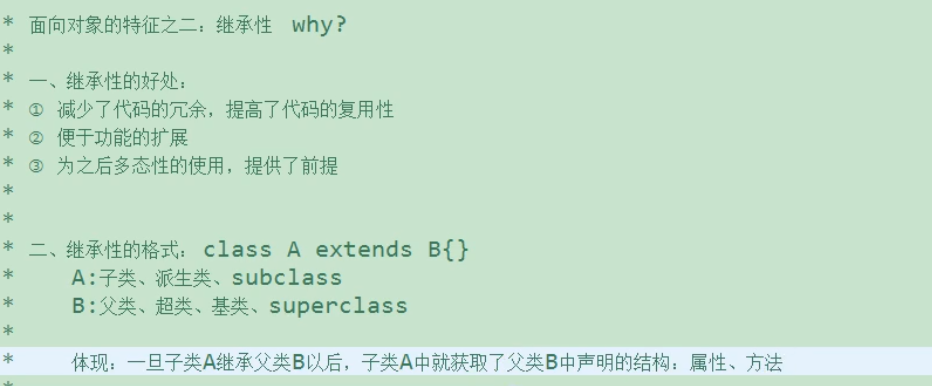



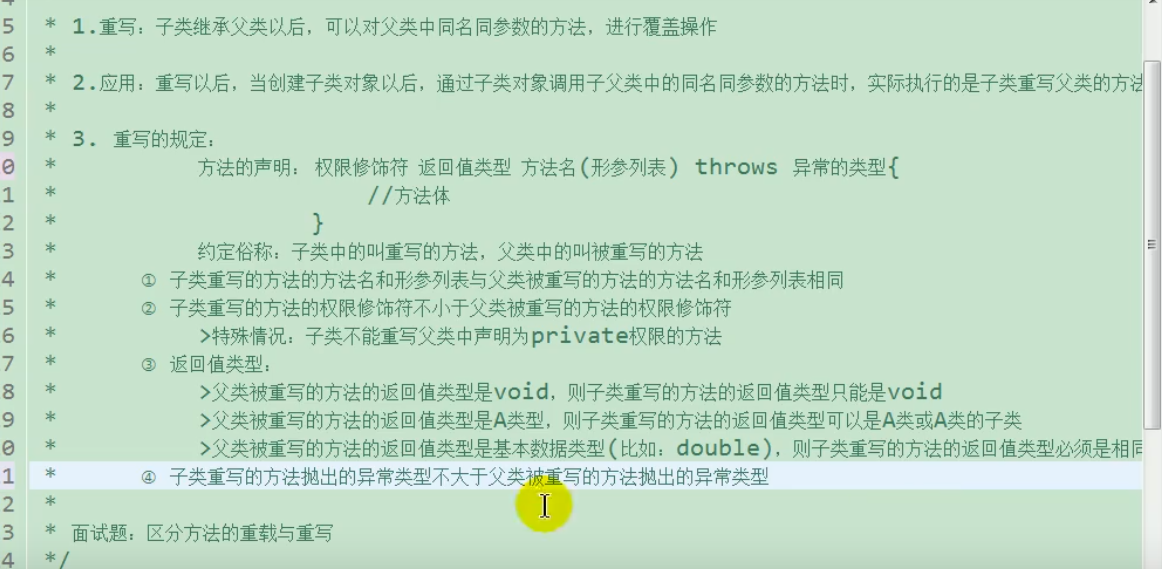

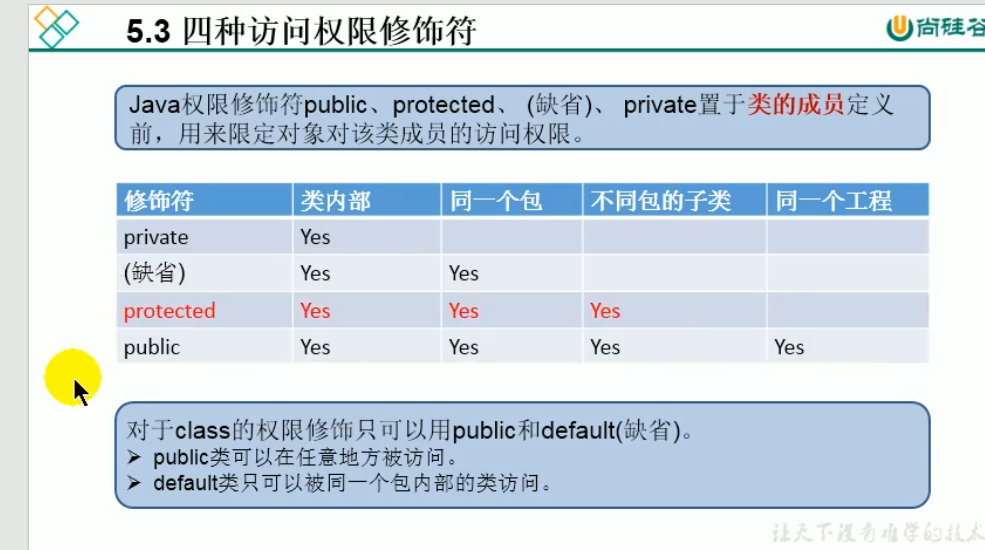


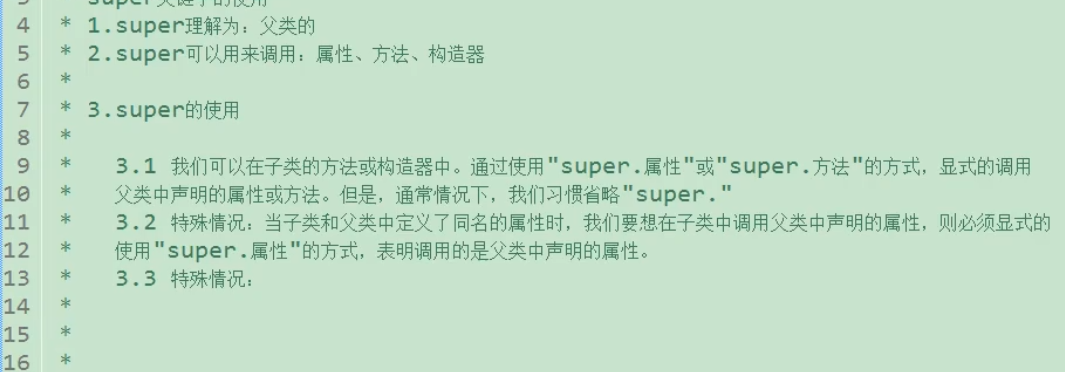

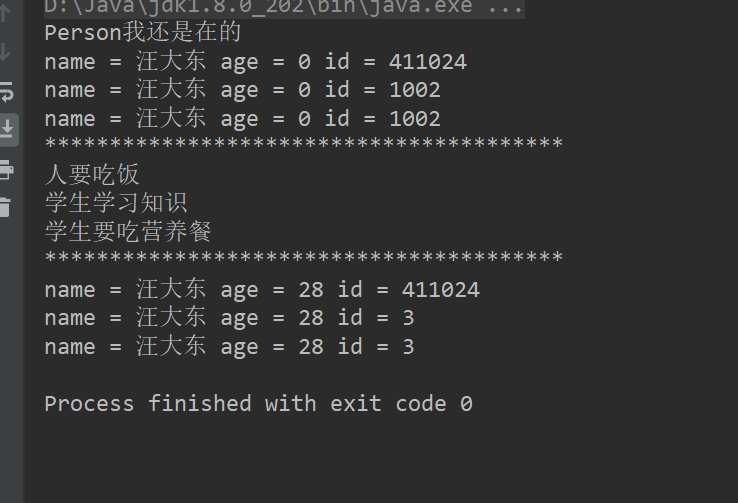

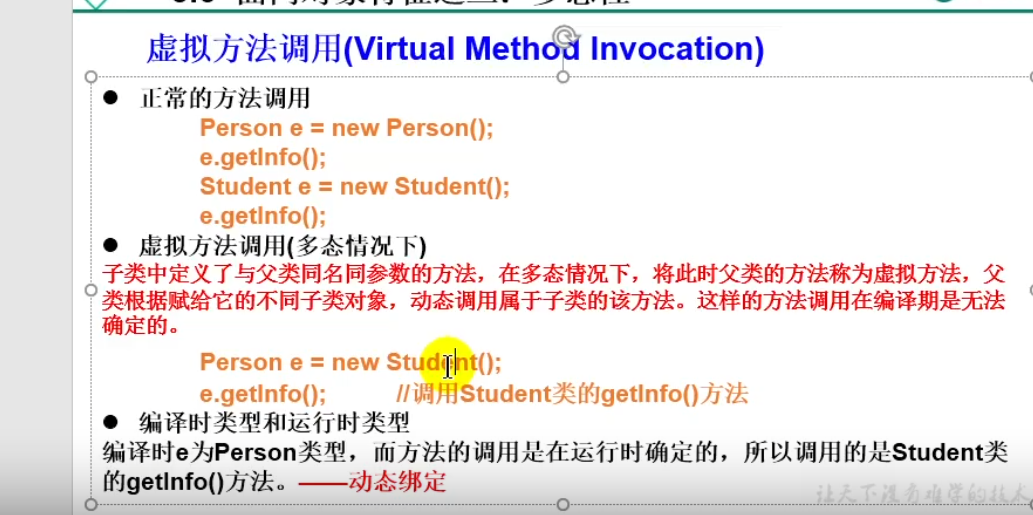
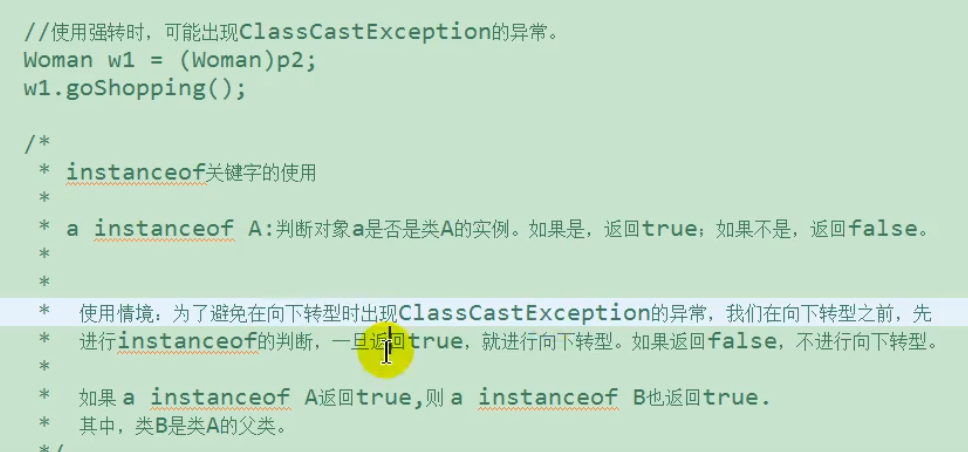
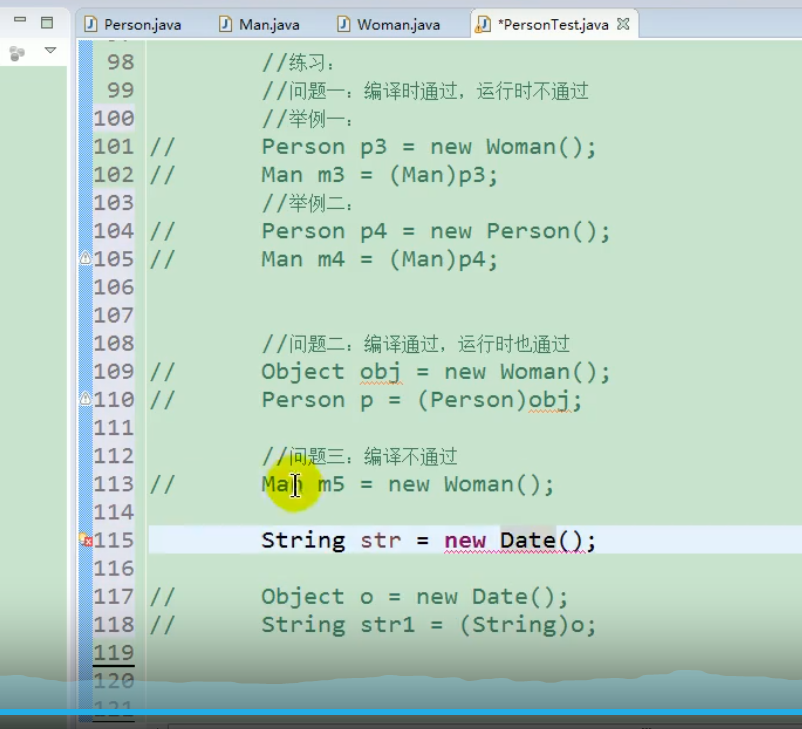

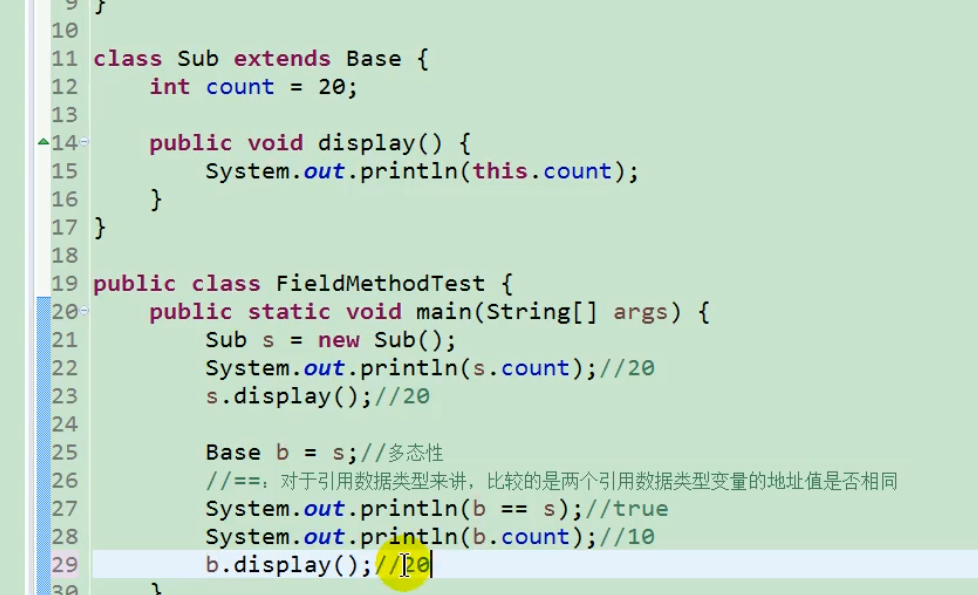
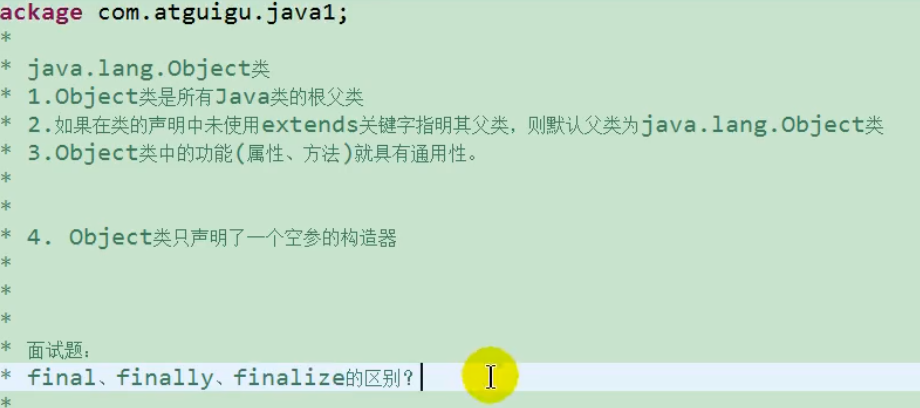

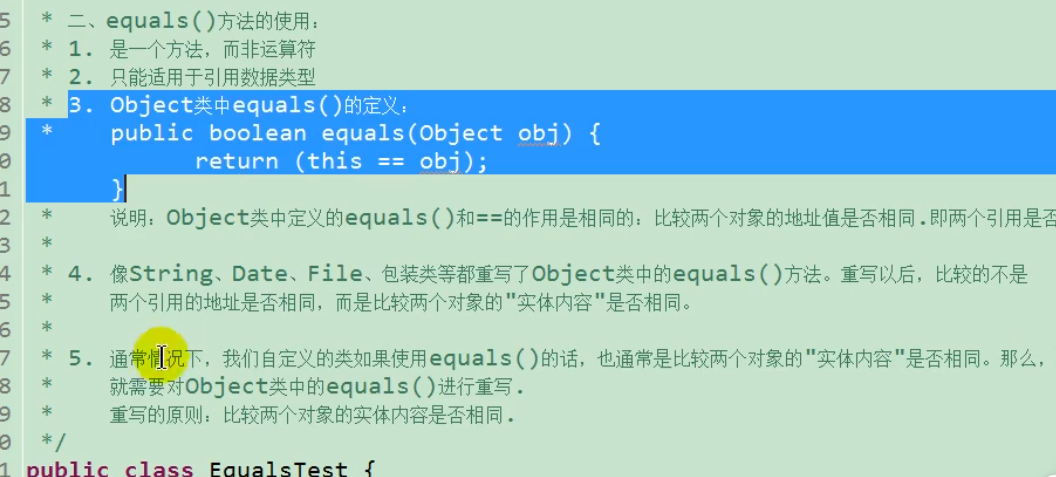
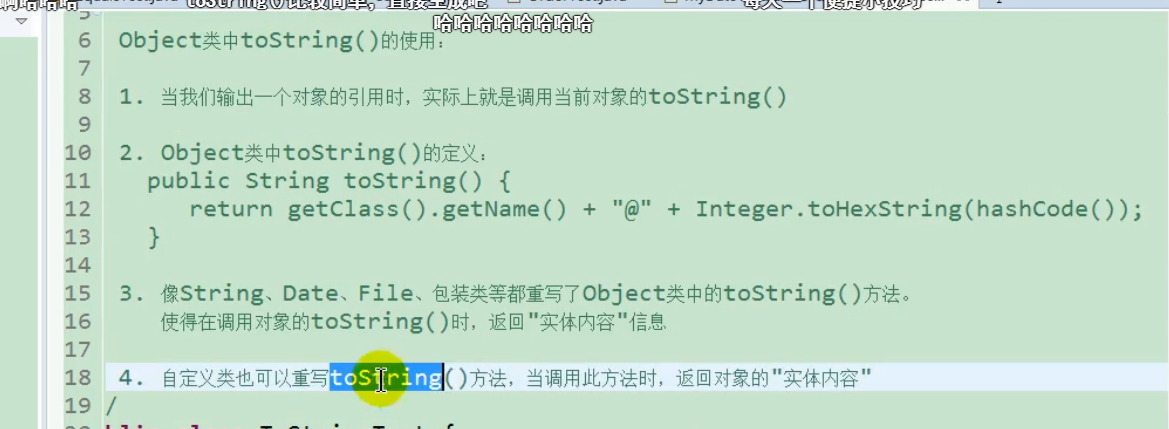



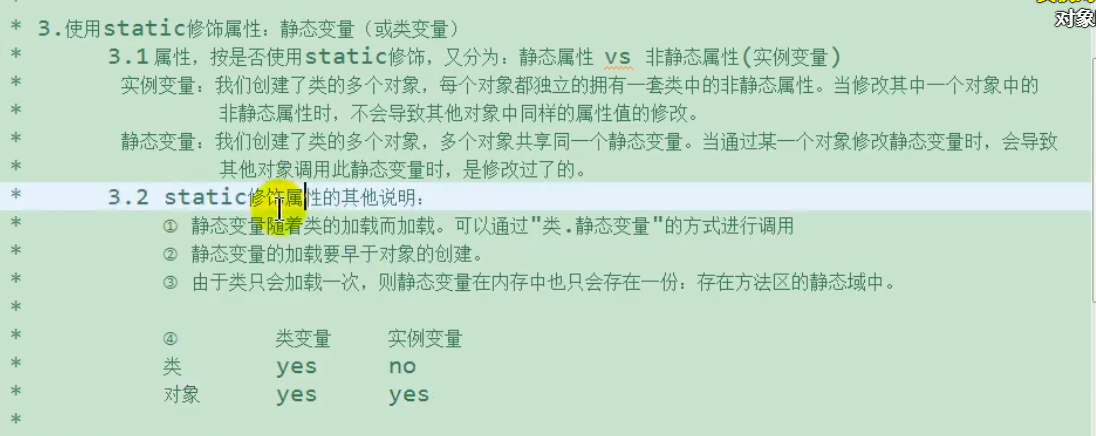
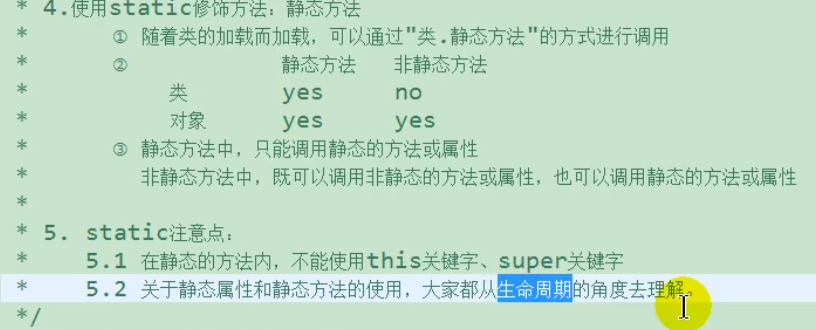

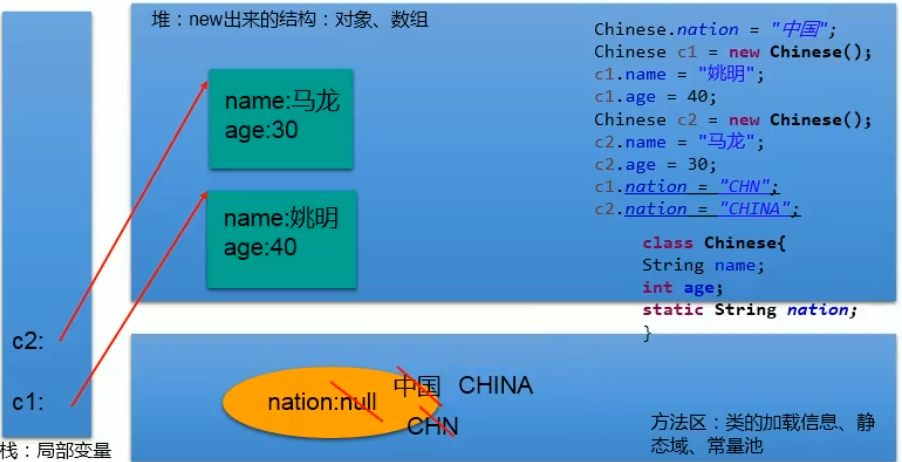

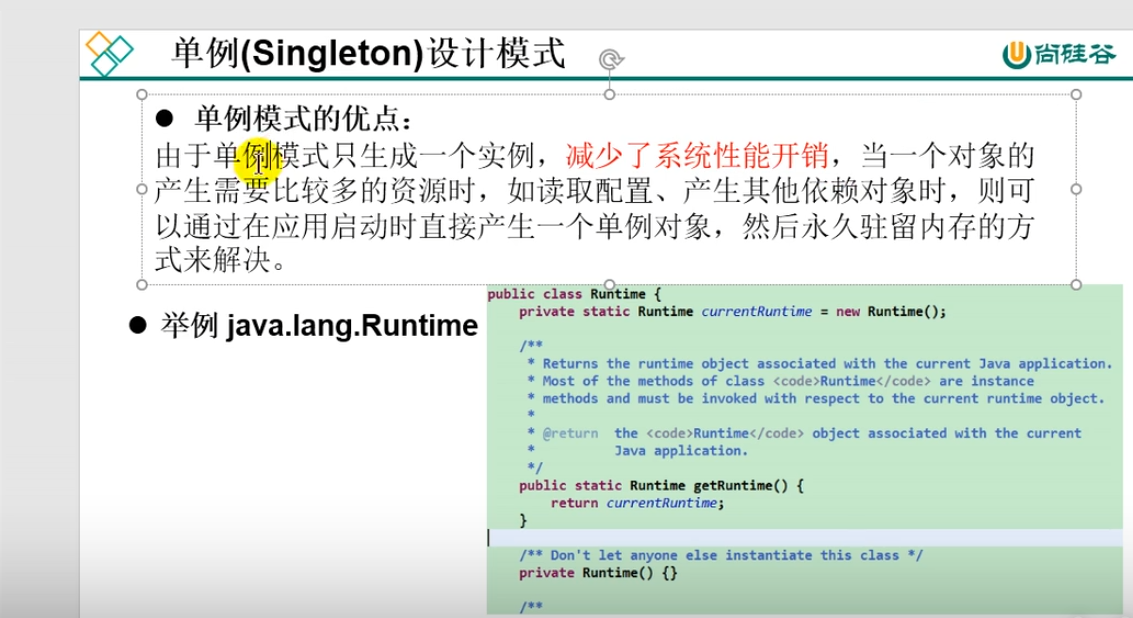
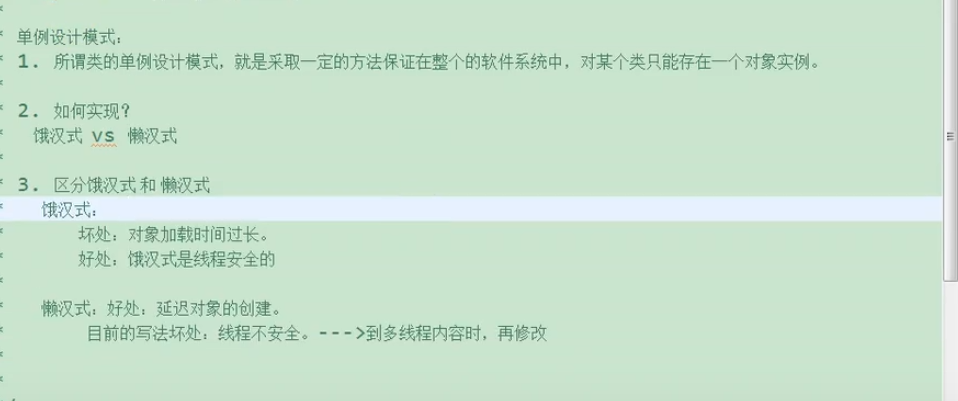
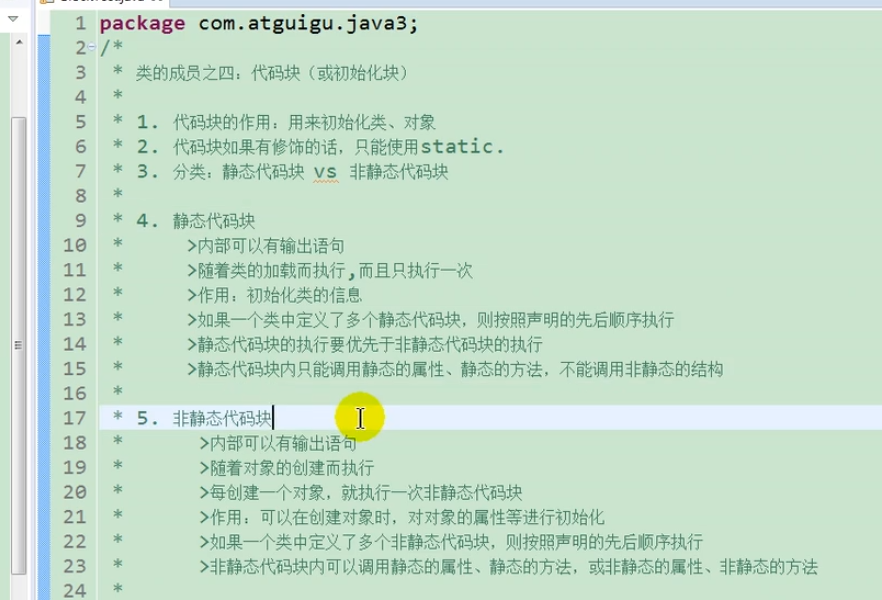
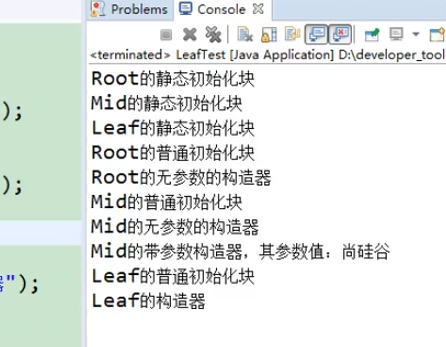
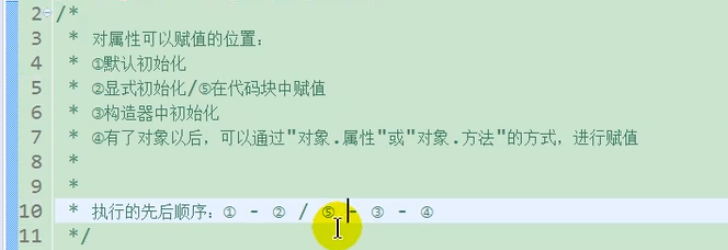
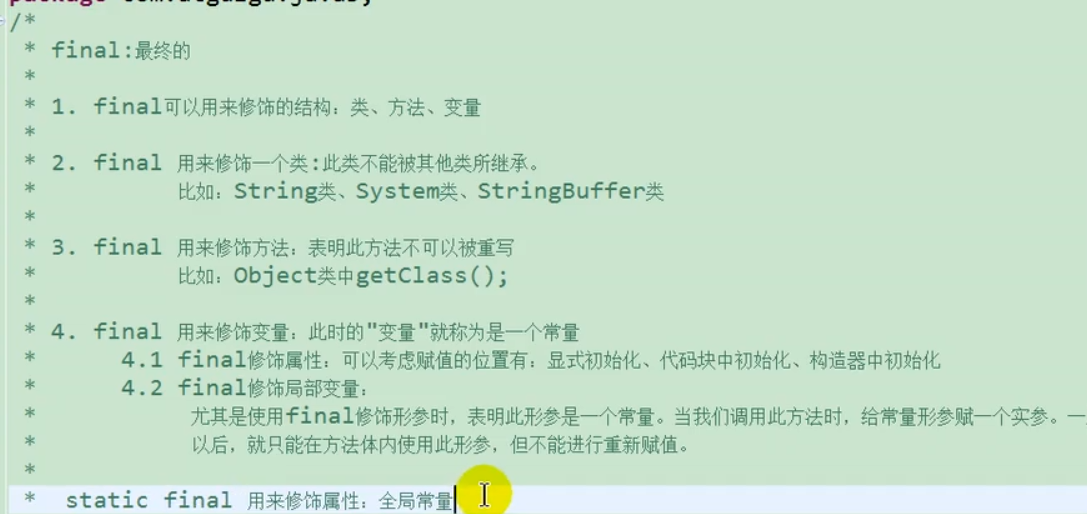
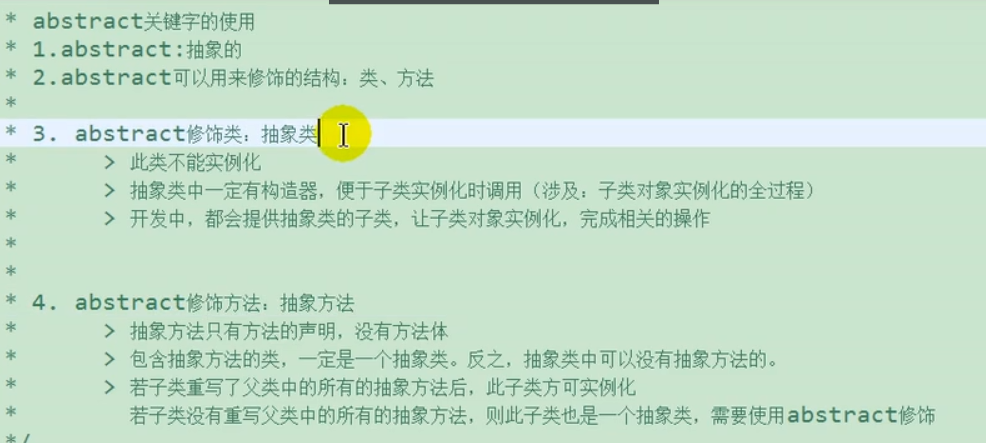
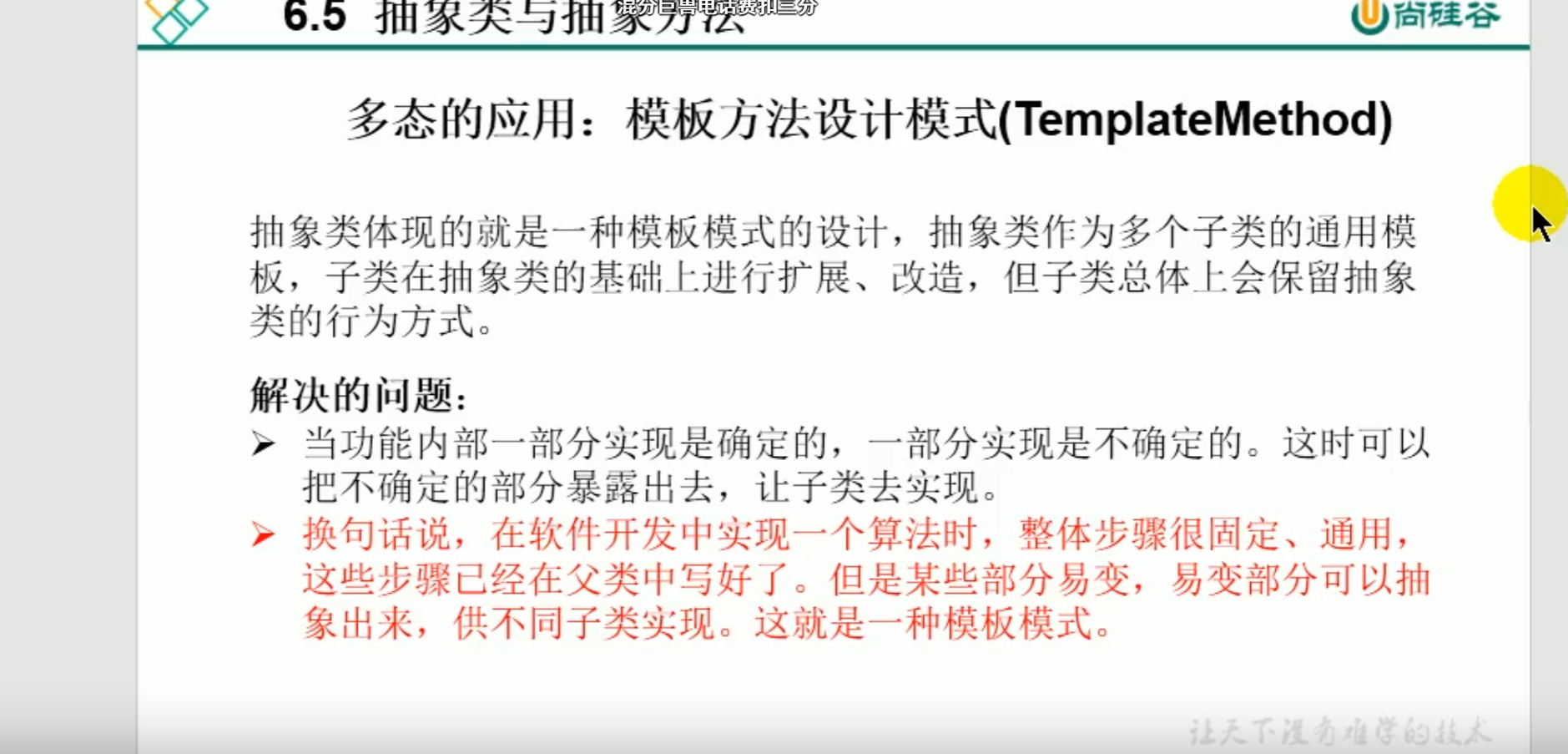

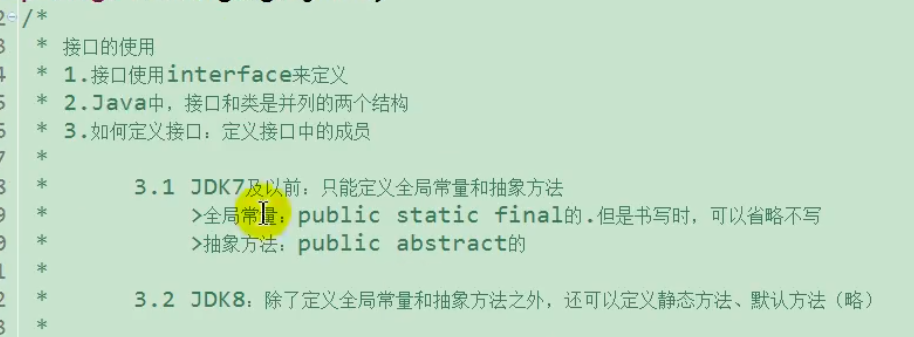
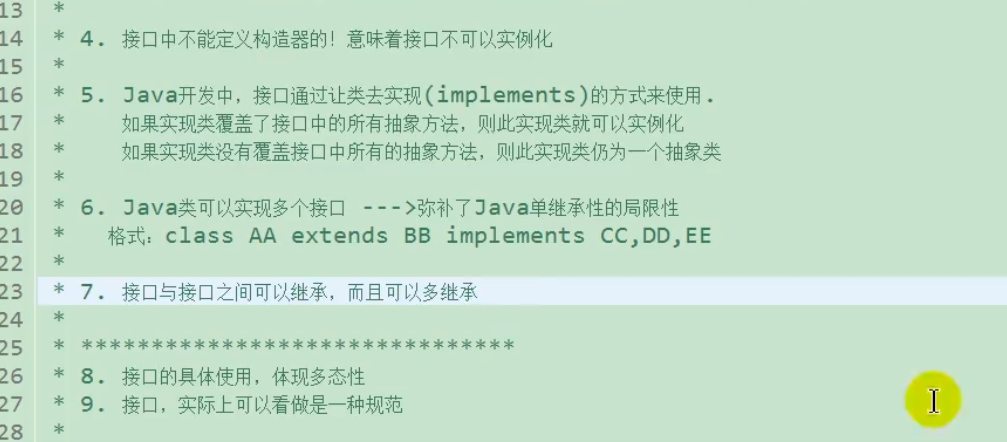
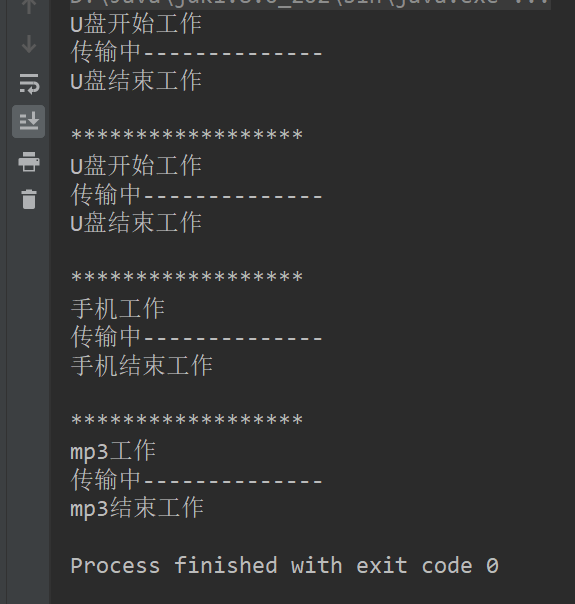
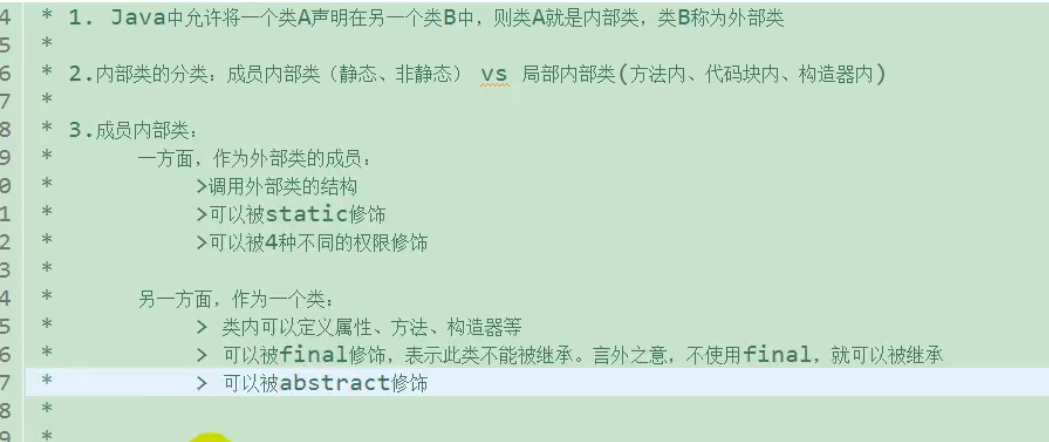

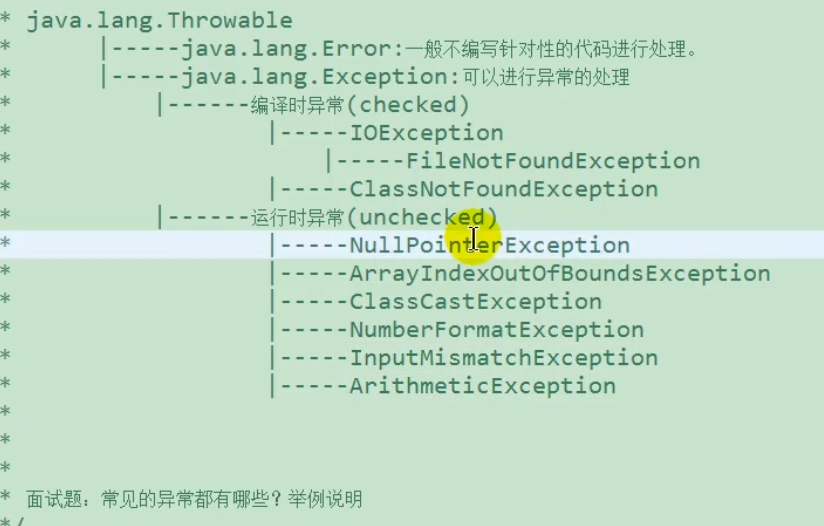

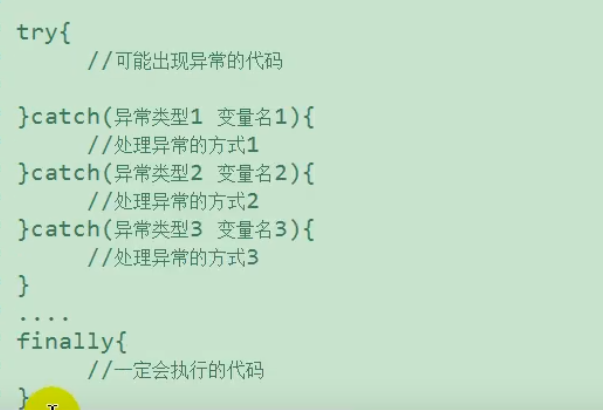
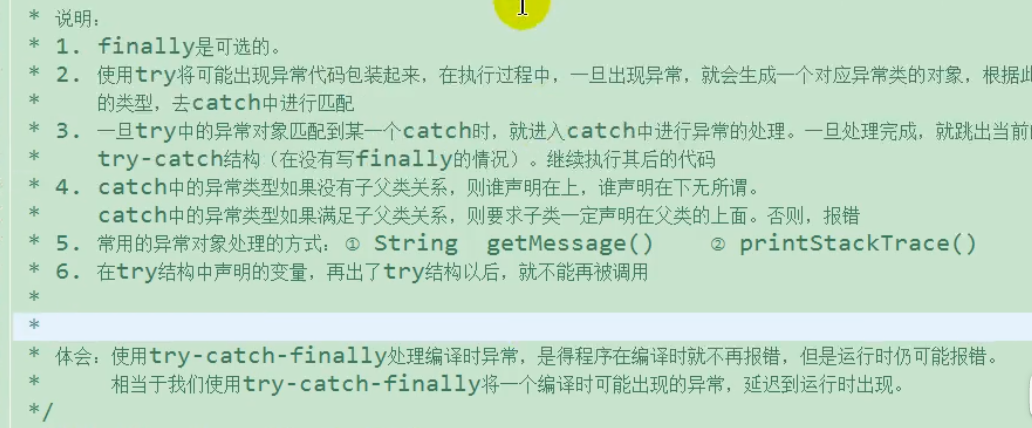





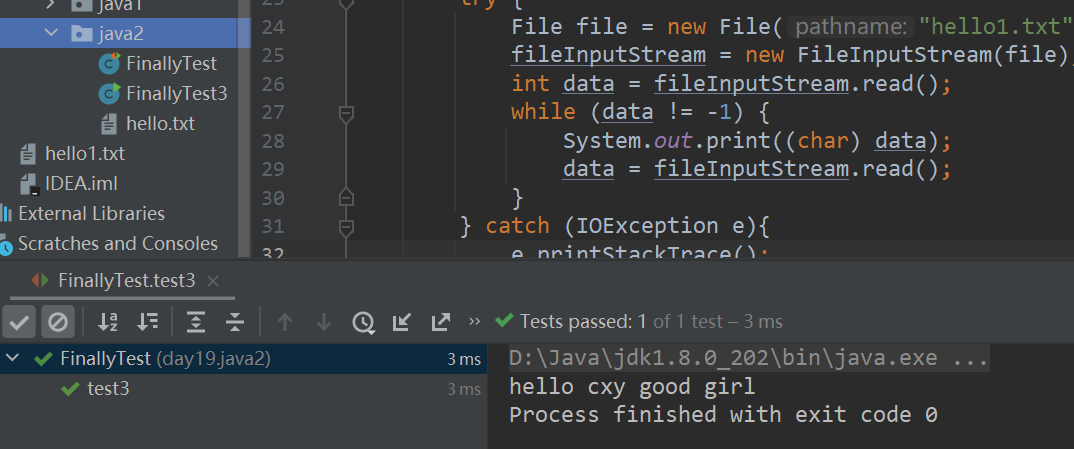
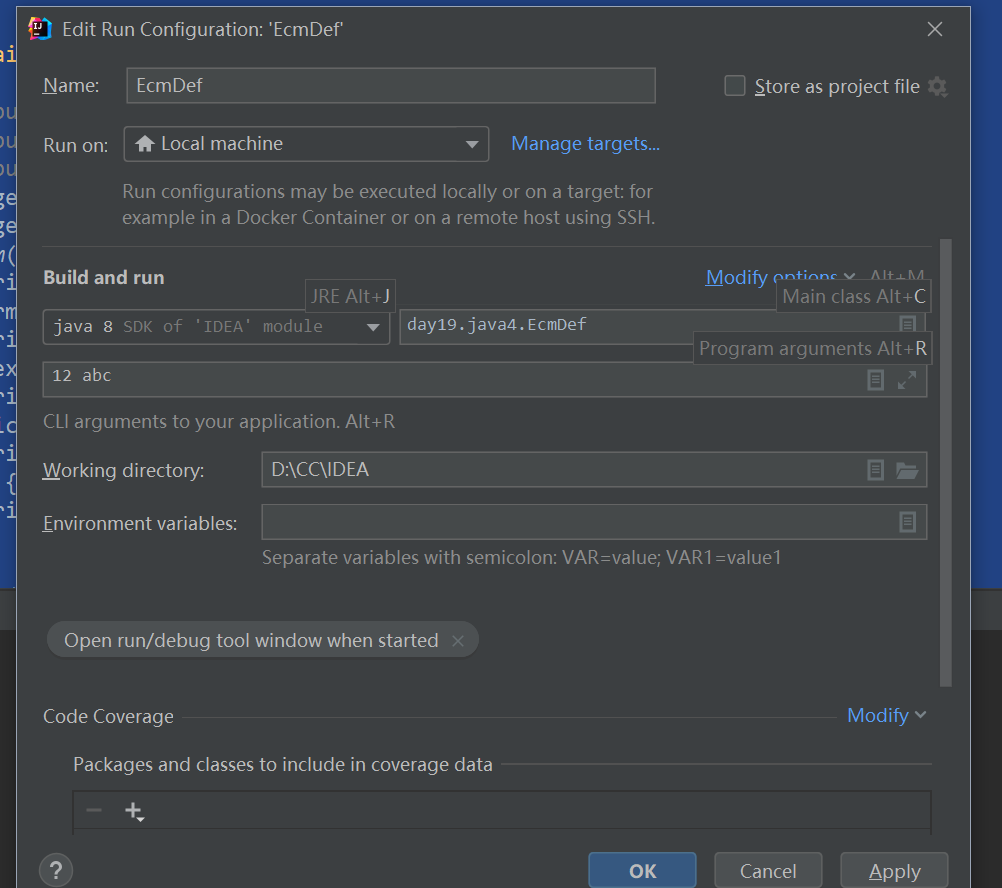
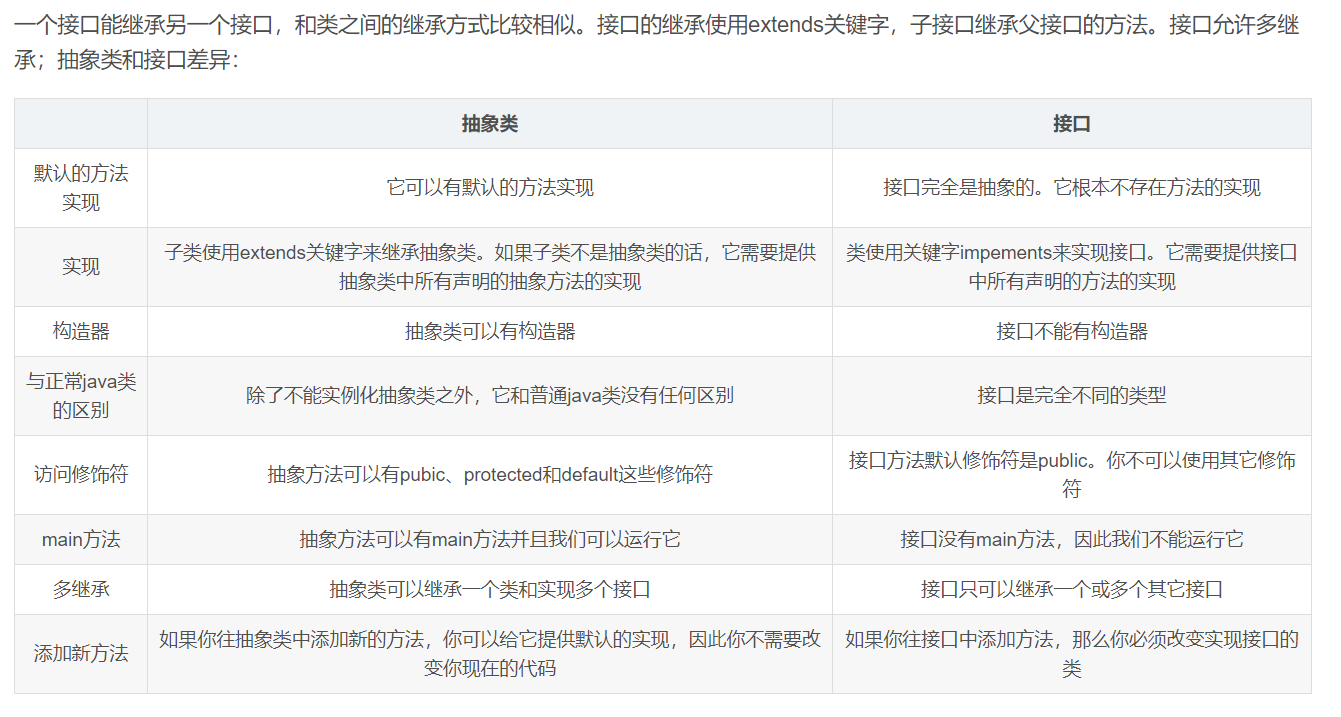
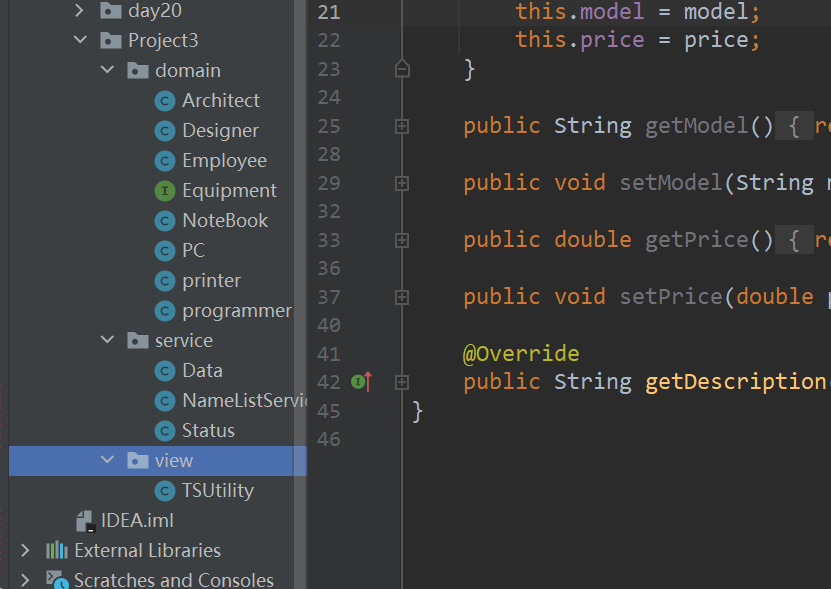
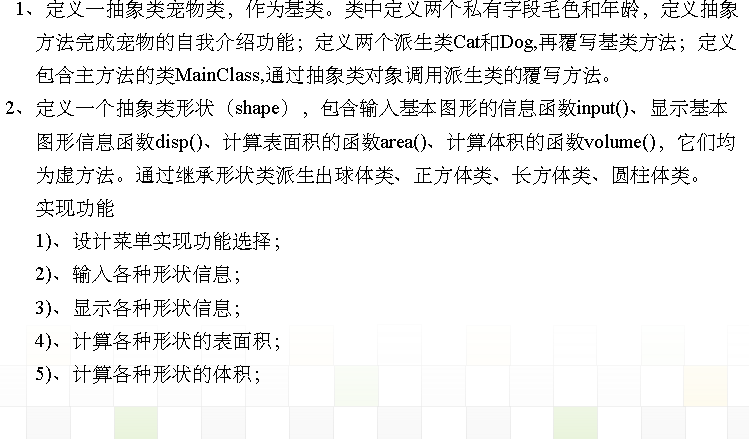
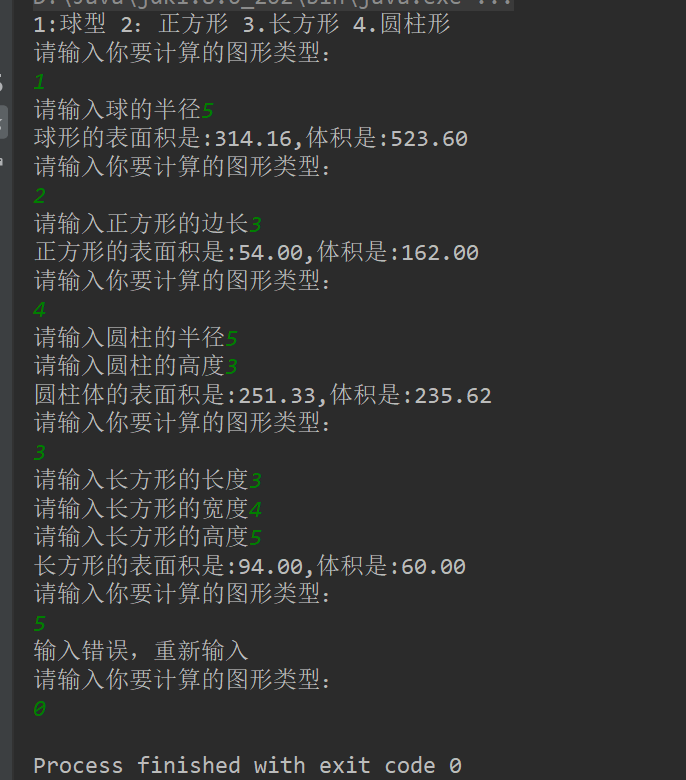

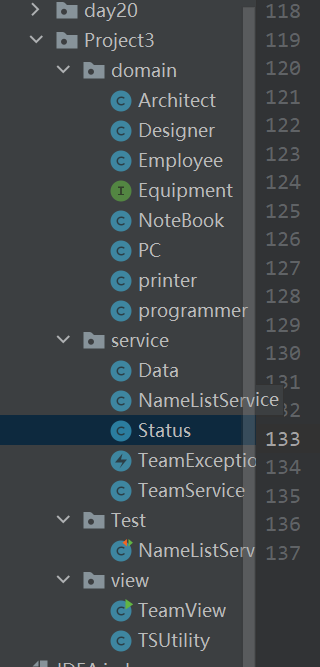


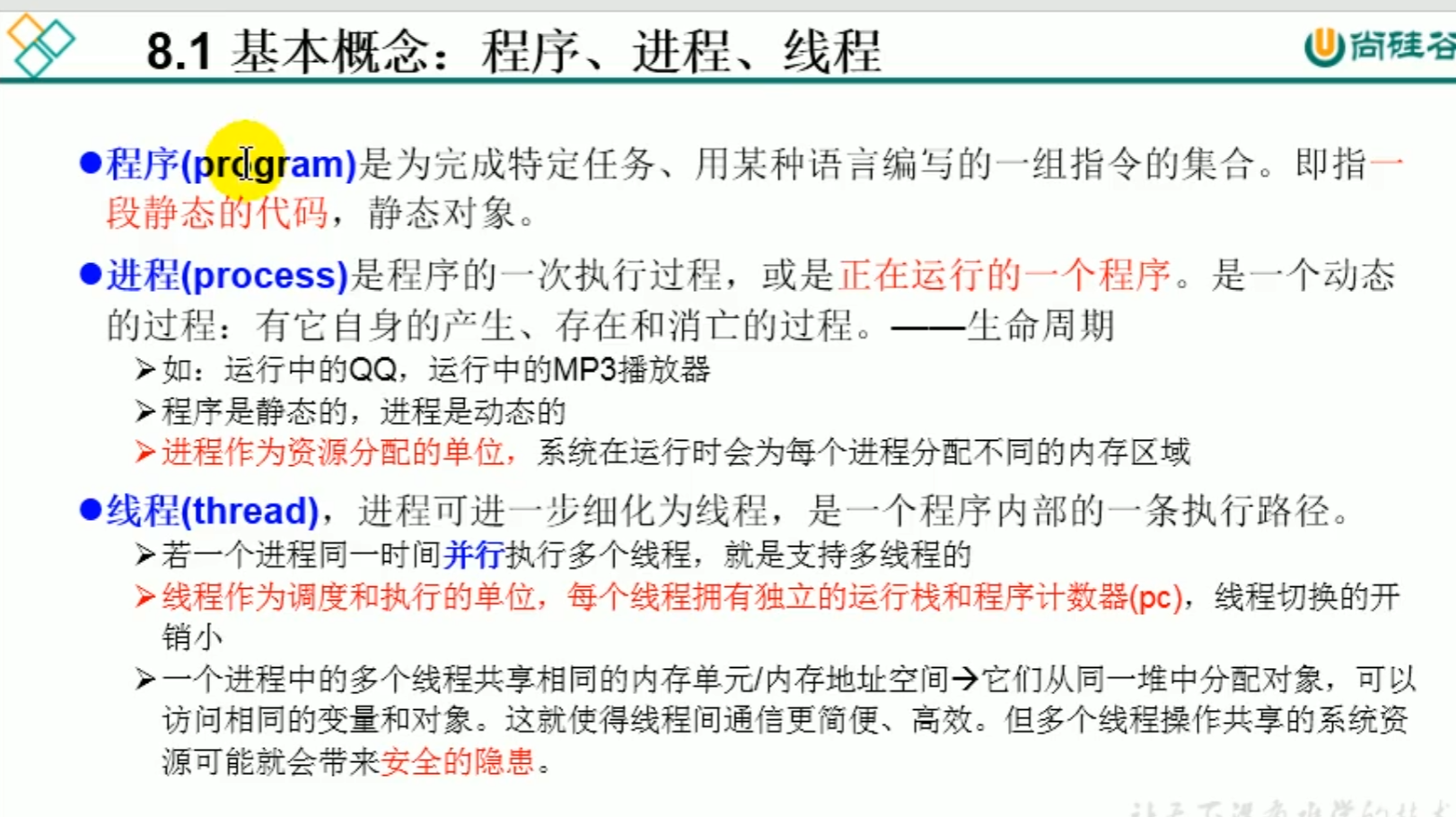
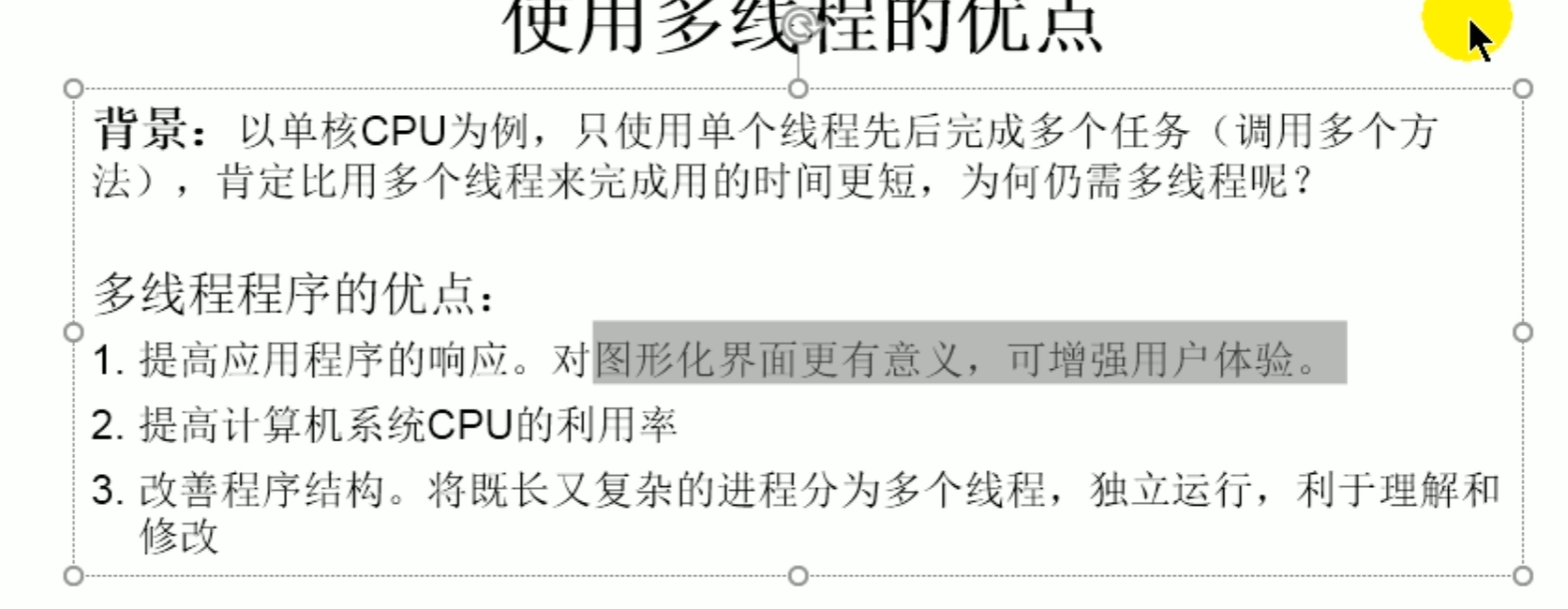
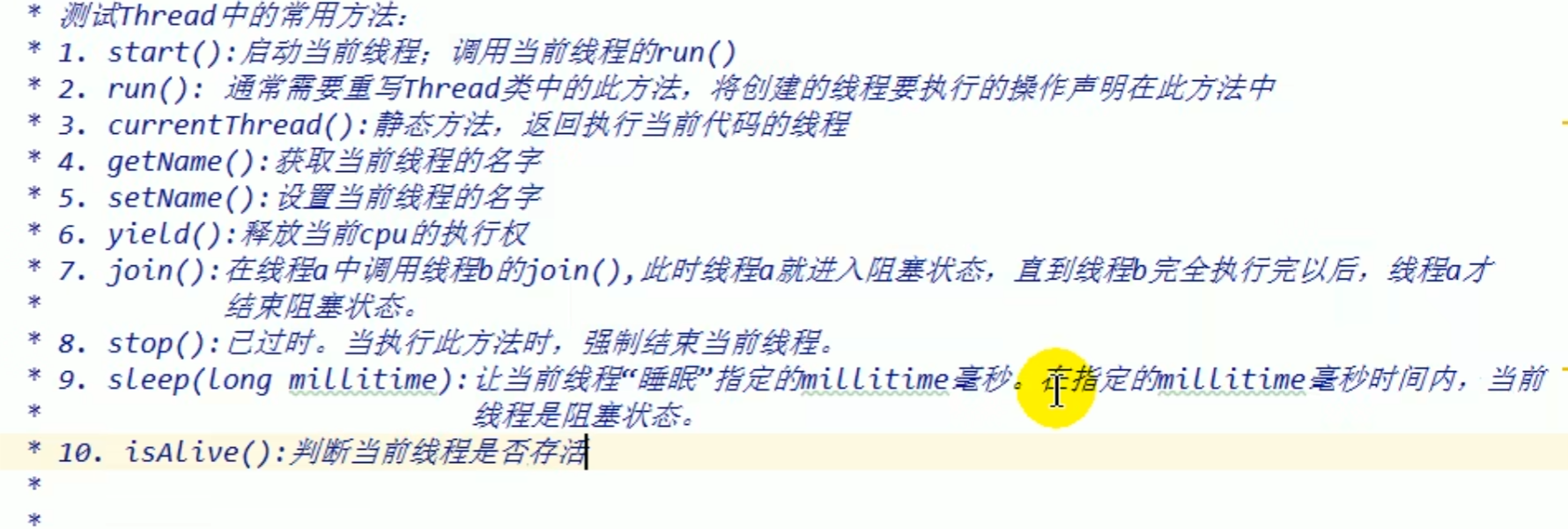
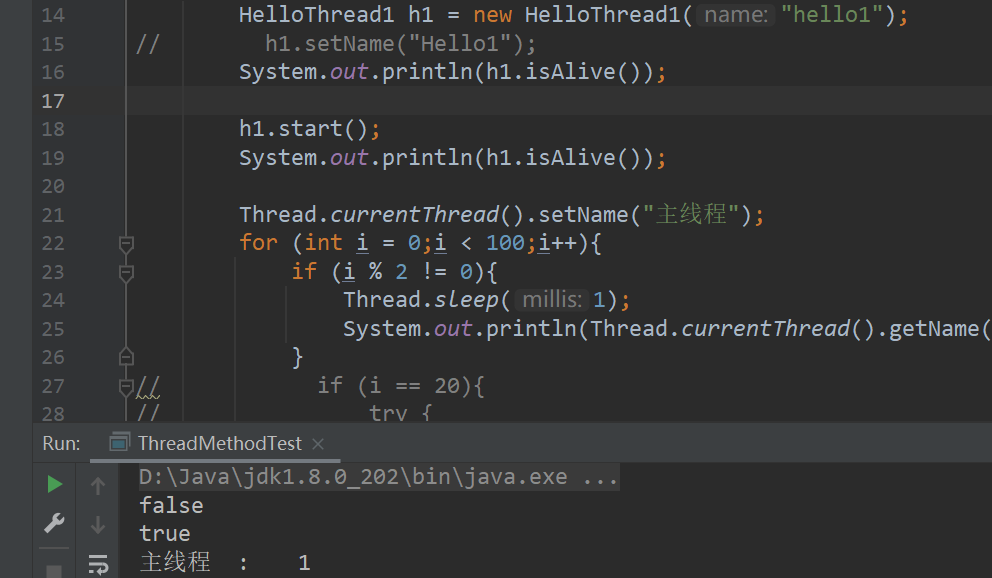
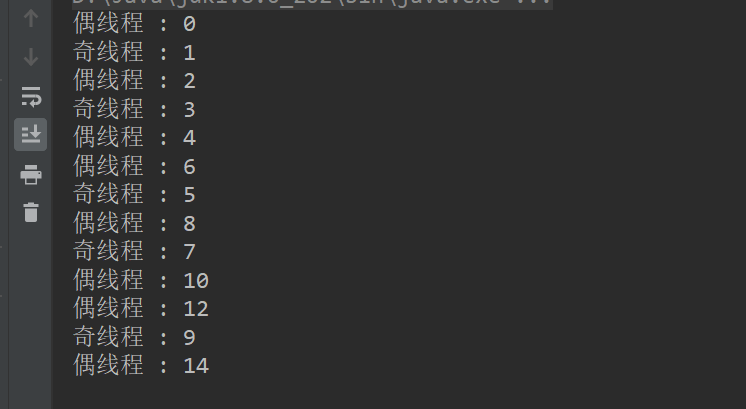
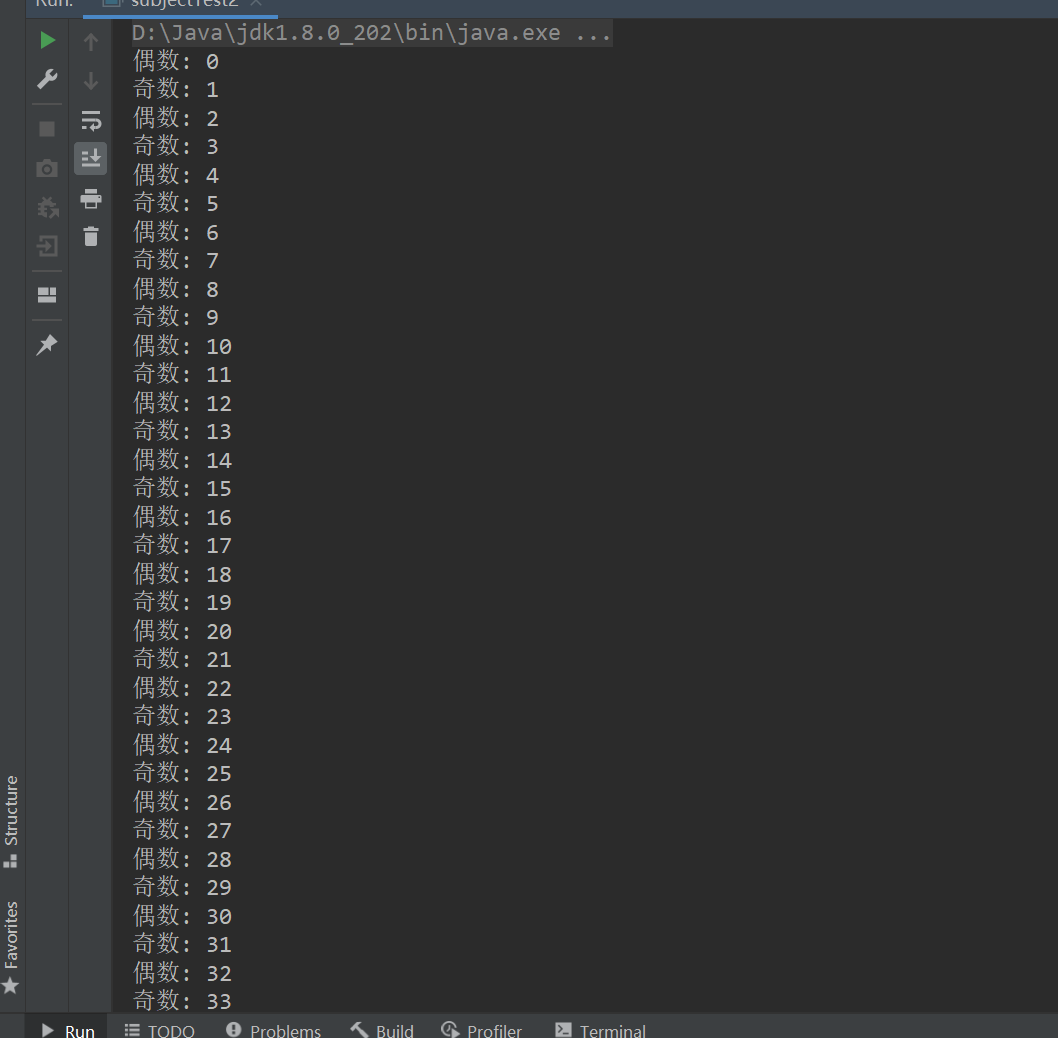
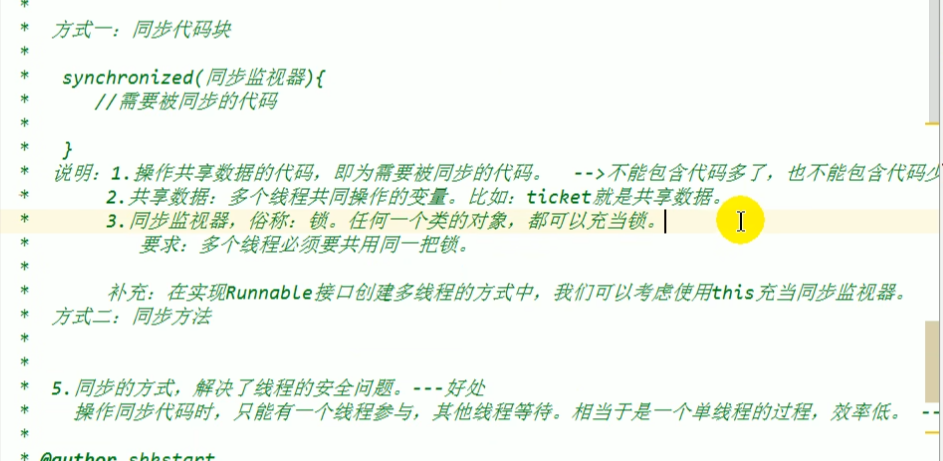
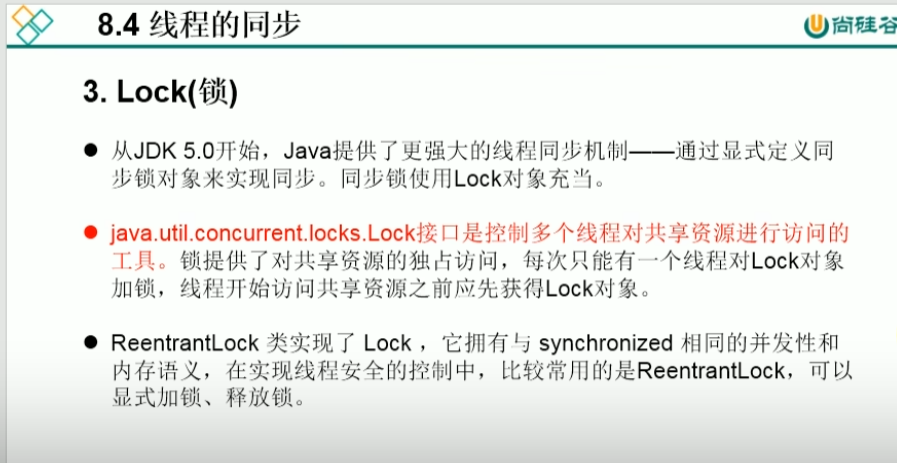



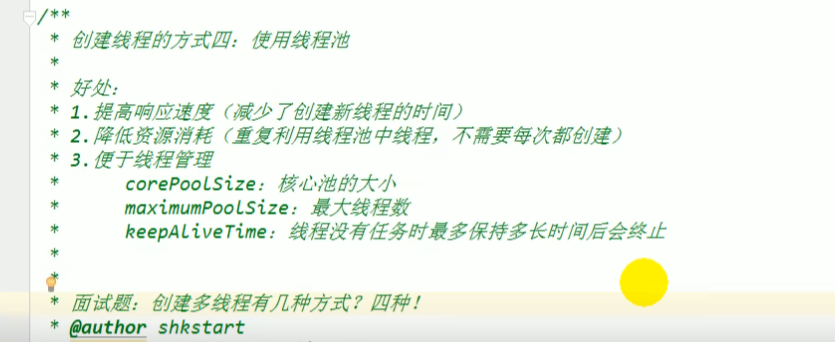
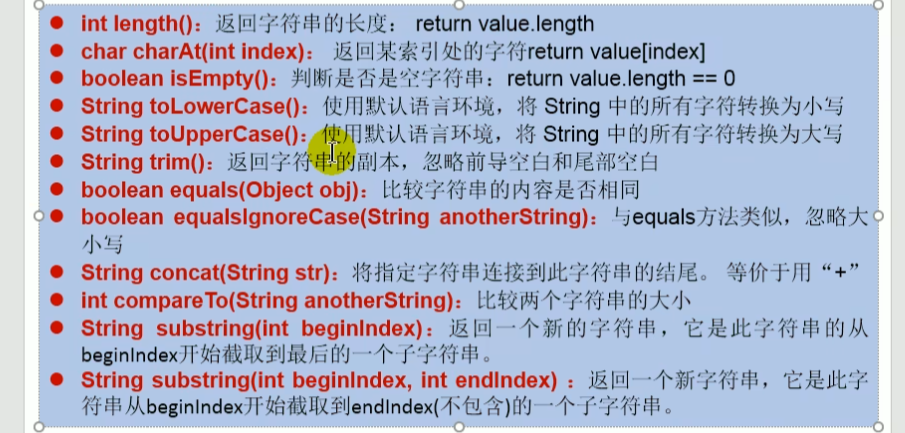
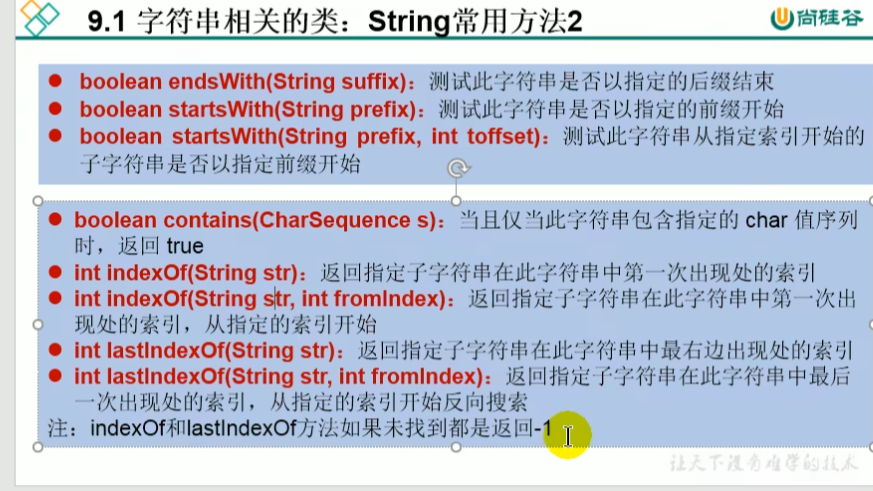
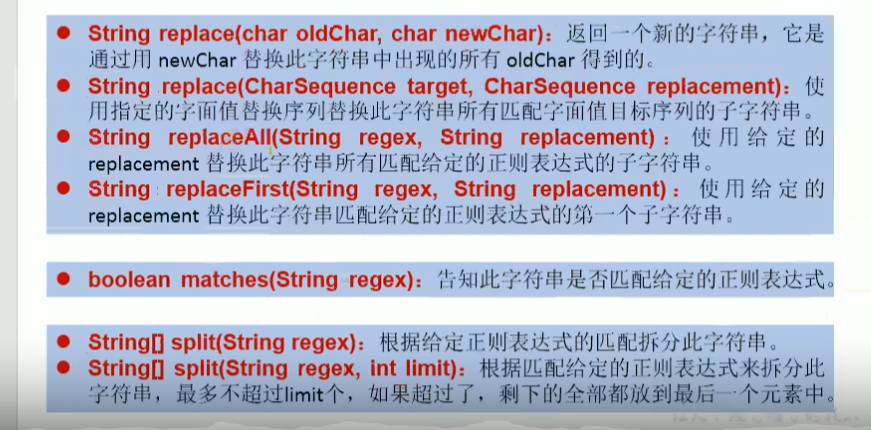

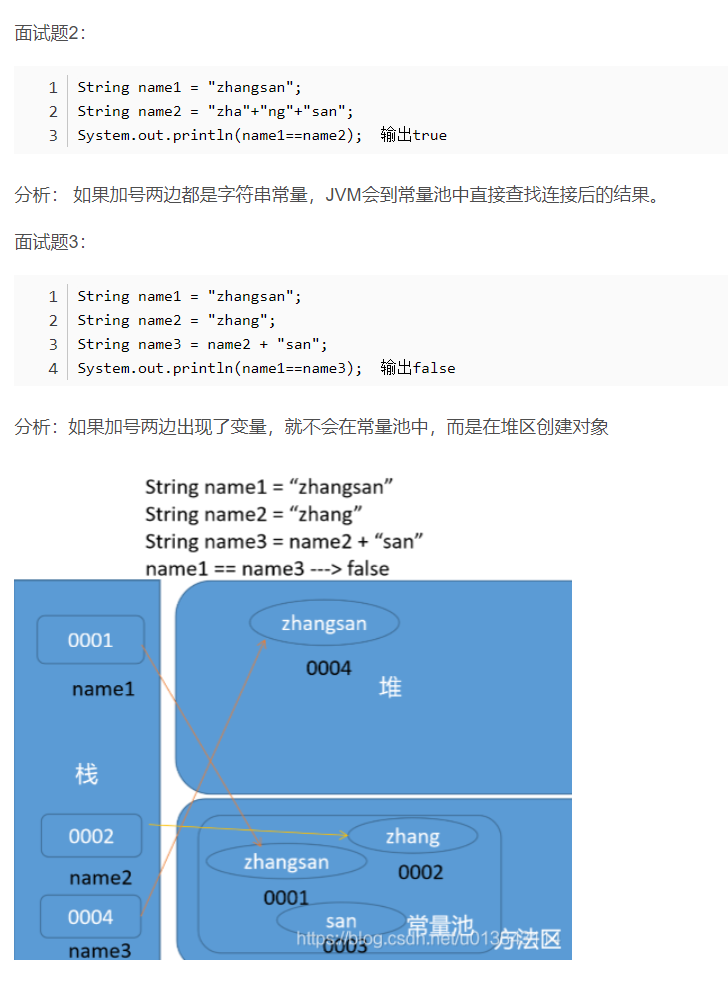
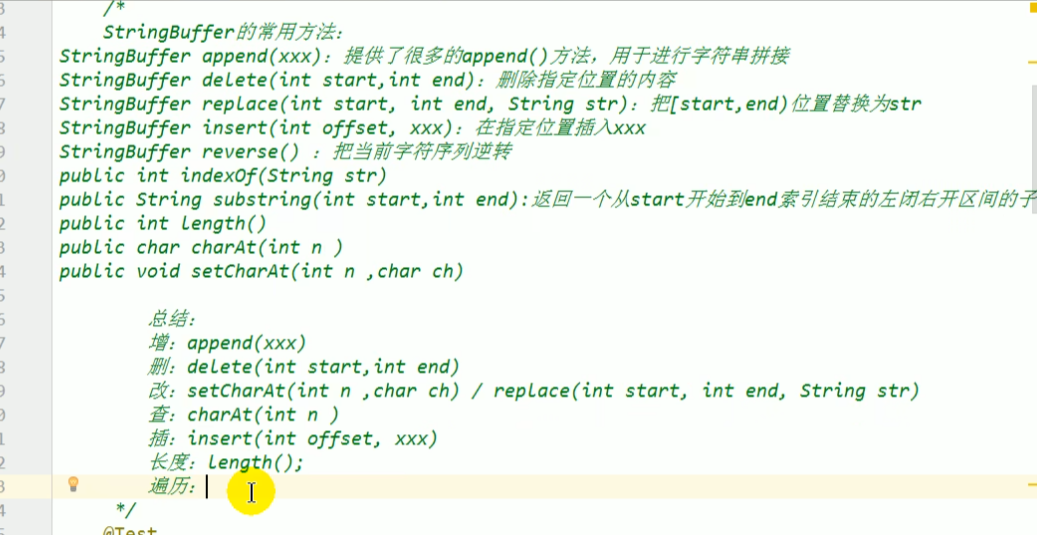



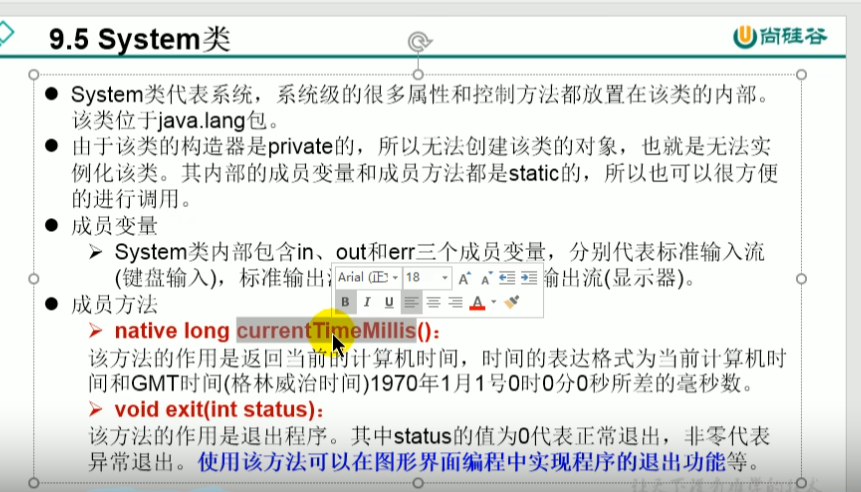
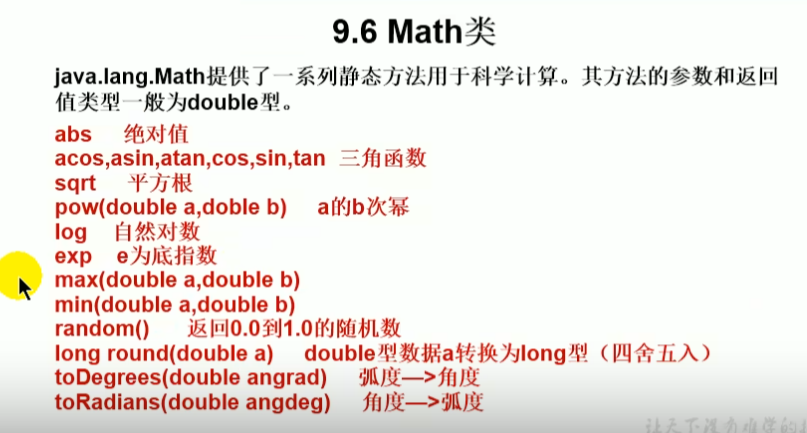
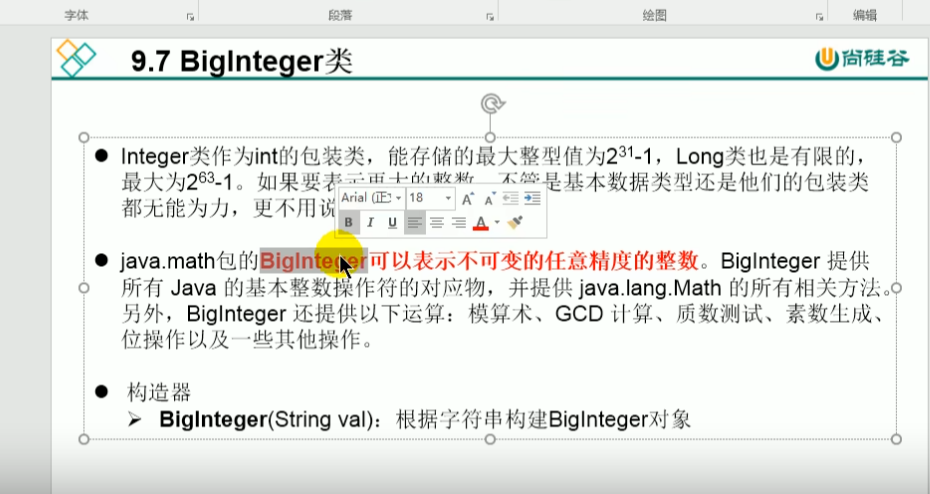
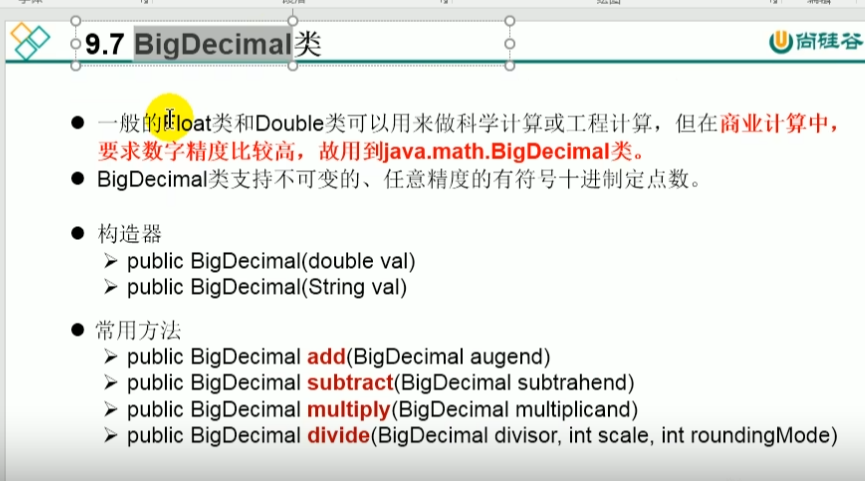

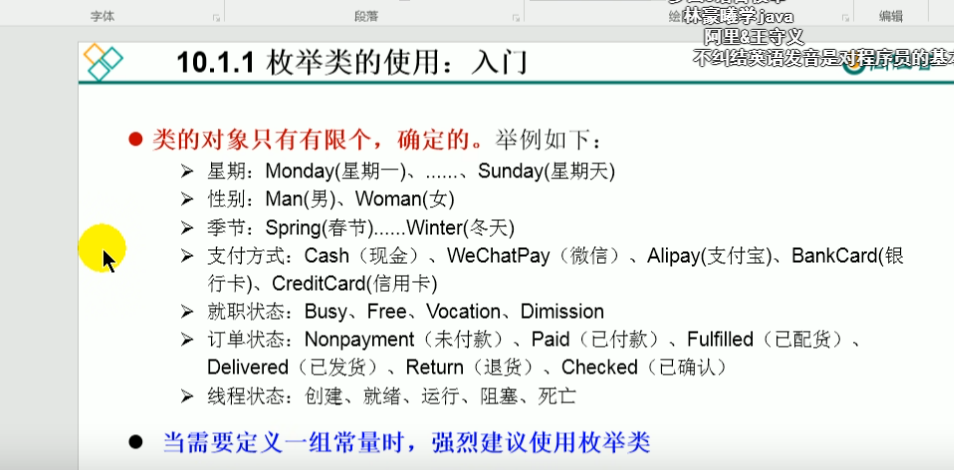
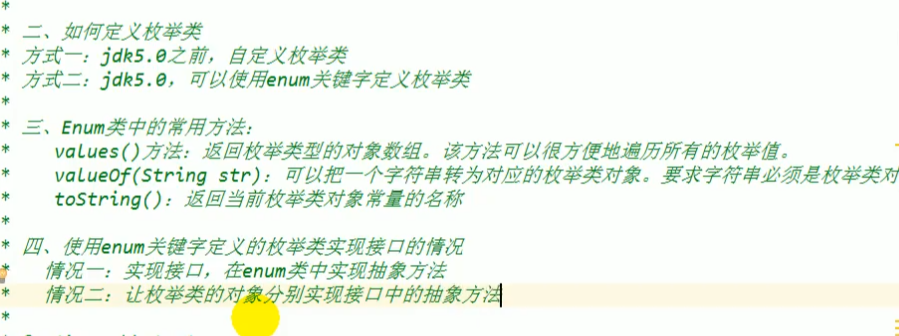
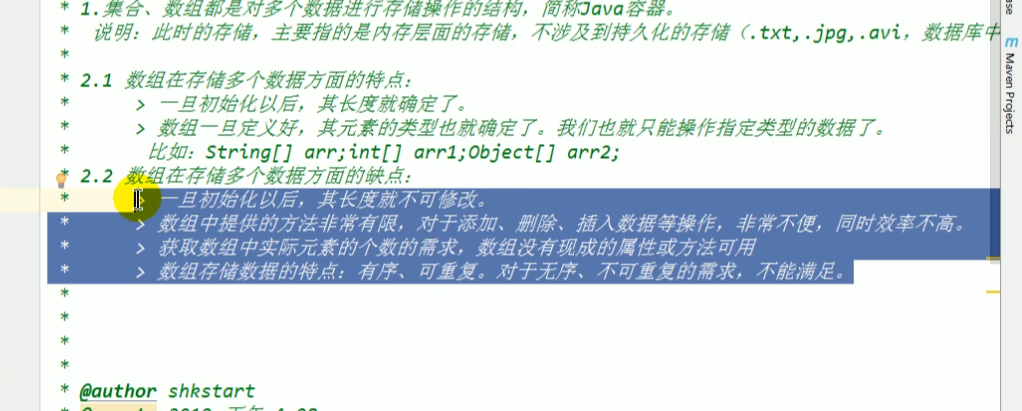
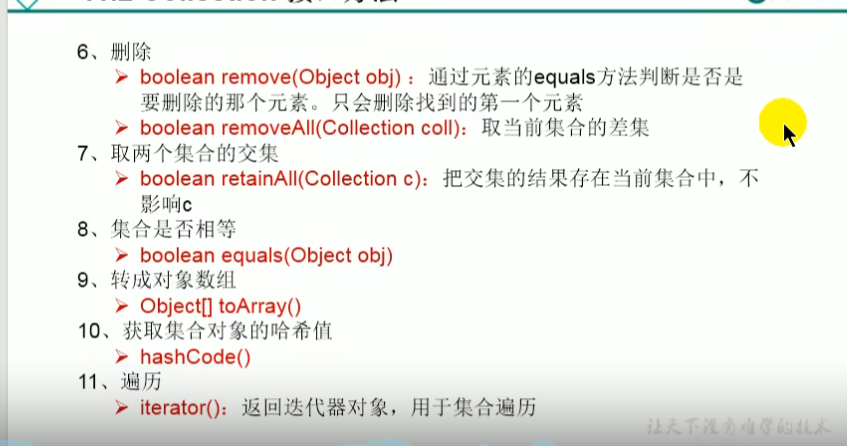
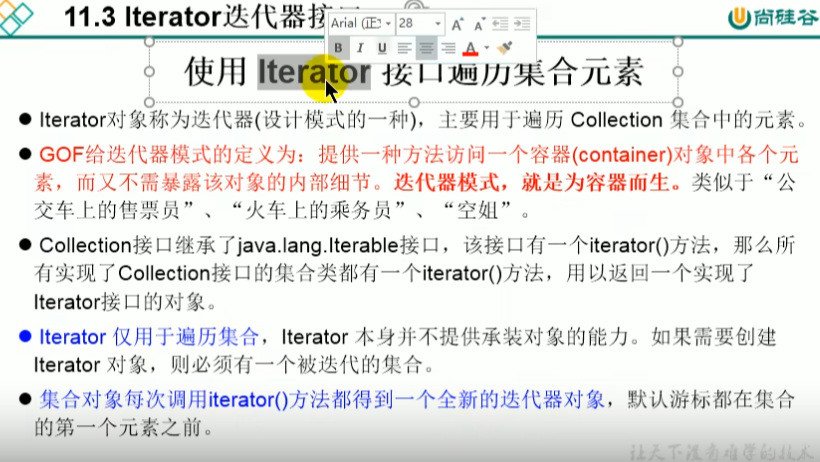
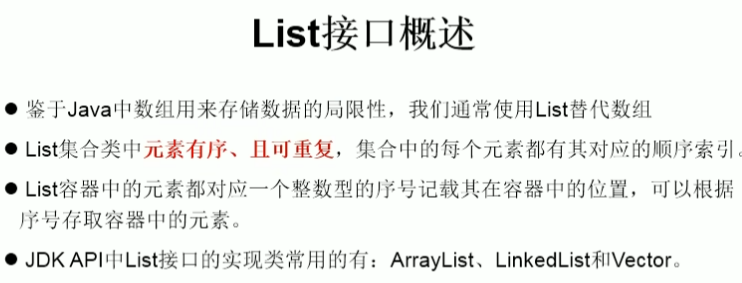

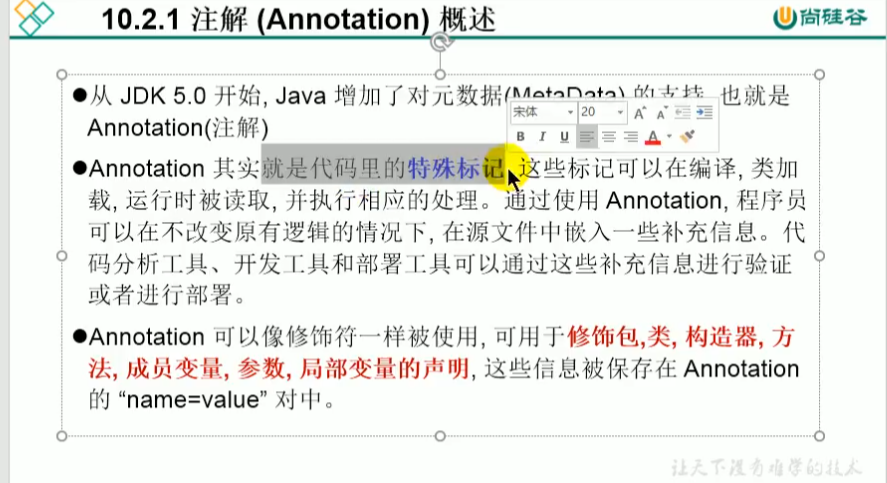 ’
’